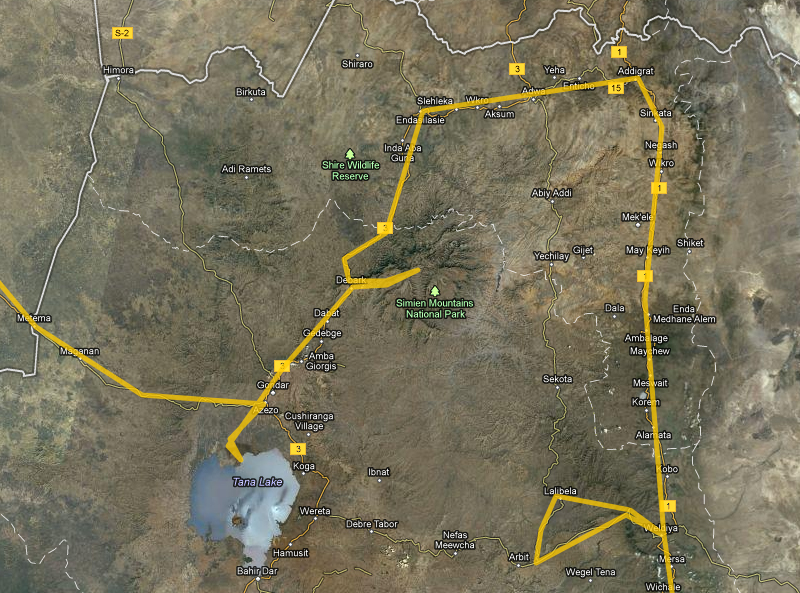Ethiopia, Part 5: Off-roading in the Highlands
— Ethiopia — 9 min read
10 -12 July 2011
North of the Semien Mountains National Park in Ethiopia, it gets remote. Most tourists turn south and head back or fly over to Axum to view its historical stelae. But since I have my own rugged transportation, I am free to wander remote paths through less-visited areas. With sanDRina chugging along in fine form, I set off to cross the Ethiopian Highlands from Debark to Shire and into Axum.
This stretch of the northern loop is the last bit to get paved over and I was glad to experience it before asphalt tames the ride. Construction was on-going and that meant there were a few diversions and loose rocks and sandy stretches to cross. The rainy season had properly started and I was bit hesitant about tackling the muddy tracks, but my mud-riding skills were up to par.
I stayed in small towns and was treated to epic landscapes, especially around Adi Arkay where I saw Ras Dashen, the highest peak in Ethiopia in all its glory on a clear day.
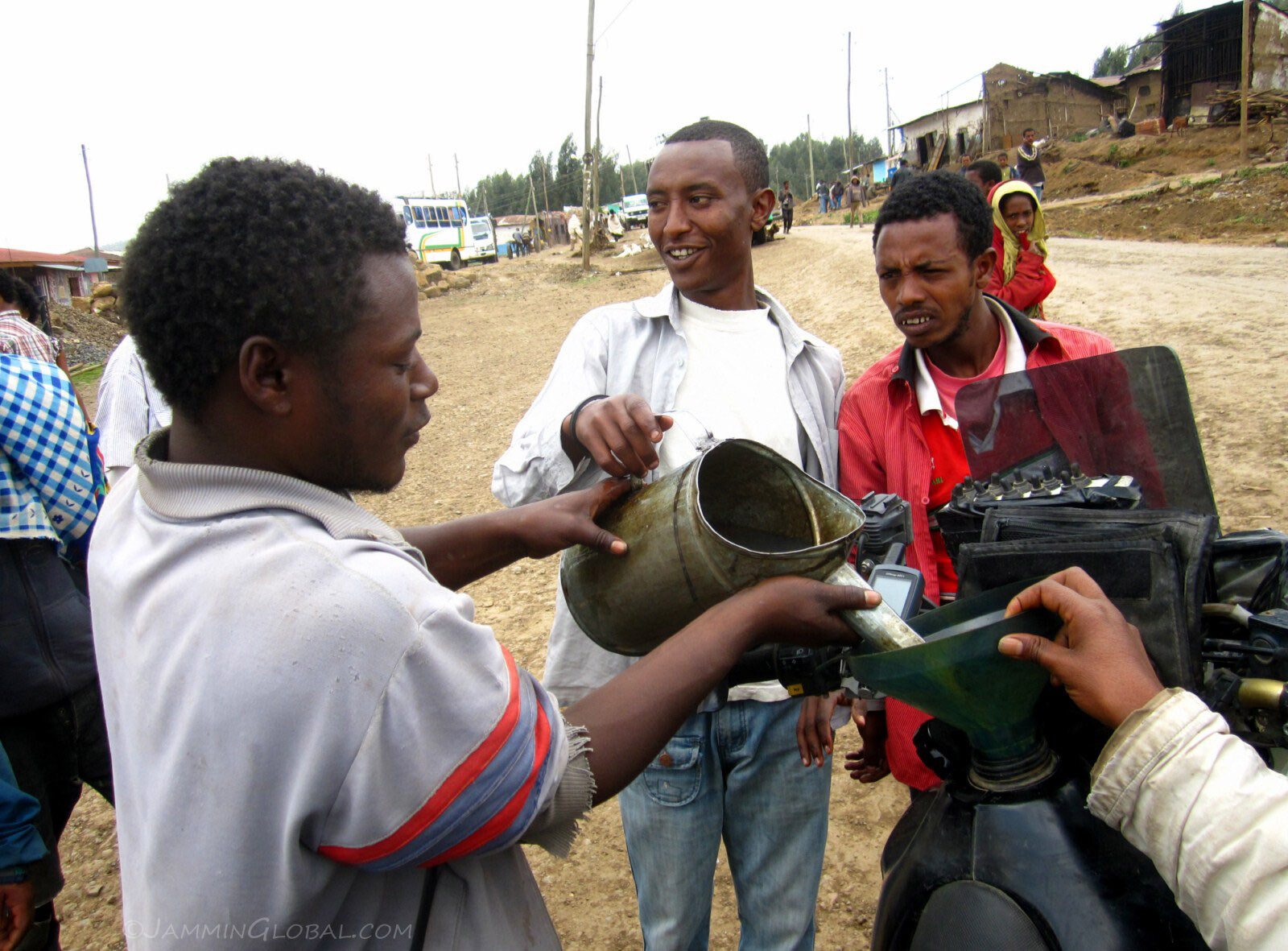 Fueling up in Debark with black market petrol, since there's no regular petrol station around. Regular petrol price in Ethiopia is Birr 22/L ($5/gal) and I paid Birr 32/L ($7.32/gal) here. The last regular station was in Gondar and the next one is in Shire, 300 kms (186 mi) away. I could easily do that stretch with my massive Safari Aqualine tank, but there was lots of elevation change coming up and I knew there'd be lots of first and second gear off-road riding, which greatly reduces fuel efficiency, so best to top up.
Fueling up in Debark with black market petrol, since there's no regular petrol station around. Regular petrol price in Ethiopia is Birr 22/L ($5/gal) and I paid Birr 32/L ($7.32/gal) here. The last regular station was in Gondar and the next one is in Shire, 300 kms (186 mi) away. I could easily do that stretch with my massive Safari Aqualine tank, but there was lots of elevation change coming up and I knew there'd be lots of first and second gear off-road riding, which greatly reduces fuel efficiency, so best to top up.
My route through northern Ethiopia. From Debark, I spent the first night in Adi Arkay, then the second night in Indabaguna before rolling into Axum. Click on it to go to the interactive version in Google Maps.
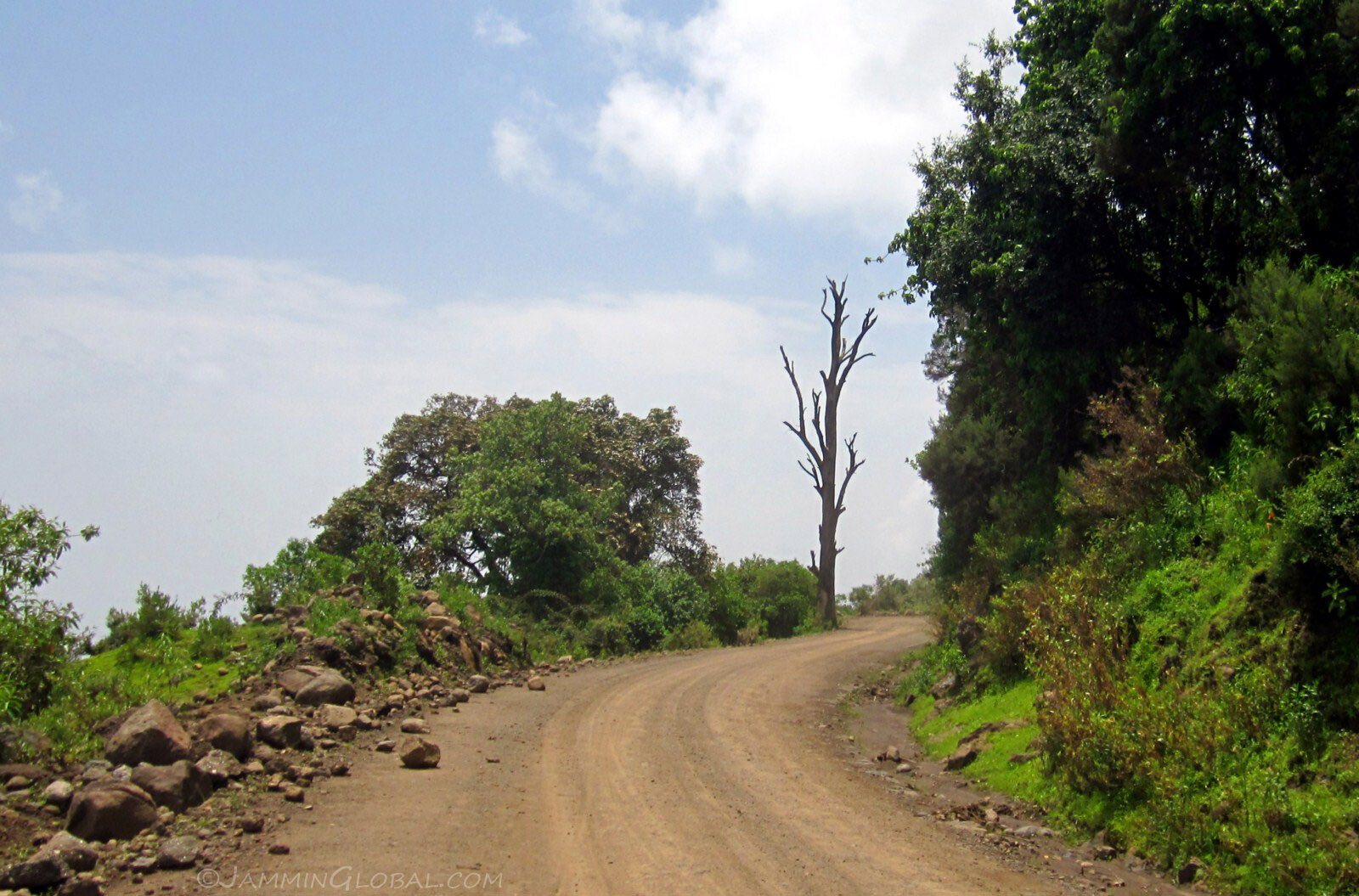 I was in for a treat. This road was constructed by the Italians in the 1940s, during their brief occupation and the grades, switch-backs and routing was excellent.
I was in for a treat. This road was constructed by the Italians in the 1940s, during their brief occupation and the grades, switch-backs and routing was excellent.
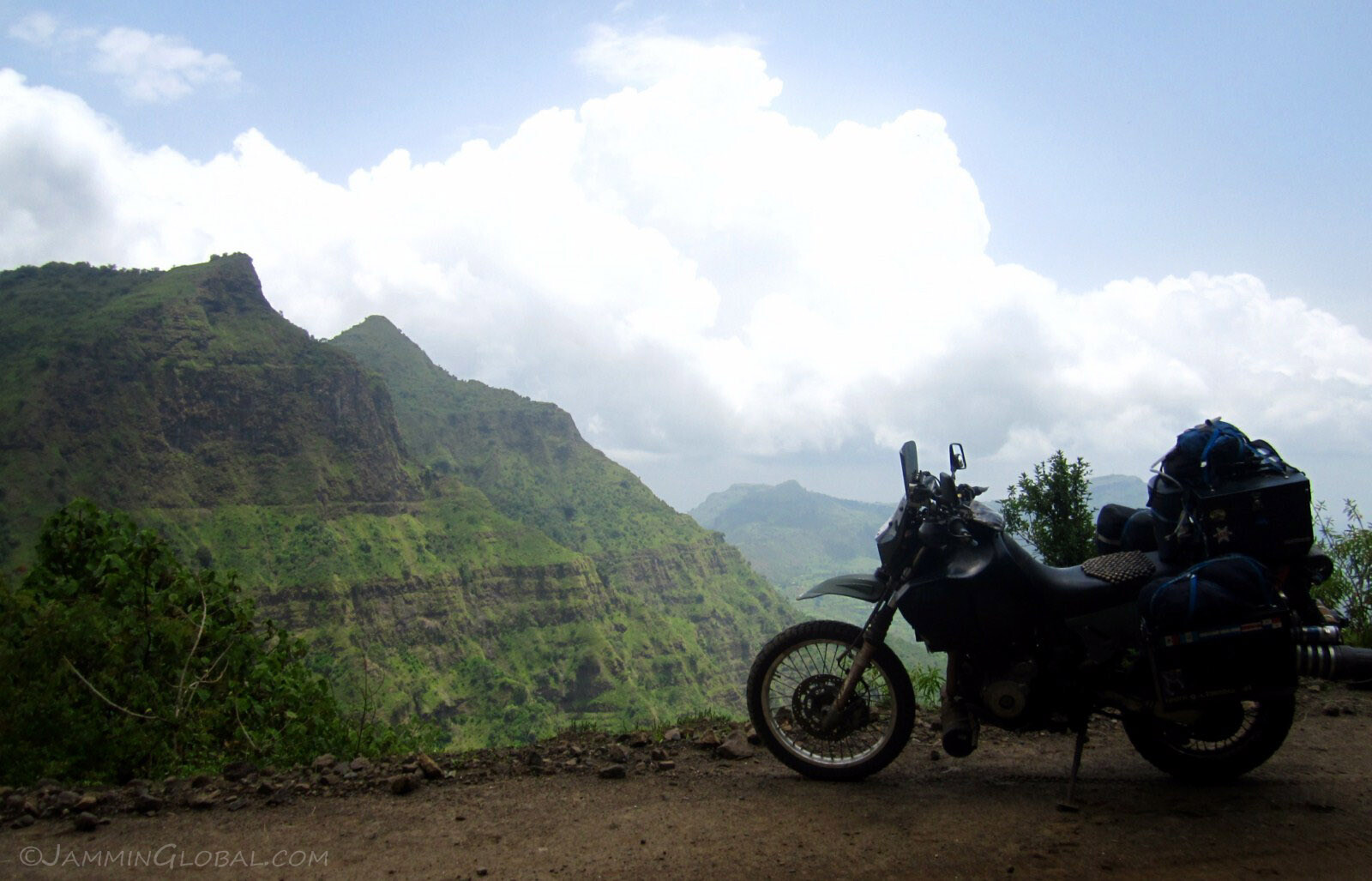 This is what sanDRina was waiting for. After two weeks of downtime at Tim and Kims and months of asphalt riding through Europe, Egypt and Sudan, we were finally on an off-road trip, at least for a few days and that too, in the mountains!
This is what sanDRina was waiting for. After two weeks of downtime at Tim and Kims and months of asphalt riding through Europe, Egypt and Sudan, we were finally on an off-road trip, at least for a few days and that too, in the mountains!
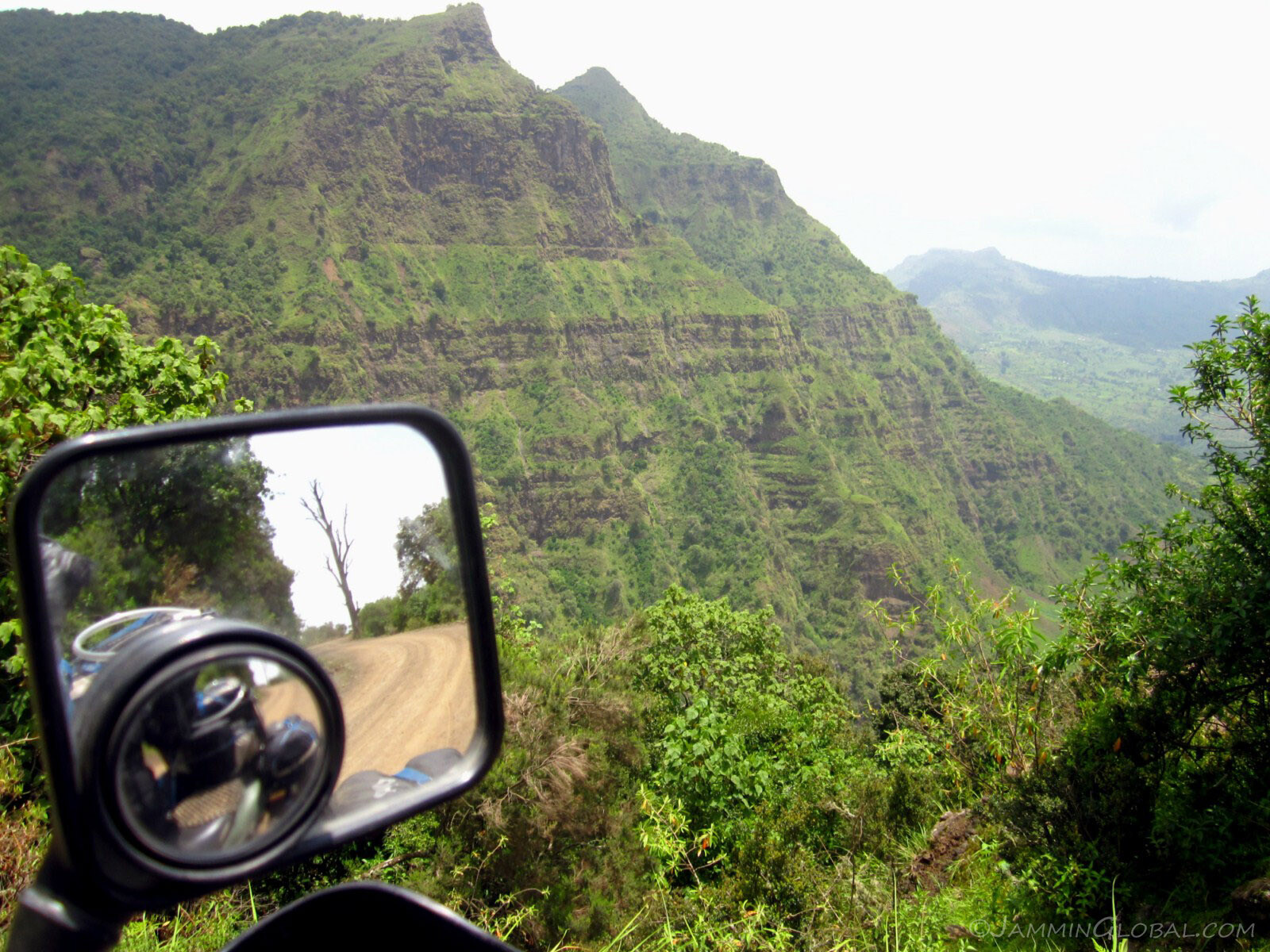 Twisties in the mirror and straight sedimentary lines in the mountains.
Twisties in the mirror and straight sedimentary lines in the mountains.
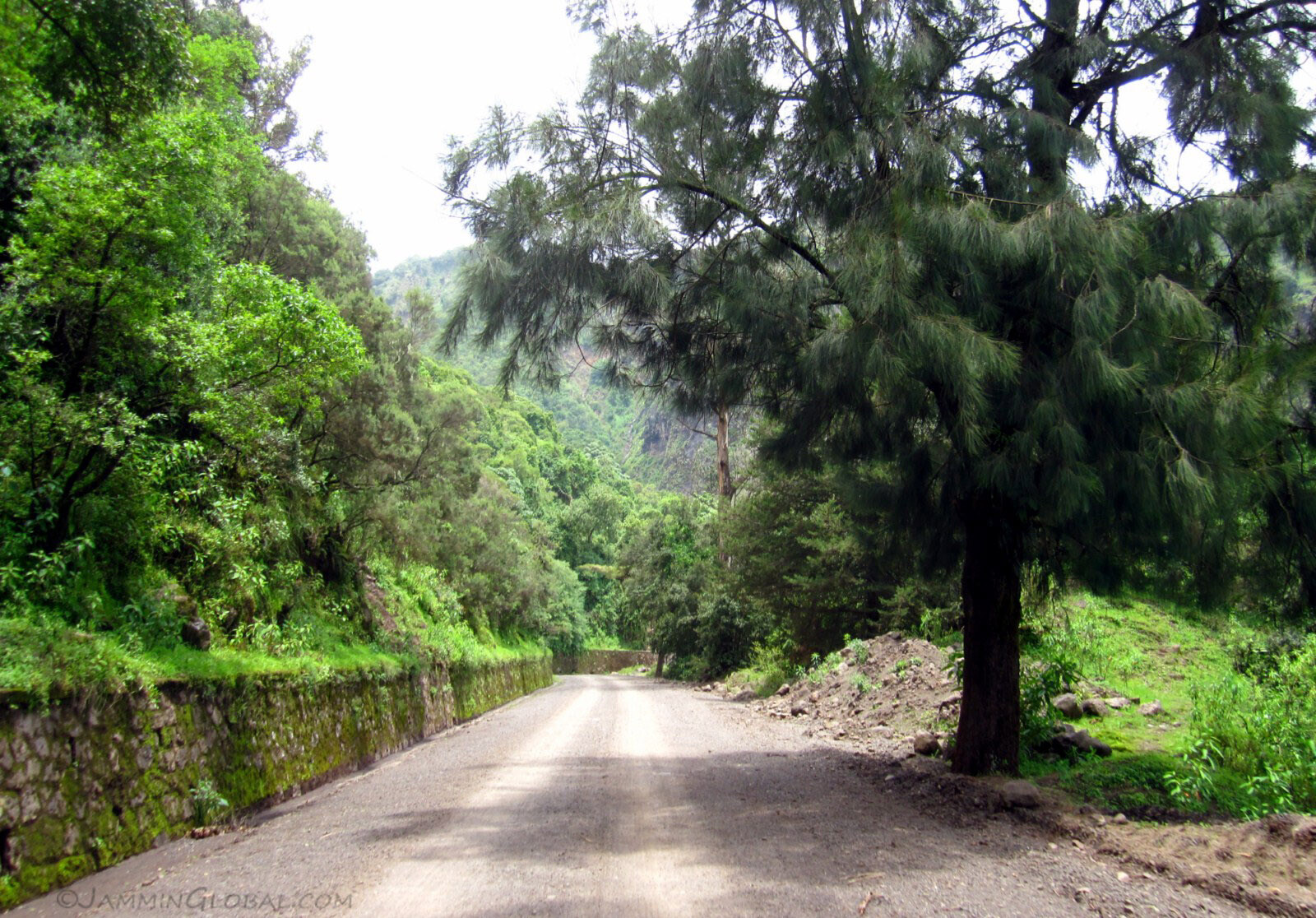 The road was well-built with retaining walls and the surface was hard-packed gravel and mud with excellent drainage. It rained heavily at night but I could hardly tell.
The road was well-built with retaining walls and the surface was hard-packed gravel and mud with excellent drainage. It rained heavily at night but I could hardly tell.
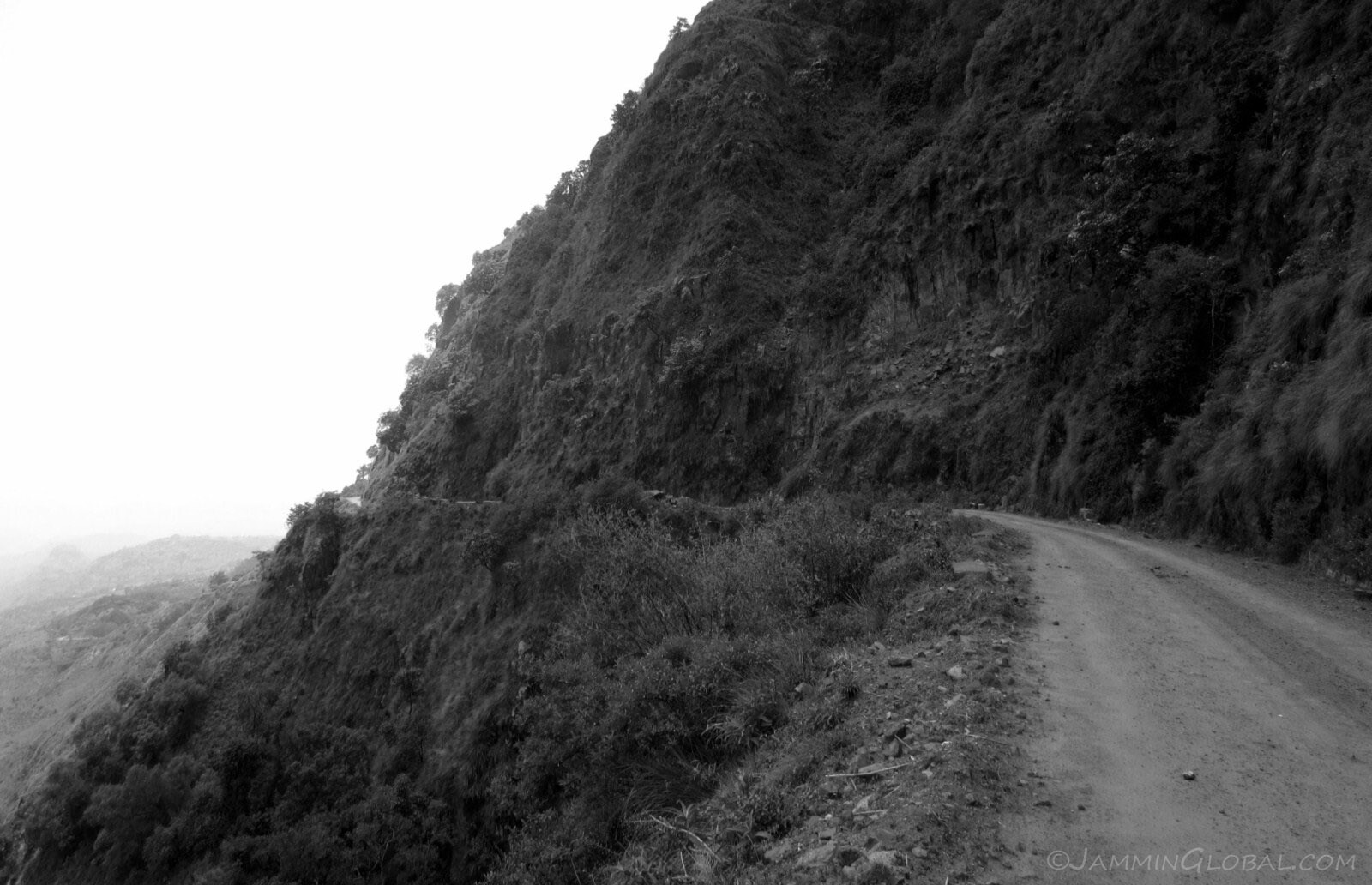 Cliff-riding. I felt like I was back in the Andes, riding the death roads of Peru and Bolivia. Yes.
Cliff-riding. I felt like I was back in the Andes, riding the death roads of Peru and Bolivia. Yes.
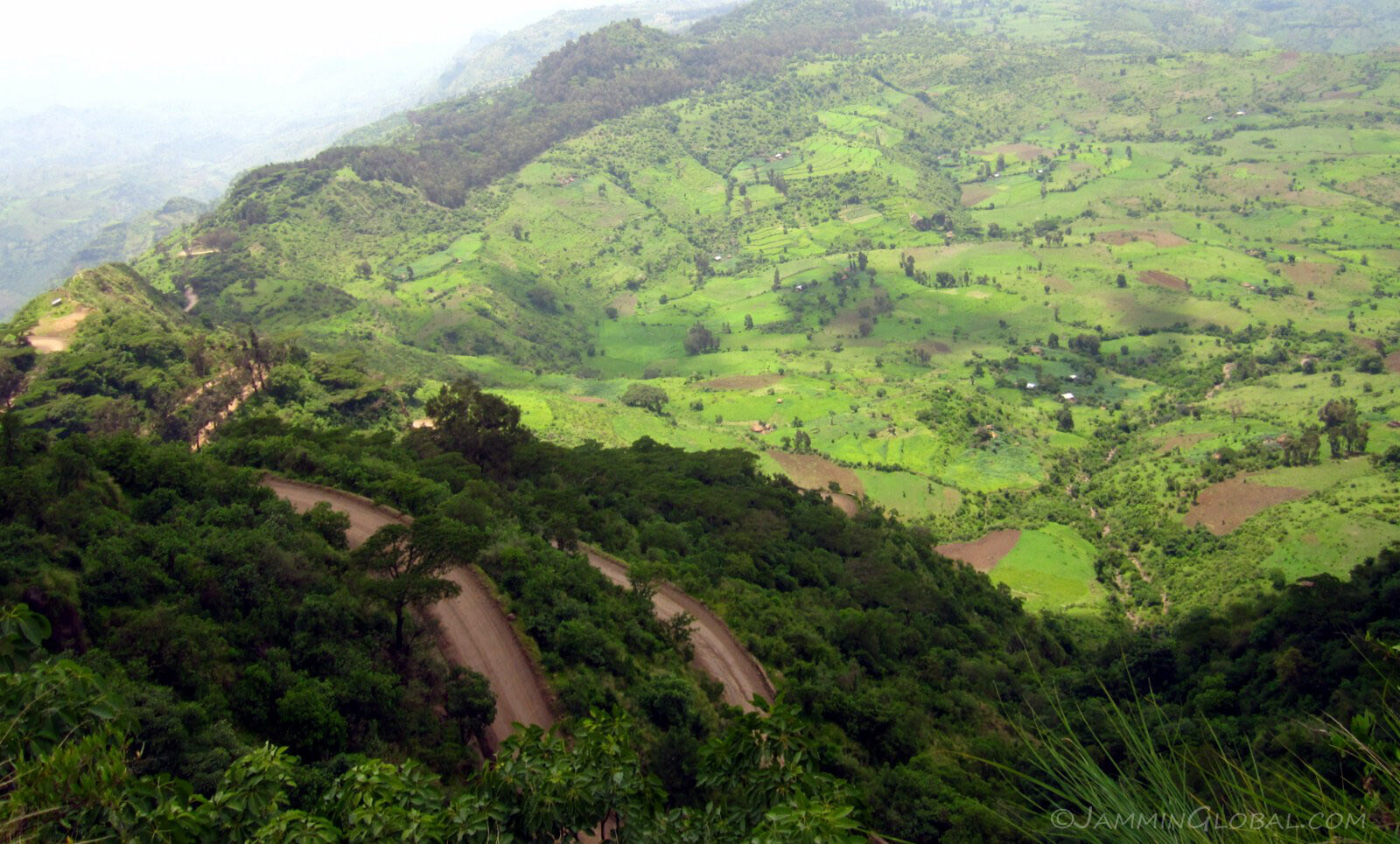 The road wound down from Debark at 2,850 m (9,350 ft) to a river in the valley at 1,250 m (4,100 ft) then climbed back up to 1,800 m (5,900 ft), back down to 1,277 m (4,188 ft) then the day ended in Adi Arkay at 1,500 m (4,920 ft). All this in just 75 kms (47 mi).
The road wound down from Debark at 2,850 m (9,350 ft) to a river in the valley at 1,250 m (4,100 ft) then climbed back up to 1,800 m (5,900 ft), back down to 1,277 m (4,188 ft) then the day ended in Adi Arkay at 1,500 m (4,920 ft). All this in just 75 kms (47 mi).
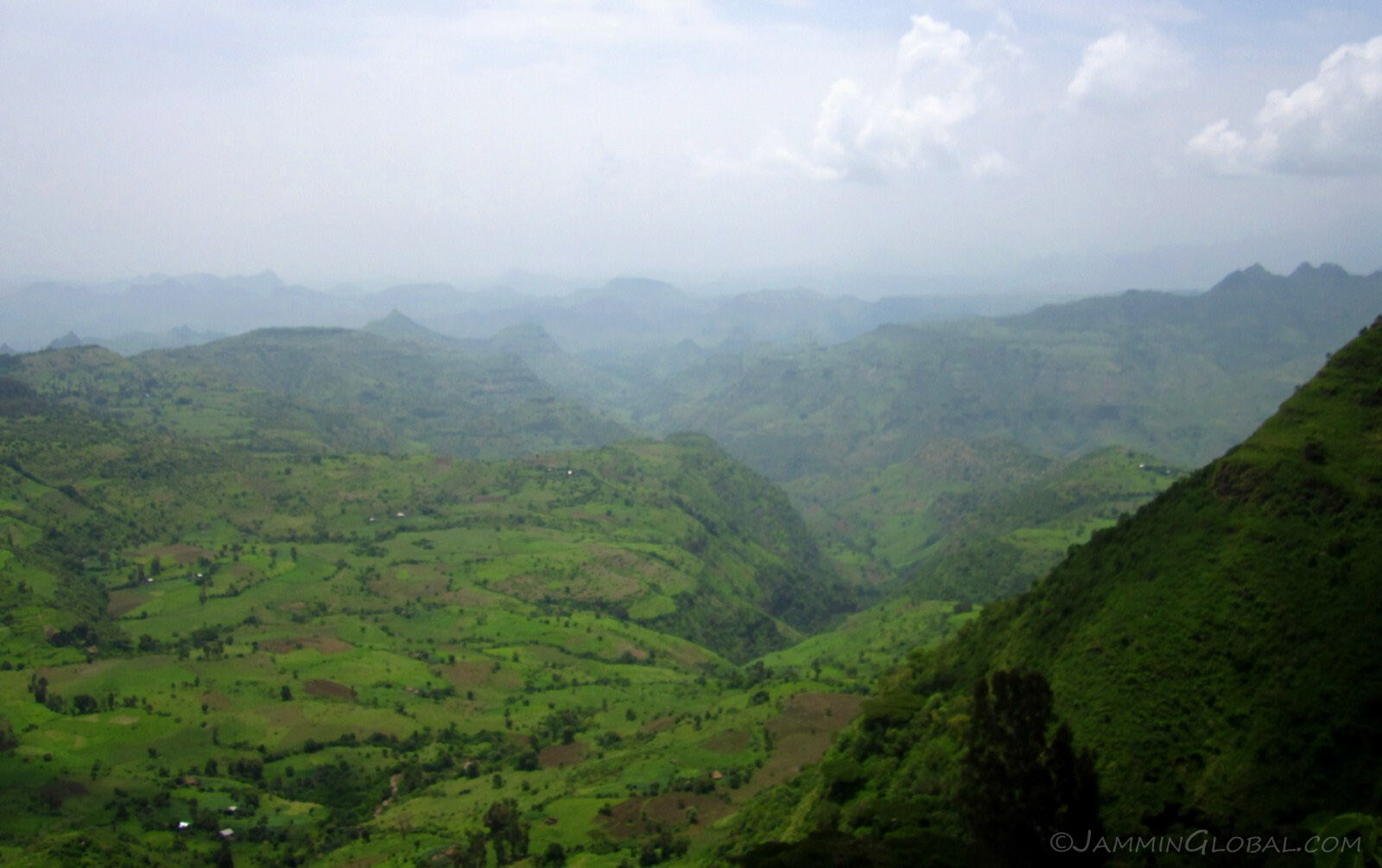 Looking out across the fertile Ethiopia Highlands from a high vantage point.
Looking out across the fertile Ethiopia Highlands from a high vantage point.
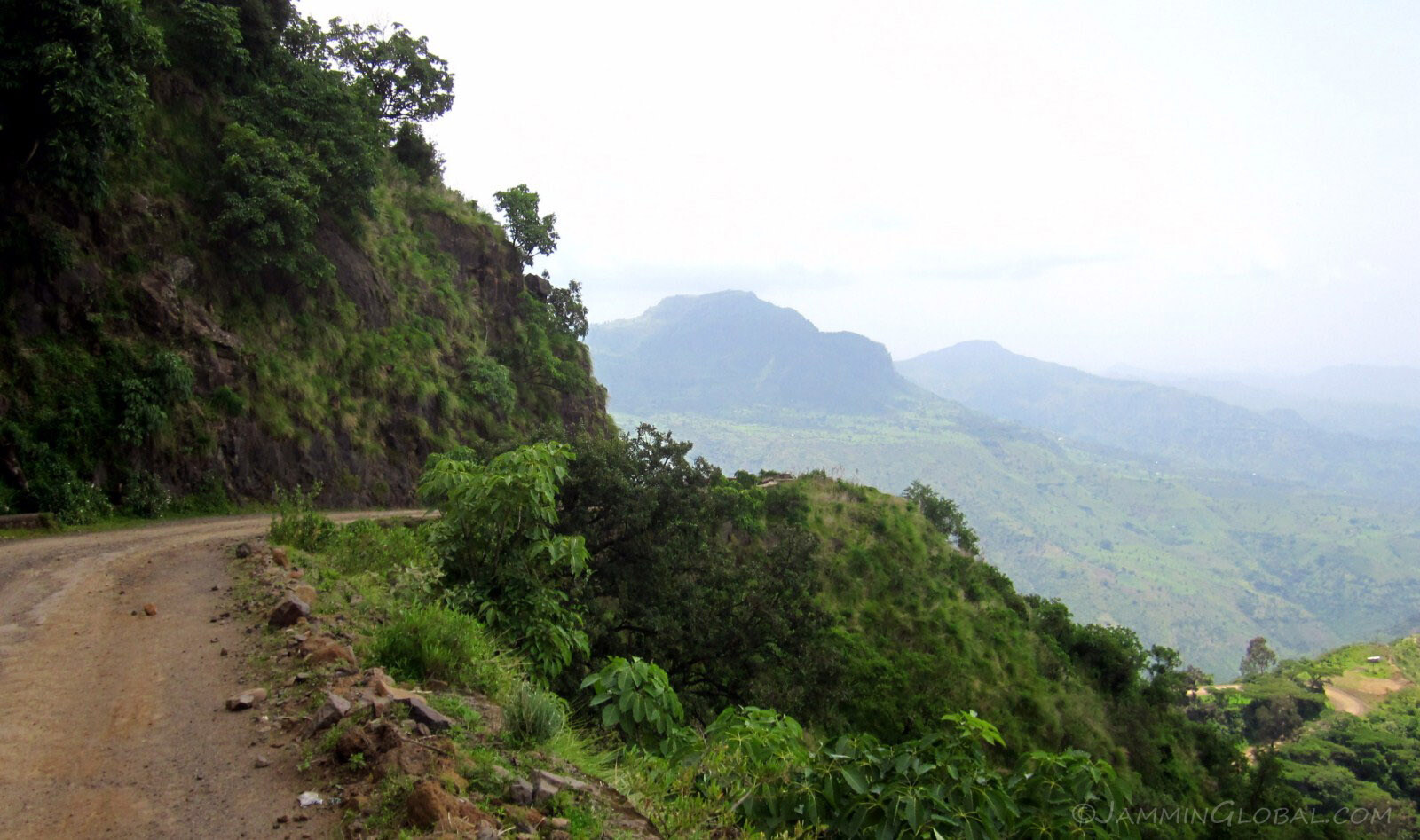 I am most happy riding on roads this like: hard-packed mud, great views of mountains and no traffic to speak of.
I am most happy riding on roads this like: hard-packed mud, great views of mountains and no traffic to speak of.
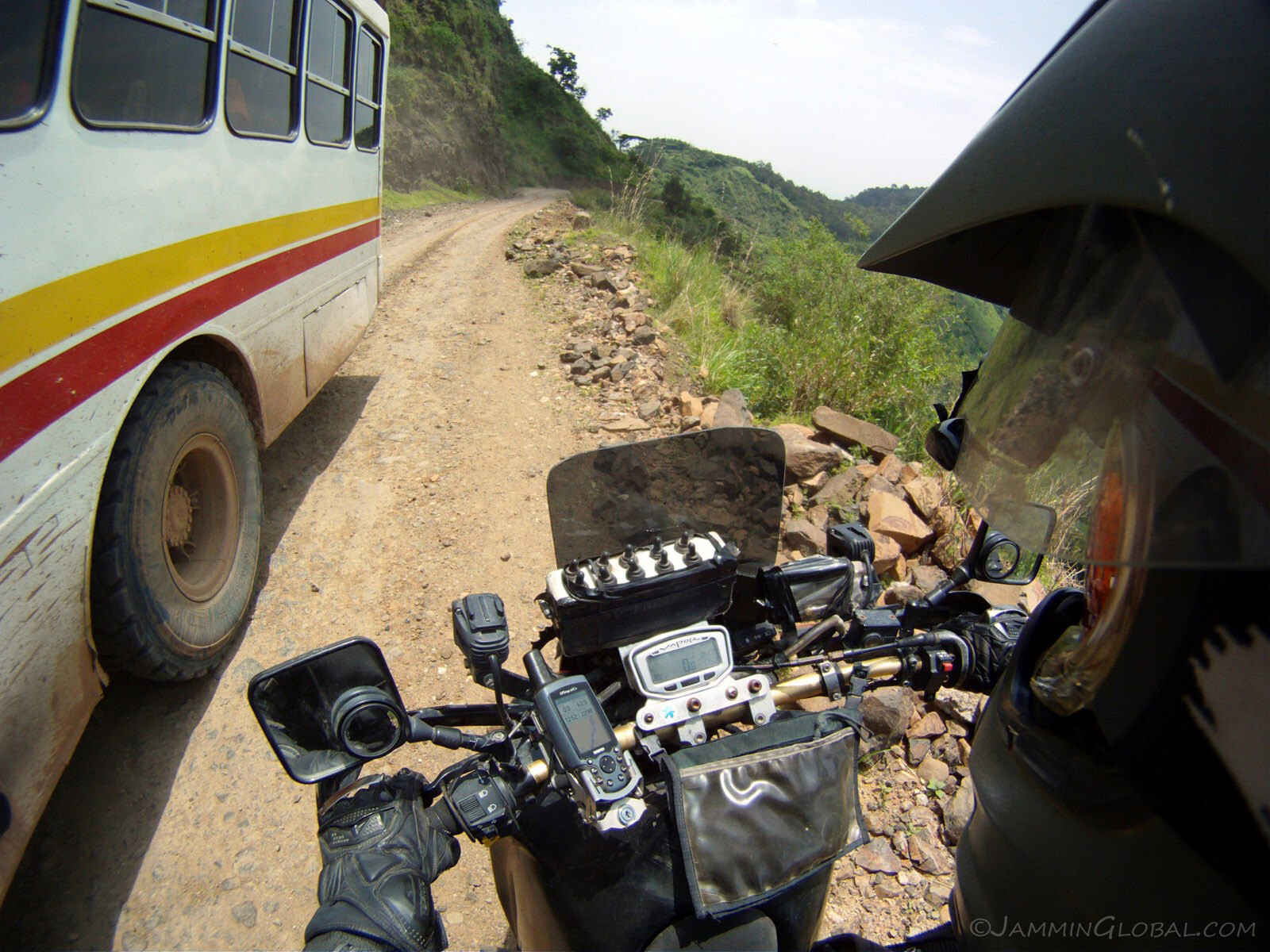 Um, yeah, there was some traffic; the occasional bus and lorry.
Um, yeah, there was some traffic; the occasional bus and lorry.
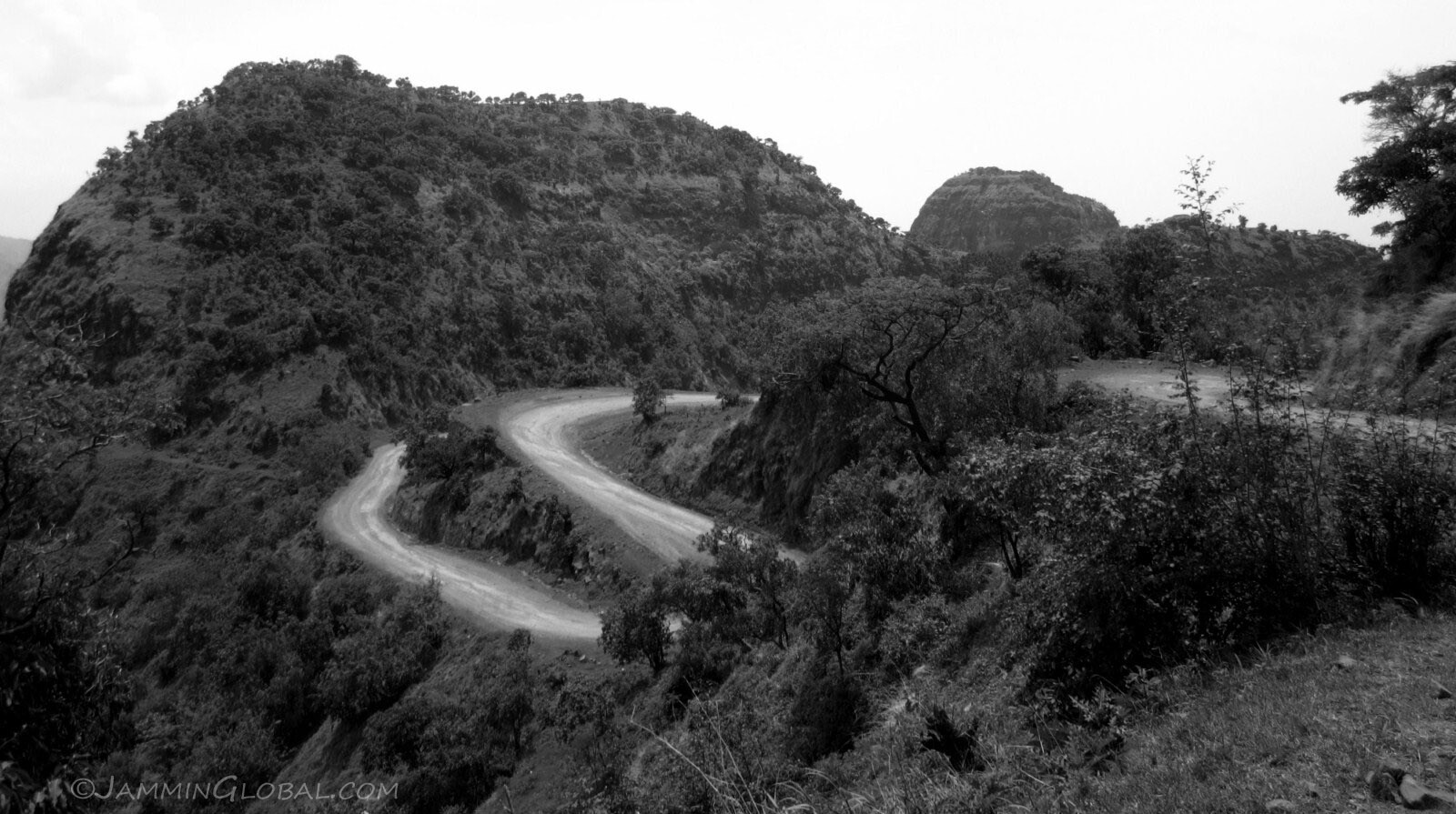 I had great views not just of the scenery but also the beautiful road winding its way up and down the mountainsides.
I had great views not just of the scenery but also the beautiful road winding its way up and down the mountainsides.
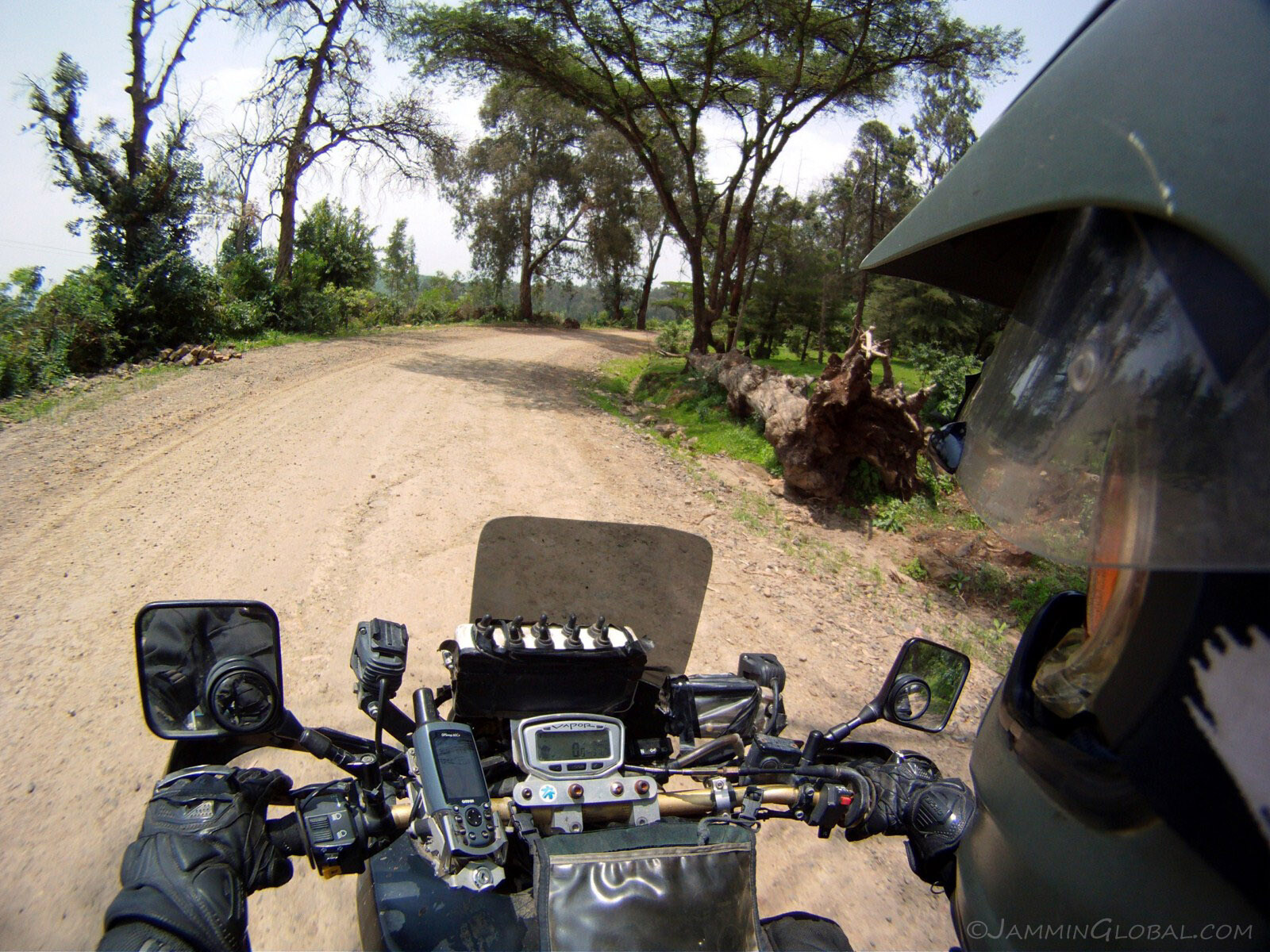 Riding under shady trees.
Riding under shady trees.
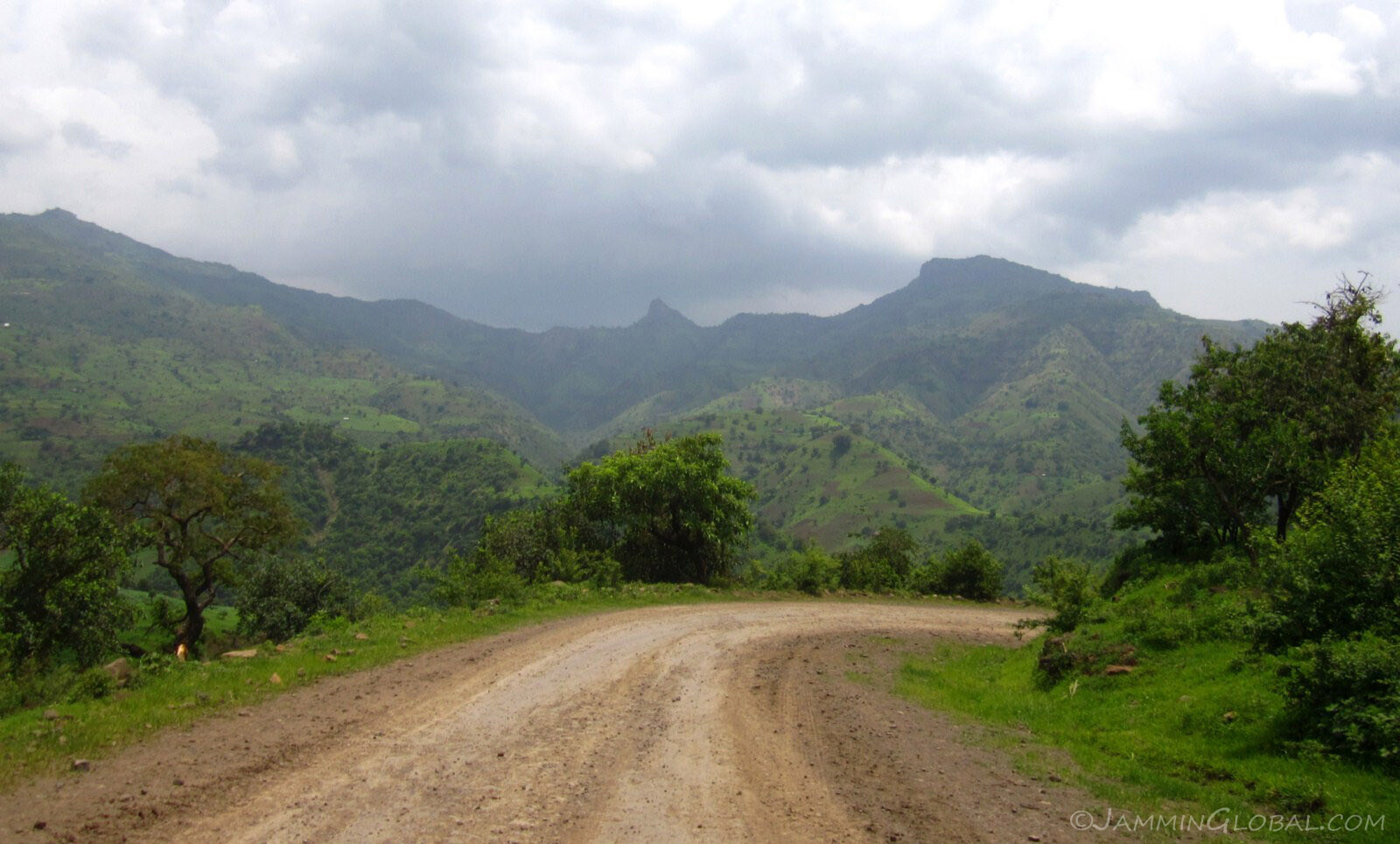 Being close to mountains makes my right brain content. But those dark clouds were worrying my left brain. And then I have to tell myself not to worry because the rains are so timely here that I can be sure it won't rain until late in the afternoon.
Being close to mountains makes my right brain content. But those dark clouds were worrying my left brain. And then I have to tell myself not to worry because the rains are so timely here that I can be sure it won't rain until late in the afternoon.
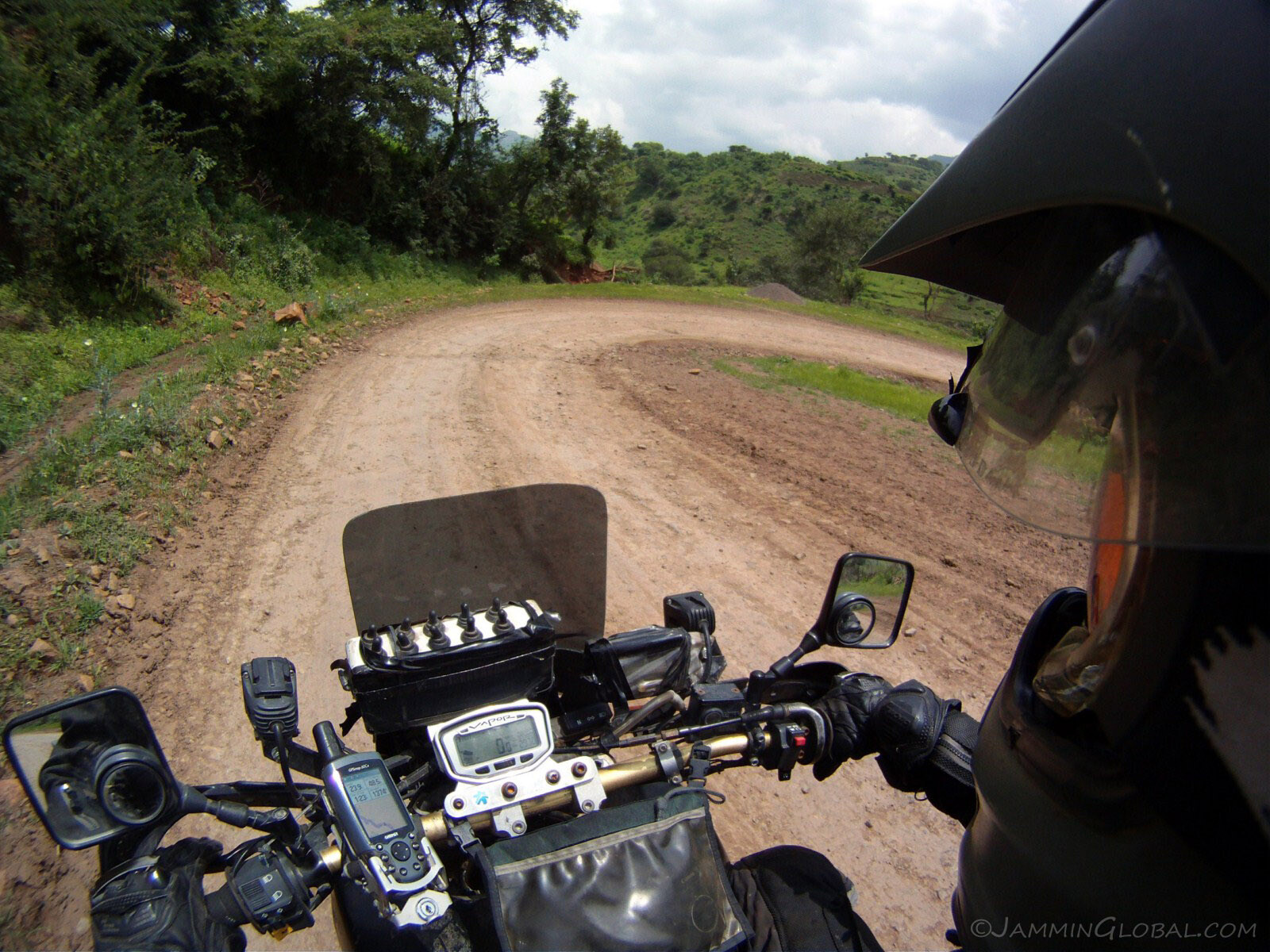 Riding downhill switch-backs. I prefer uphill ones, as I have more control with the throttle, rather than letting gravity dictate your speed on the way down.
Riding downhill switch-backs. I prefer uphill ones, as I have more control with the throttle, rather than letting gravity dictate your speed on the way down.
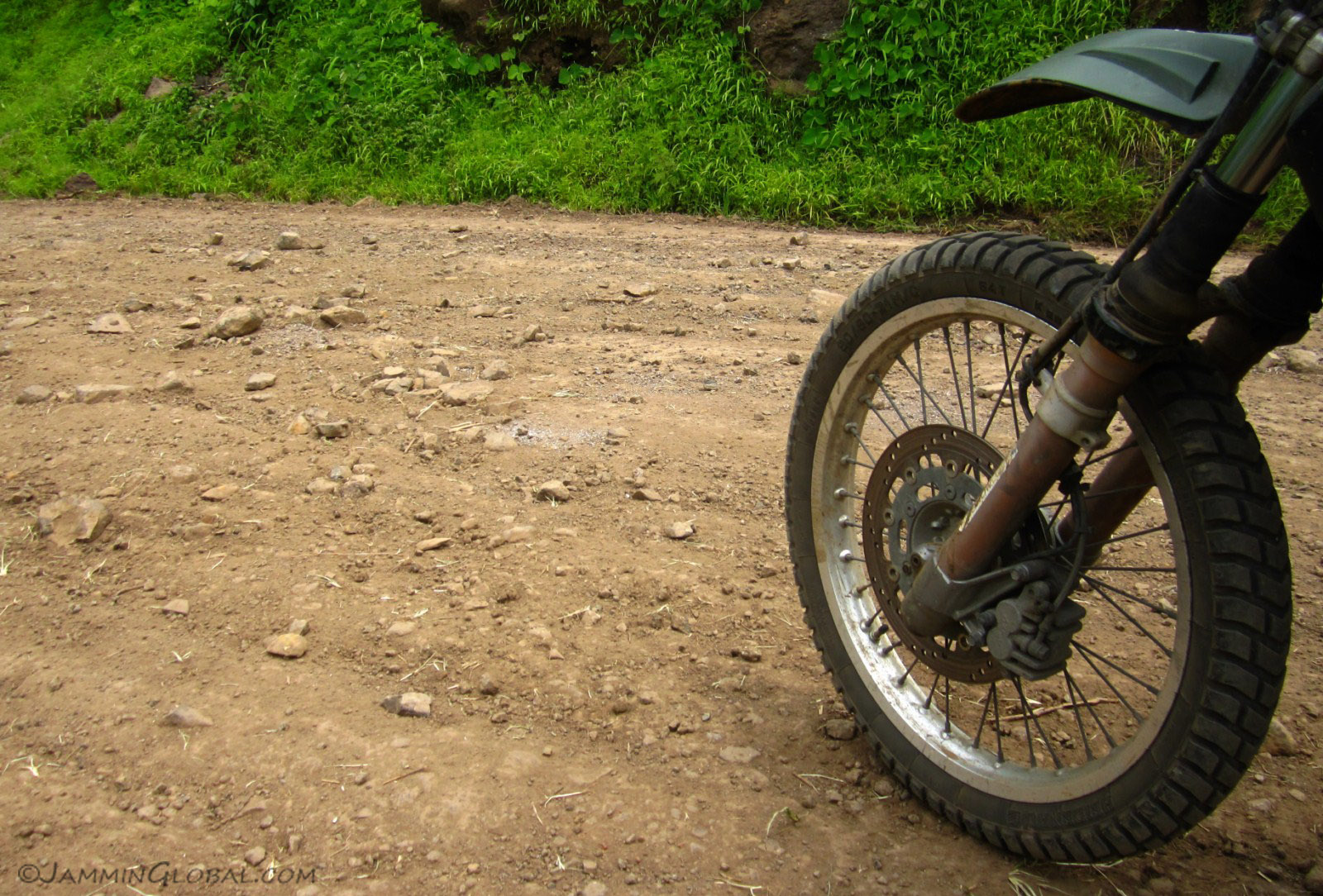 The Heidenau K60 Scout tire was gripping well in the first proper off-road test for me. The road was covered in loose rocks, gravel and sand but it was hard-packed just below all that, so with enough speed and the right air pressure in the tires, the riding was a pleasure.
The Heidenau K60 Scout tire was gripping well in the first proper off-road test for me. The road was covered in loose rocks, gravel and sand but it was hard-packed just below all that, so with enough speed and the right air pressure in the tires, the riding was a pleasure.
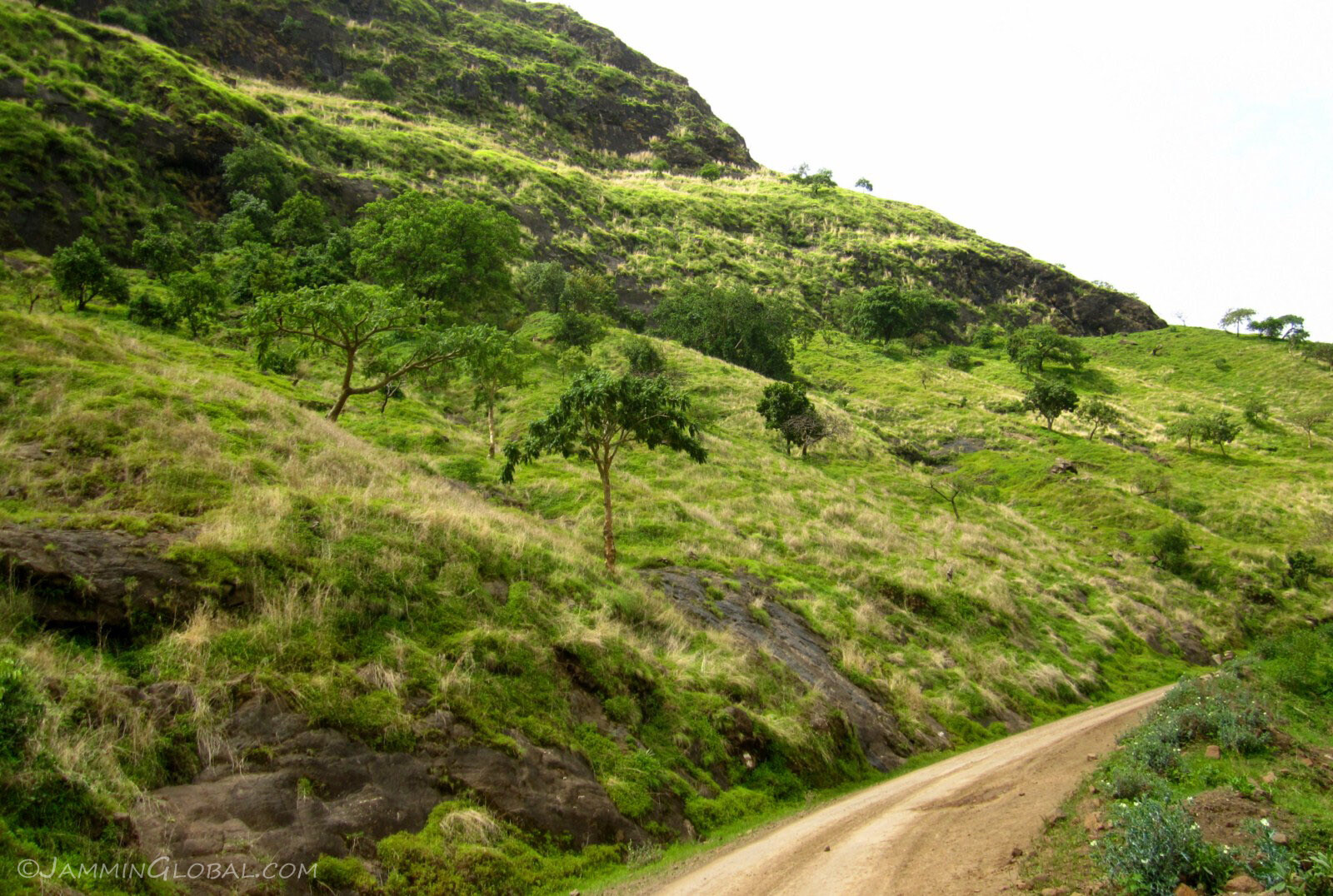 The afternoon sun lighting up the verdant hills.
The afternoon sun lighting up the verdant hills.
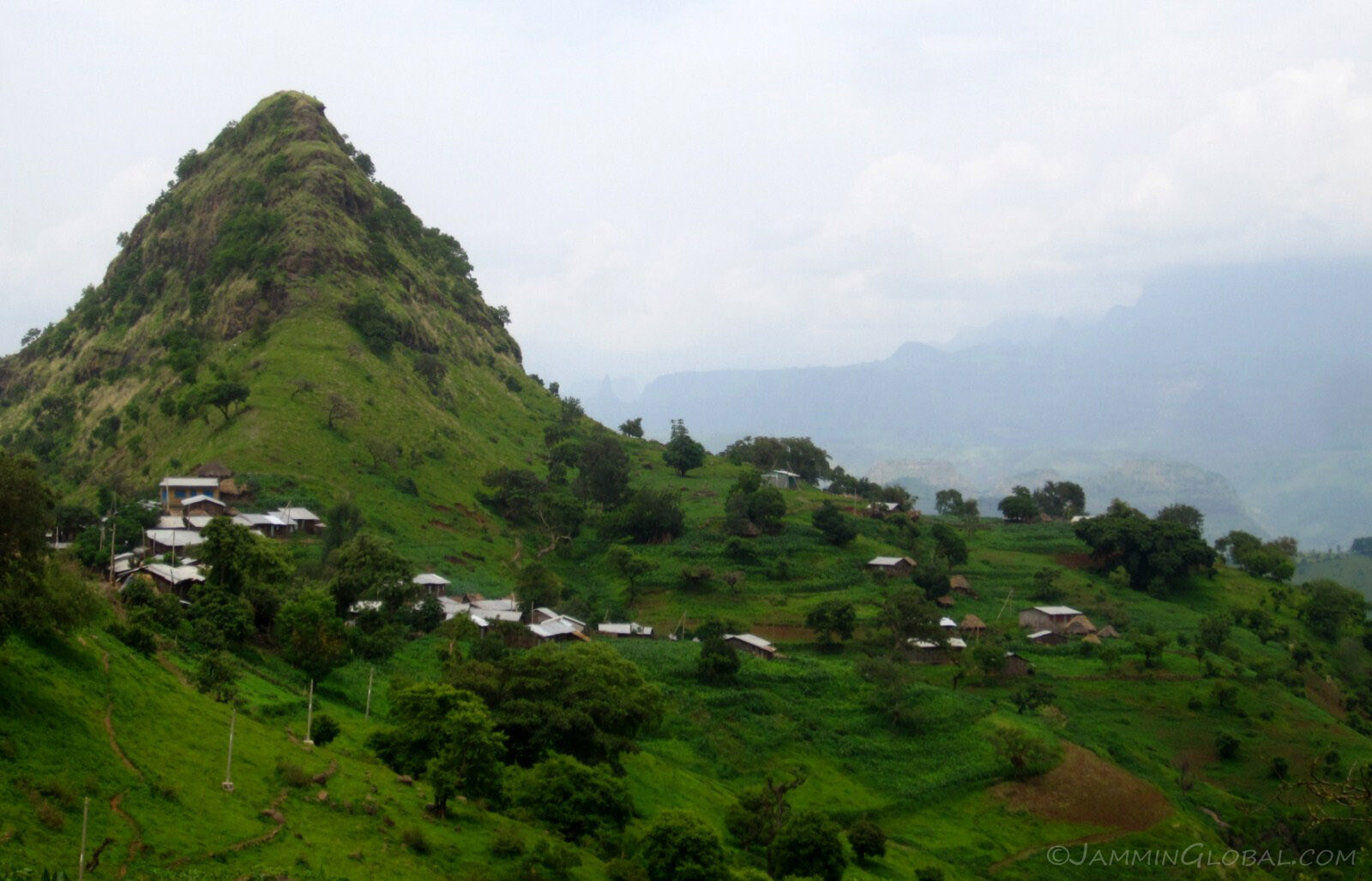 A small village surrounding their sacred peak and using terraces to farm these steep hillsides.
A small village surrounding their sacred peak and using terraces to farm these steep hillsides.
 A warning sign to watch for falling rocks. I usually ignore this sign, but here, I was on the look-out.
A warning sign to watch for falling rocks. I usually ignore this sign, but here, I was on the look-out.
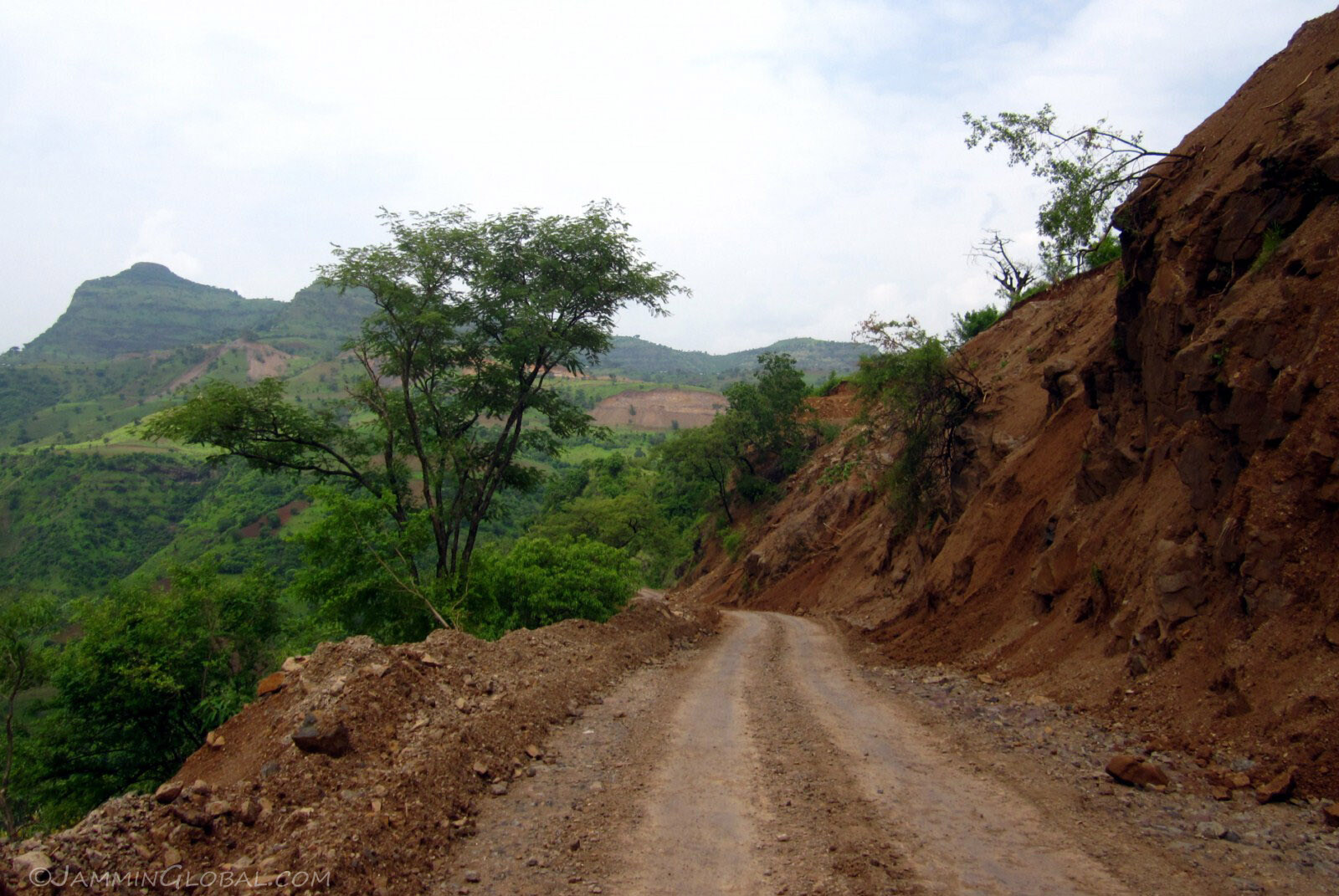 A landslide just waiting to happen with the next heavy rains. I guess the civil engineering flair of the Italians didn't make it out this far.
A landslide just waiting to happen with the next heavy rains. I guess the civil engineering flair of the Italians didn't make it out this far.
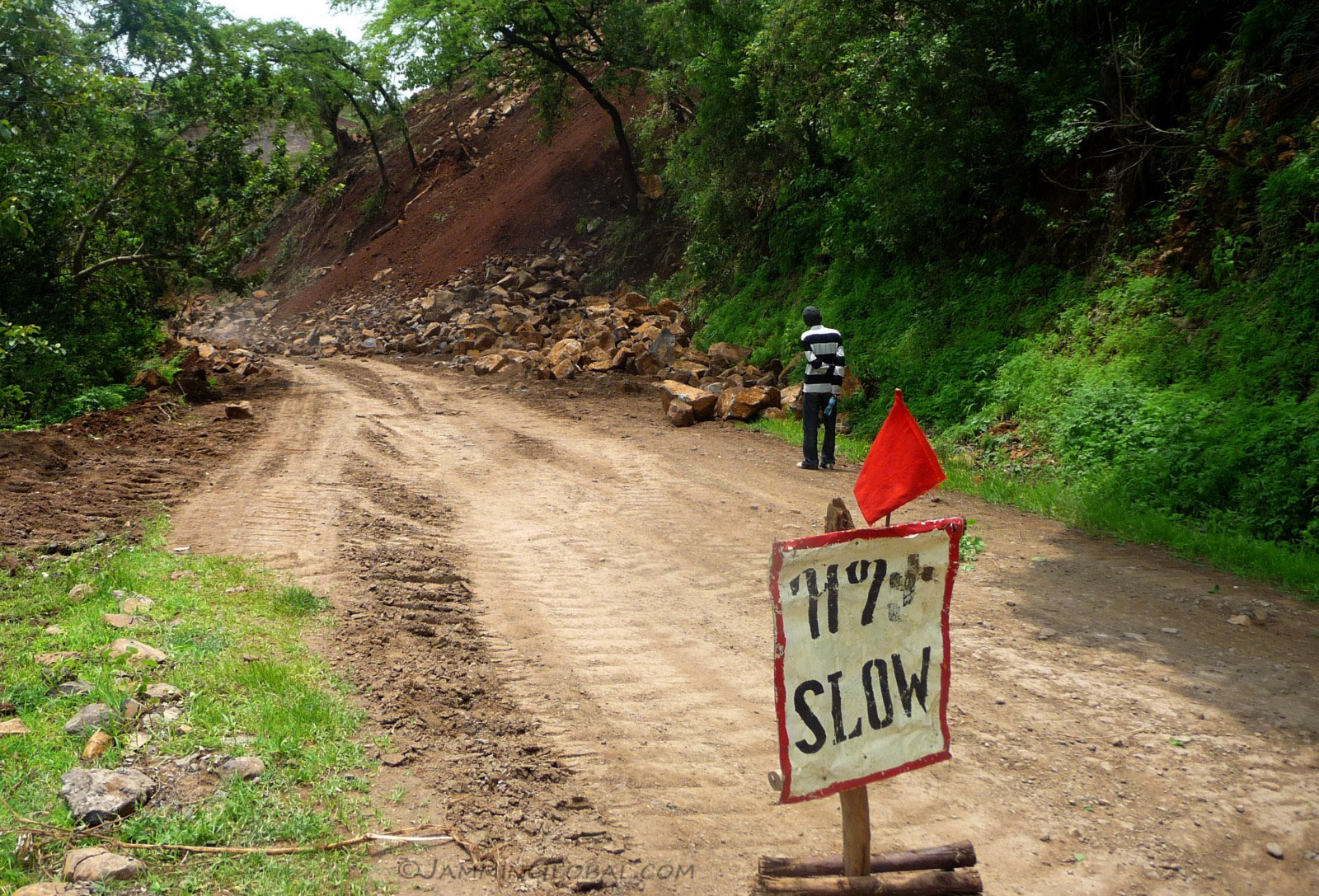 Yup, that looks like a recent landslide. I had to wait a bit for a bulldozer to clear a path.
Yup, that looks like a recent landslide. I had to wait a bit for a bulldozer to clear a path.
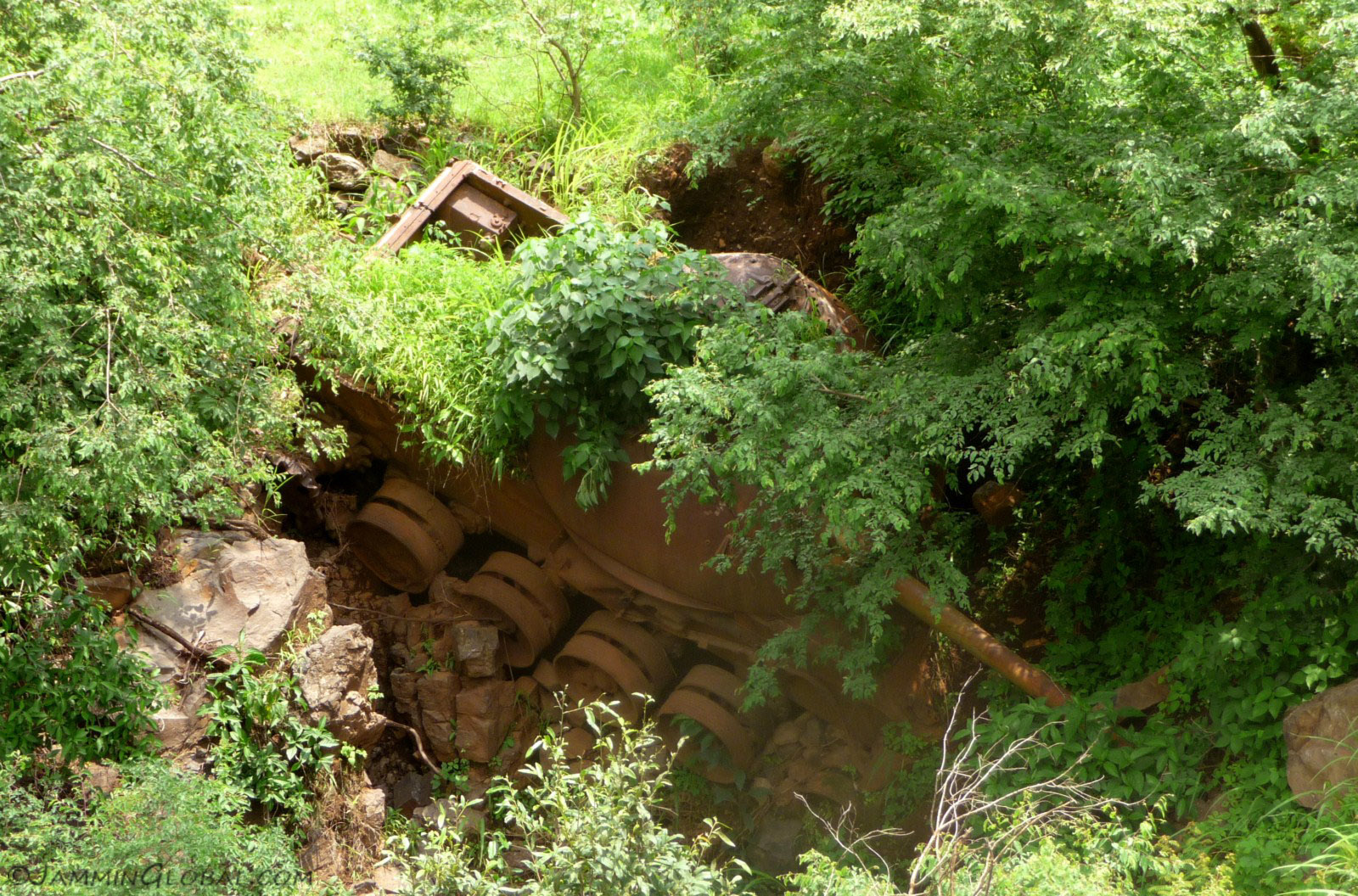 As I was waiting, I turned and saw this old tank slowly being reclaimed by nature. Ethiopia has had a rocky military past with heavy fighting during the Derg years and then the extended war with Eritrea.
As I was waiting, I turned and saw this old tank slowly being reclaimed by nature. Ethiopia has had a rocky military past with heavy fighting during the Derg years and then the extended war with Eritrea.
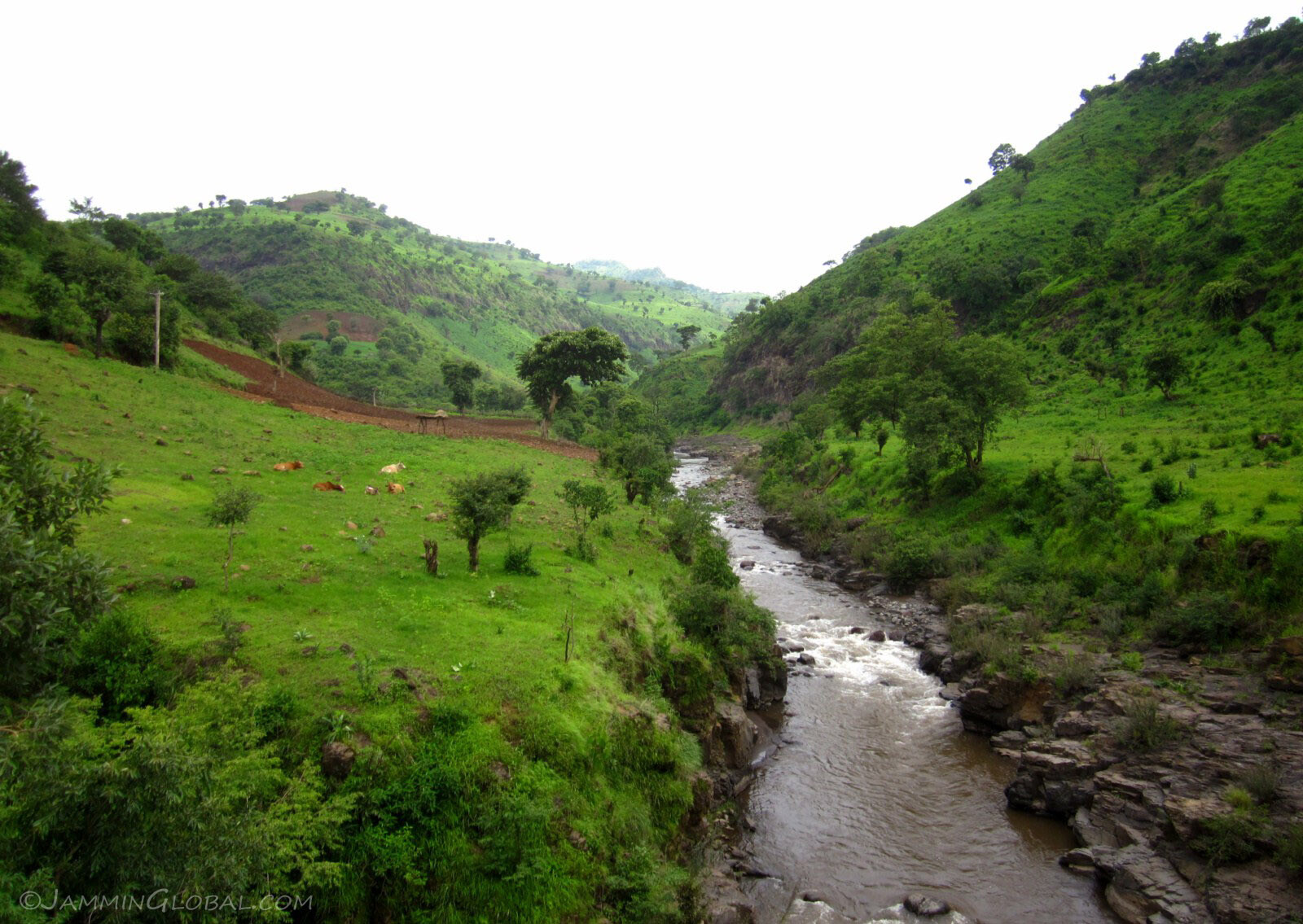 Hitting the river at valley bottom before climbing back up.
Hitting the river at valley bottom before climbing back up.
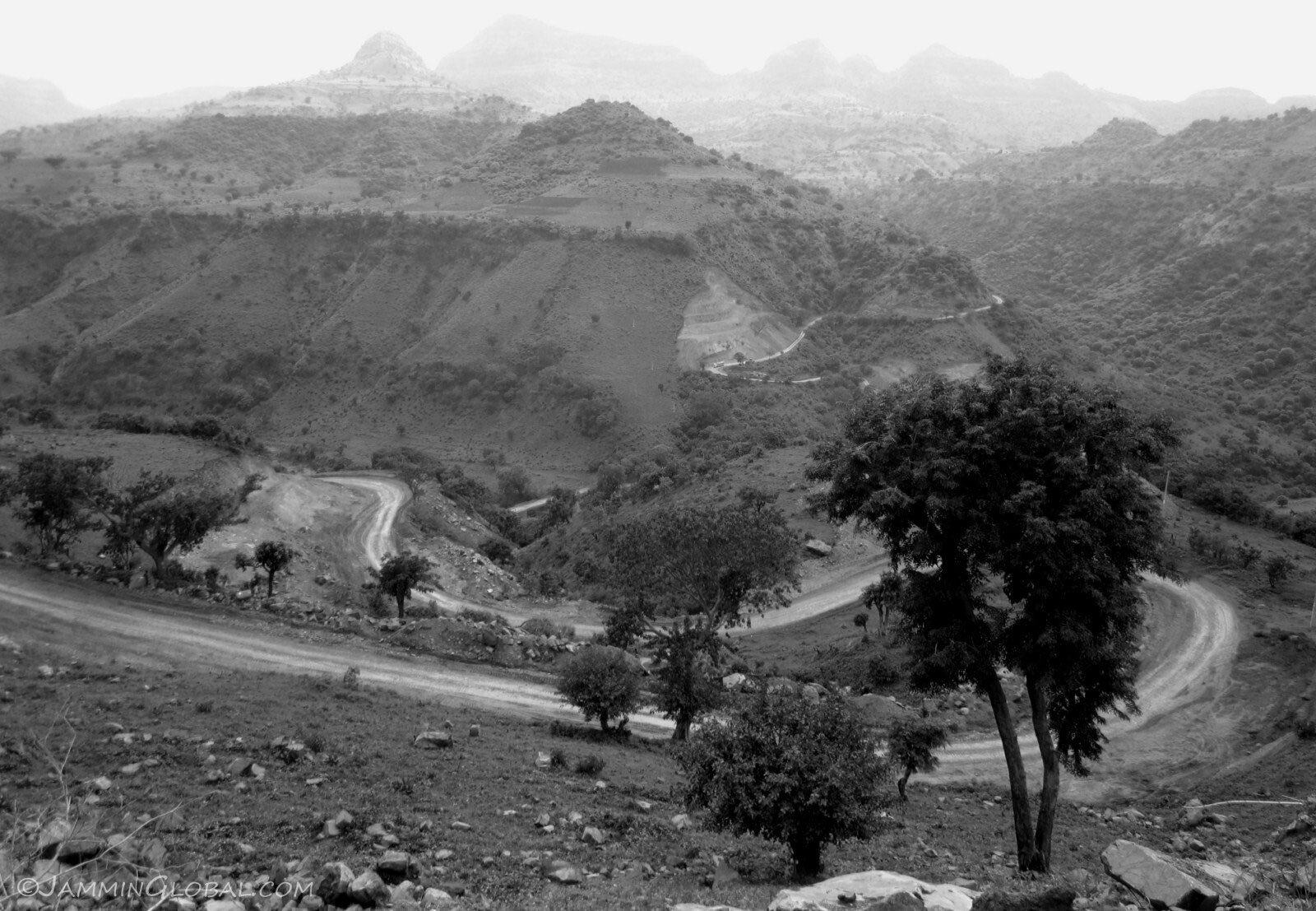 Looking back at the route as it descended to the river and then climbed back up.
Looking back at the route as it descended to the river and then climbed back up.
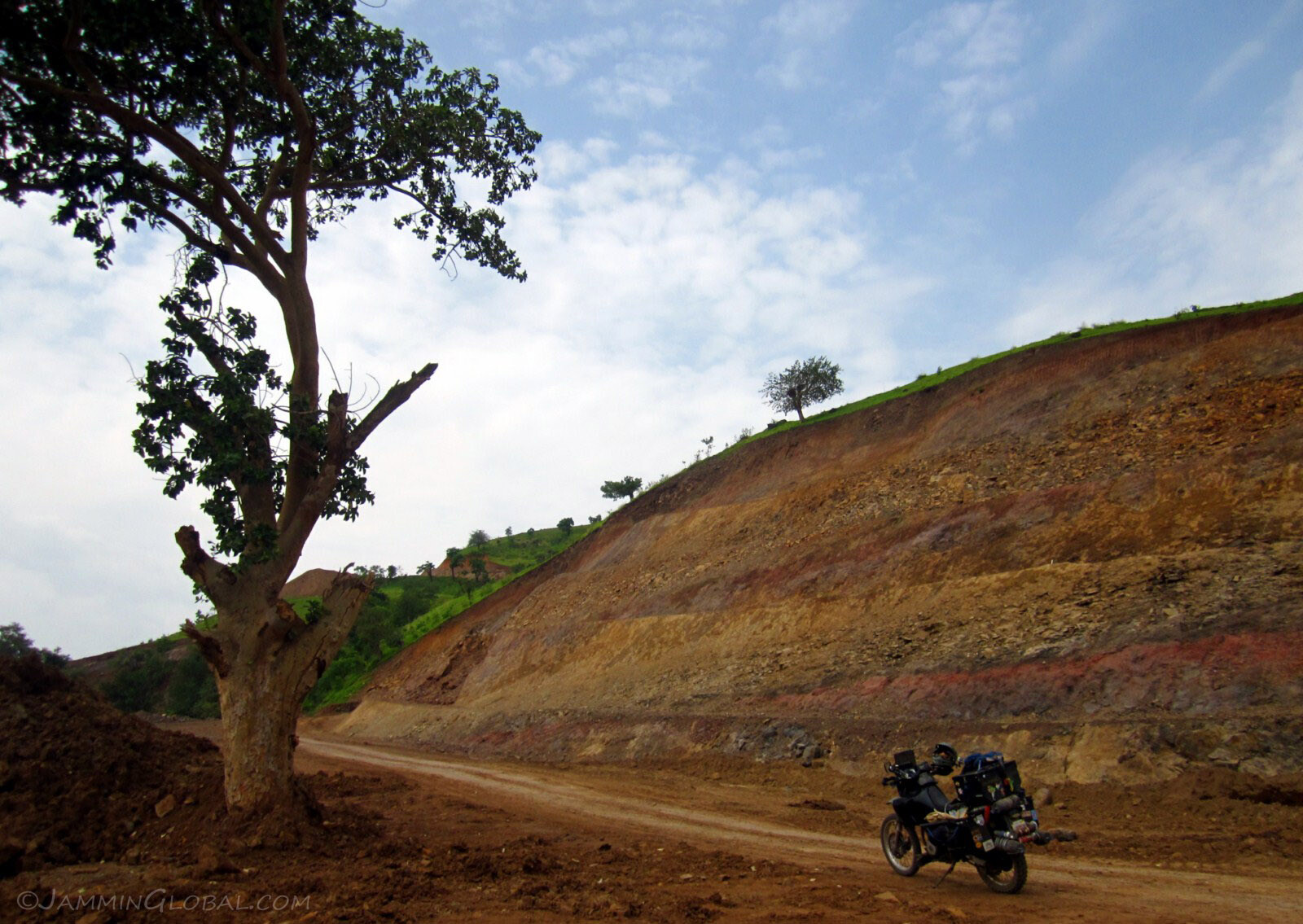 Beautiful colors from the exposed sedimentary layers in the hillside. The red bands are probably copper, laid down millions of years ago at the bottom of a sea and now in 2011, exposed on a hill in Ethiopia.
Beautiful colors from the exposed sedimentary layers in the hillside. The red bands are probably copper, laid down millions of years ago at the bottom of a sea and now in 2011, exposed on a hill in Ethiopia.
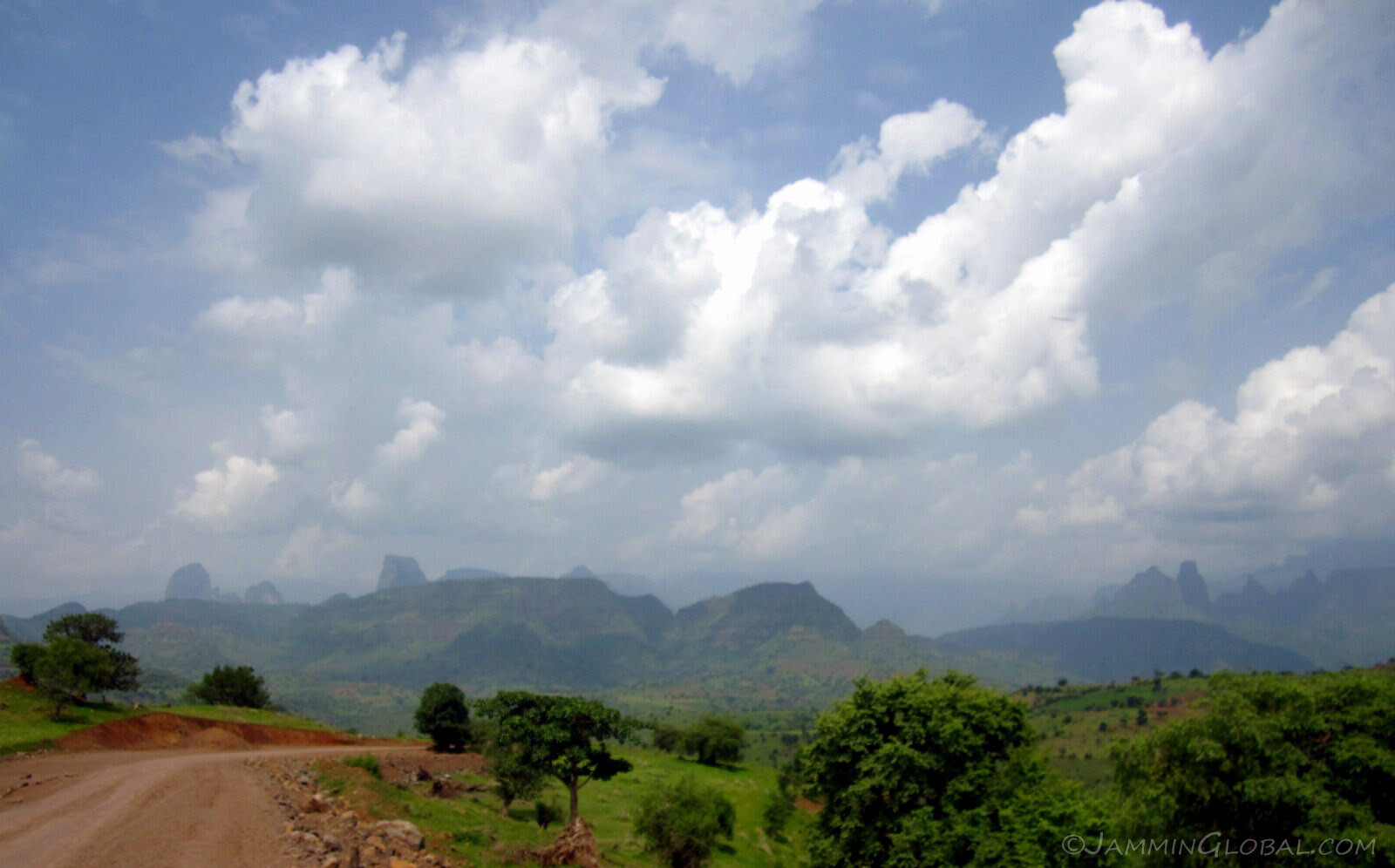 Getting close to Adi Arkay and getting my first glimpse of the most enigmatic part of the Semien Mountains, the home of Ras Dashen, the highest peak in Ethiopia.
Getting close to Adi Arkay and getting my first glimpse of the most enigmatic part of the Semien Mountains, the home of Ras Dashen, the highest peak in Ethiopia.
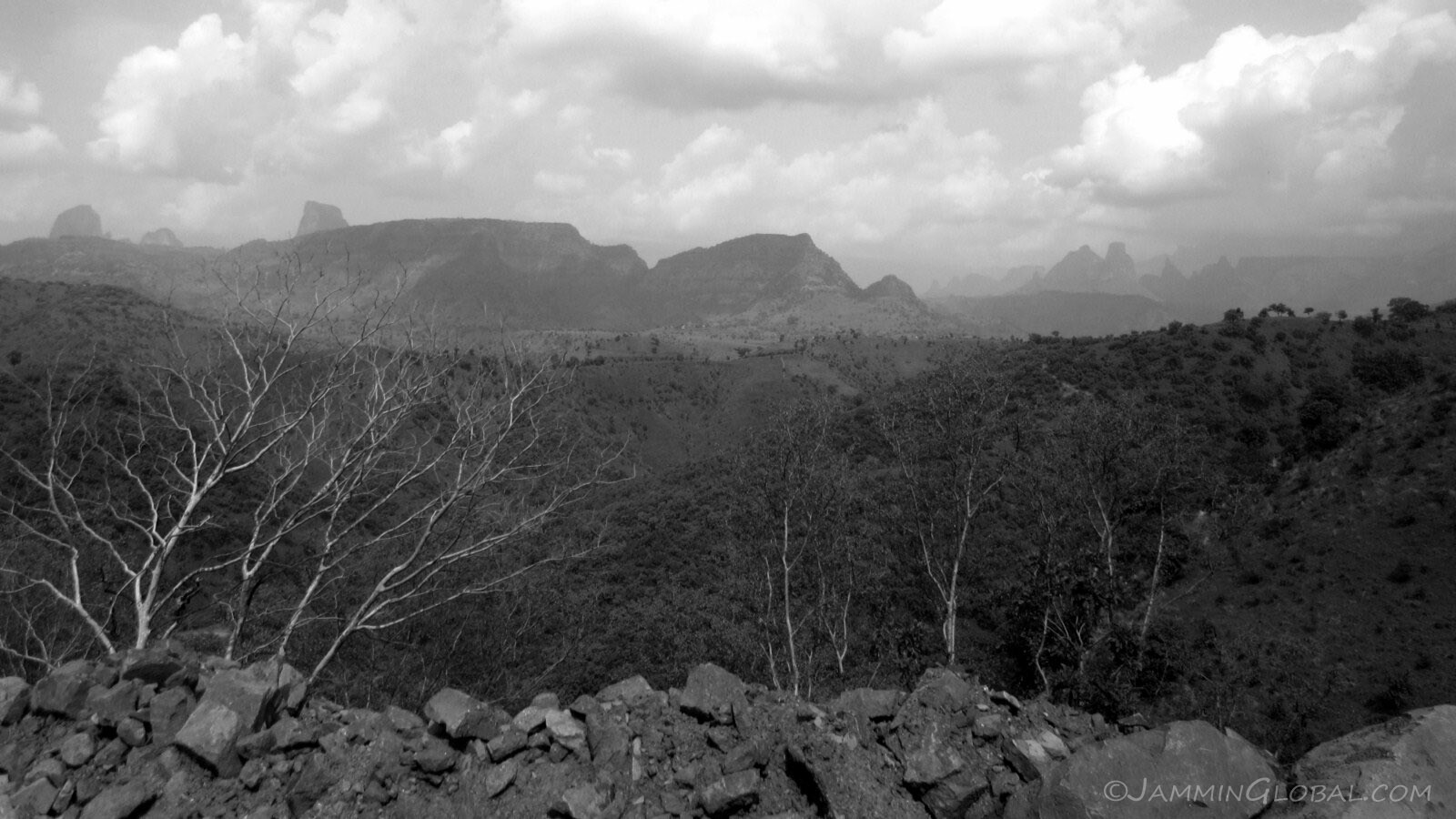 The peaks of the Semiens dotting the landscape.
The peaks of the Semiens dotting the landscape.
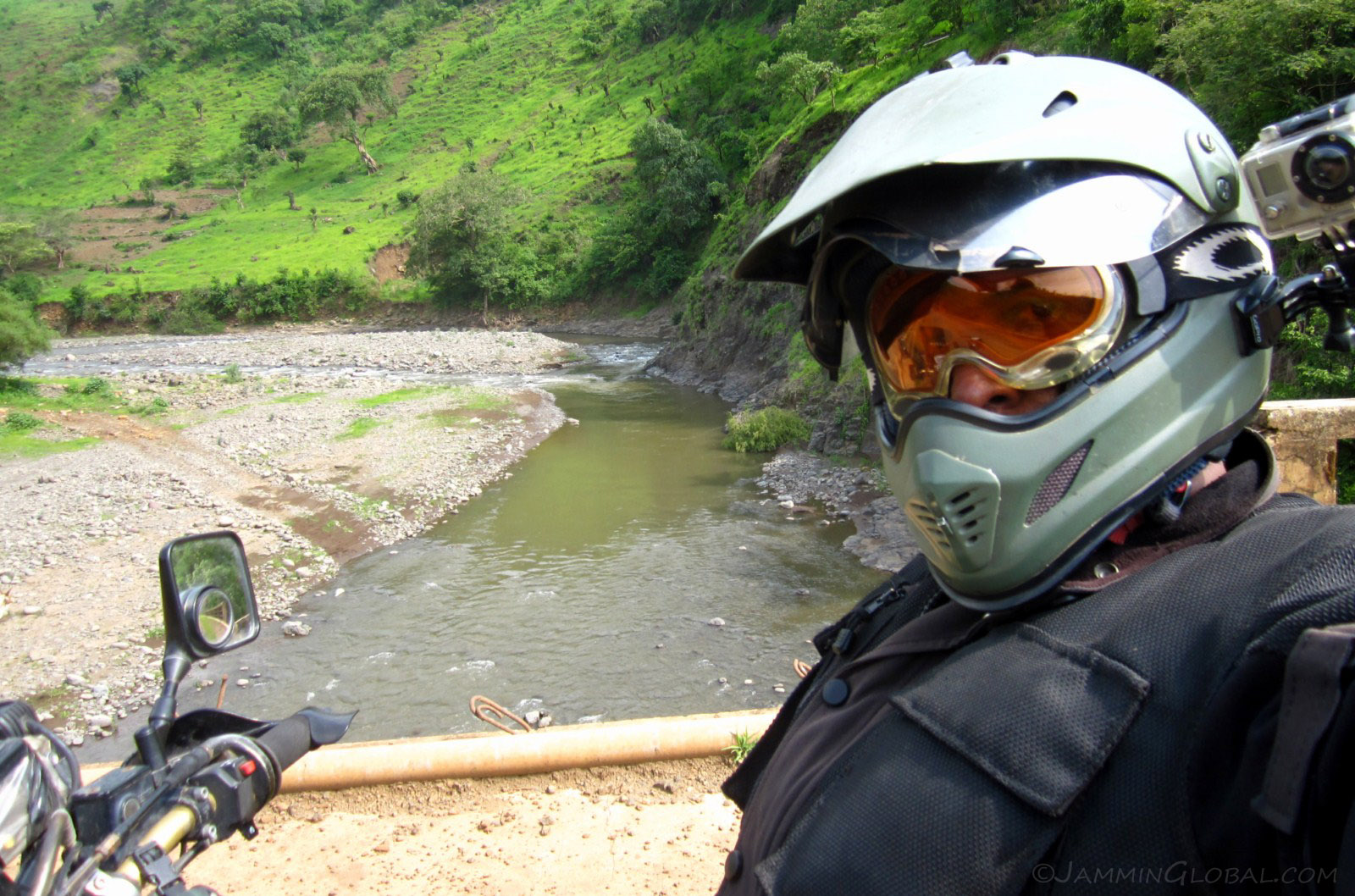 An enjoyable day of riding dirt up and down mountains.
An enjoyable day of riding dirt up and down mountains.
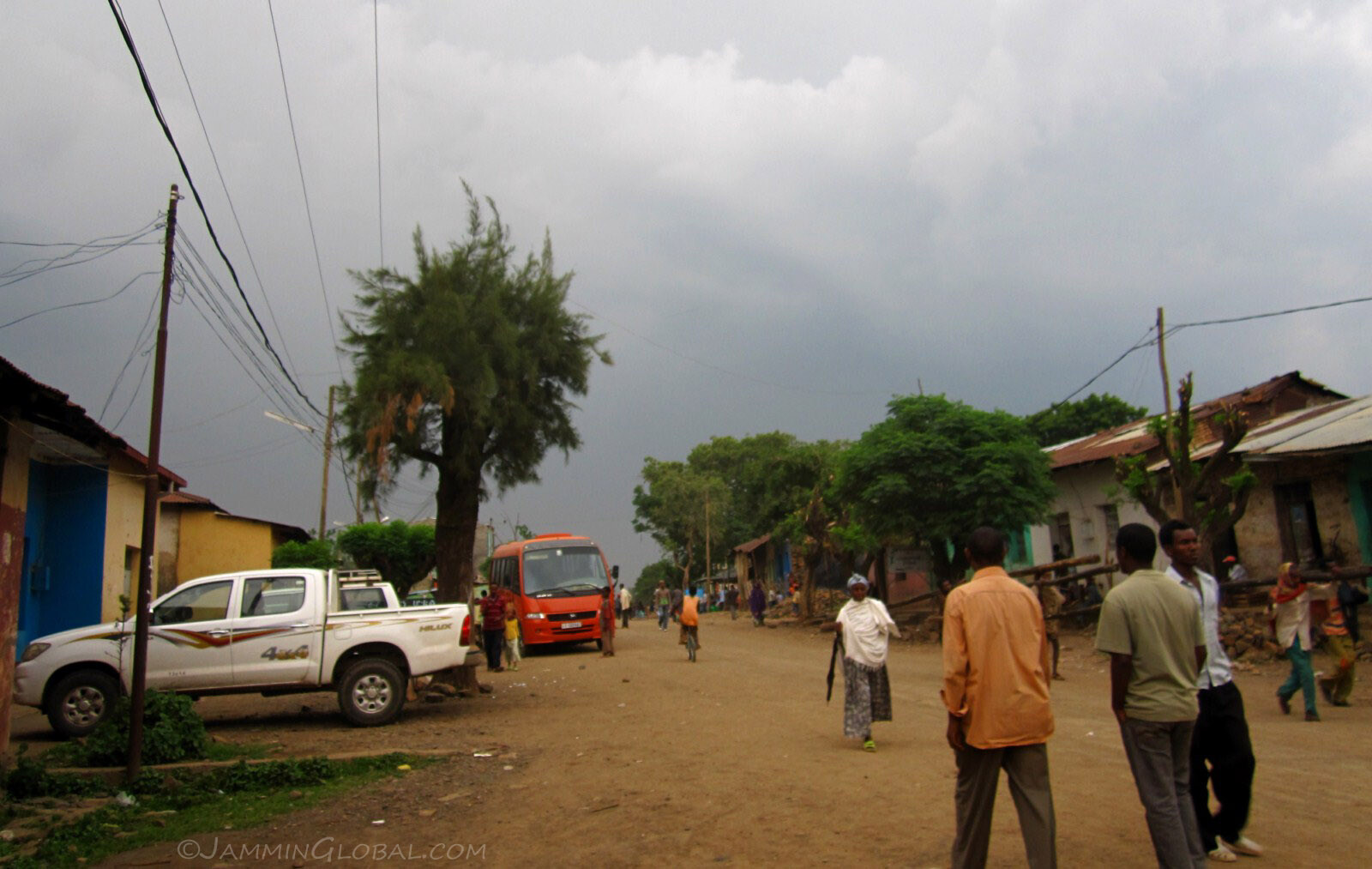 I rolled into the village of Adi Arkay around 3:30 pm and was glad to have made it to shelter before the evening's rain.
I rolled into the village of Adi Arkay around 3:30 pm and was glad to have made it to shelter before the evening's rain.
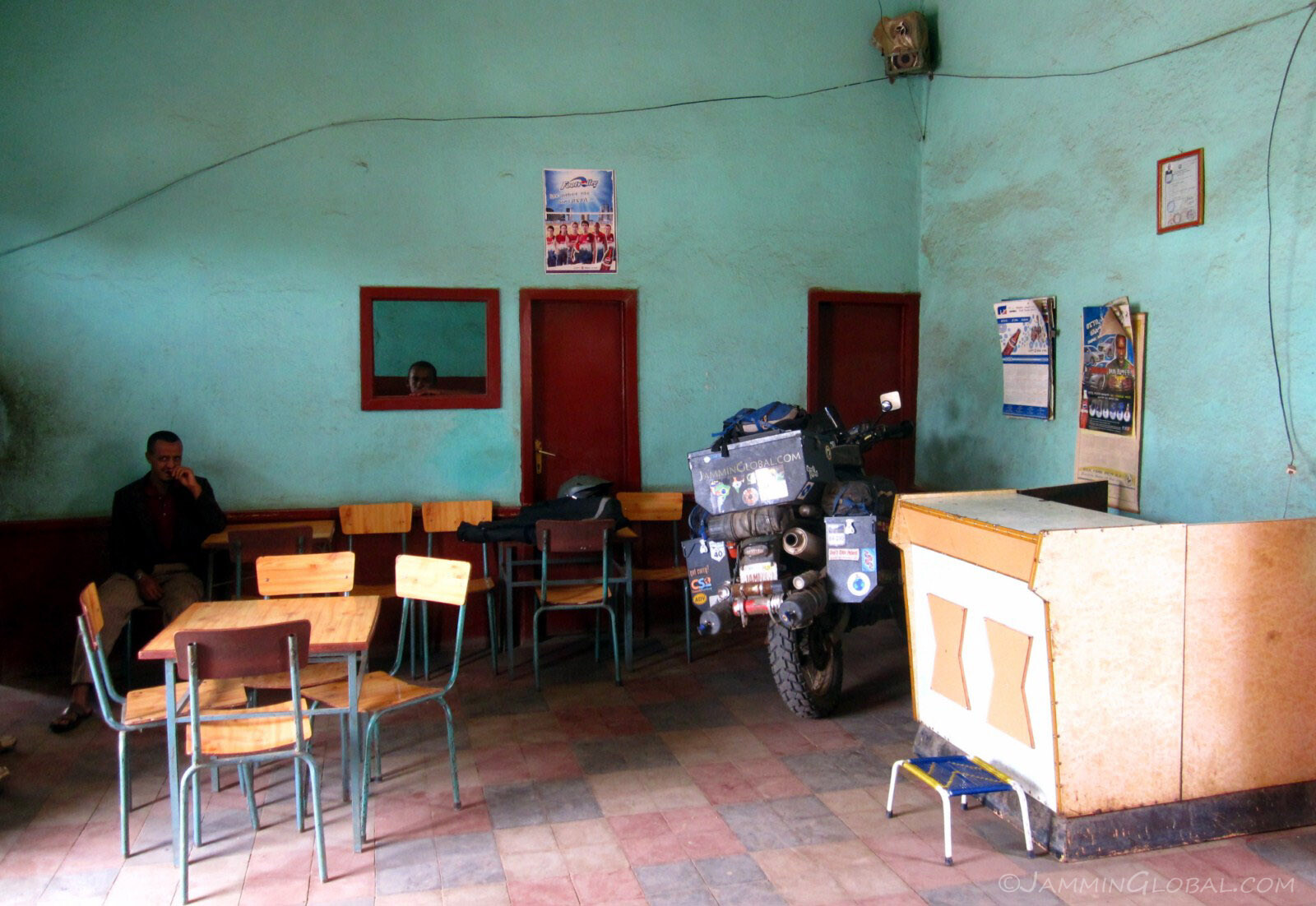 I stayed at the Ras Dashen Hotel and parked sanDRina in the restaurant. Upon meeting the manager, I told him not to give me the farenji (foreigner) price, which prompted laughter. It's very common in Ethiopia and many other countries to have separate prices for locals and foreigners and this is fine with me for national parks and historical sites but not for food and basic hotel rates.
I stayed at the Ras Dashen Hotel and parked sanDRina in the restaurant. Upon meeting the manager, I told him not to give me the farenji (foreigner) price, which prompted laughter. It's very common in Ethiopia and many other countries to have separate prices for locals and foreigners and this is fine with me for national parks and historical sites but not for food and basic hotel rates.
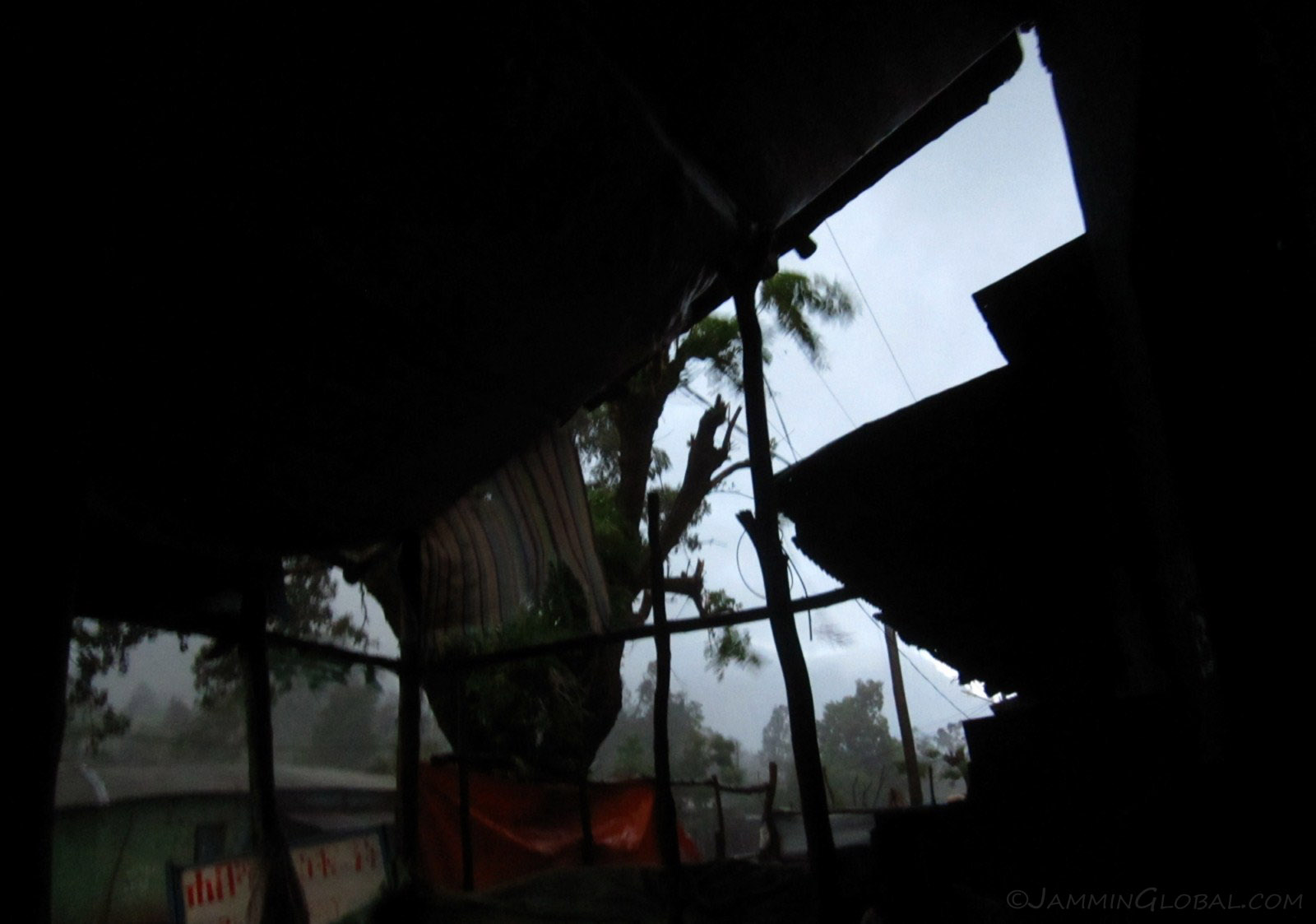 I walked next door for dinner and halfway through the meal, the winds picked up and heavy rain ensued for more than an hour. It was intense. Lightning and thunder followed each other closely and it felt like artillery fire at times. The pounding of the rain was deafening on the thin metal roof and that's when I discovered the reason for ear lobes - to help us close our ears.
I walked next door for dinner and halfway through the meal, the winds picked up and heavy rain ensued for more than an hour. It was intense. Lightning and thunder followed each other closely and it felt like artillery fire at times. The pounding of the rain was deafening on the thin metal roof and that's when I discovered the reason for ear lobes - to help us close our ears.
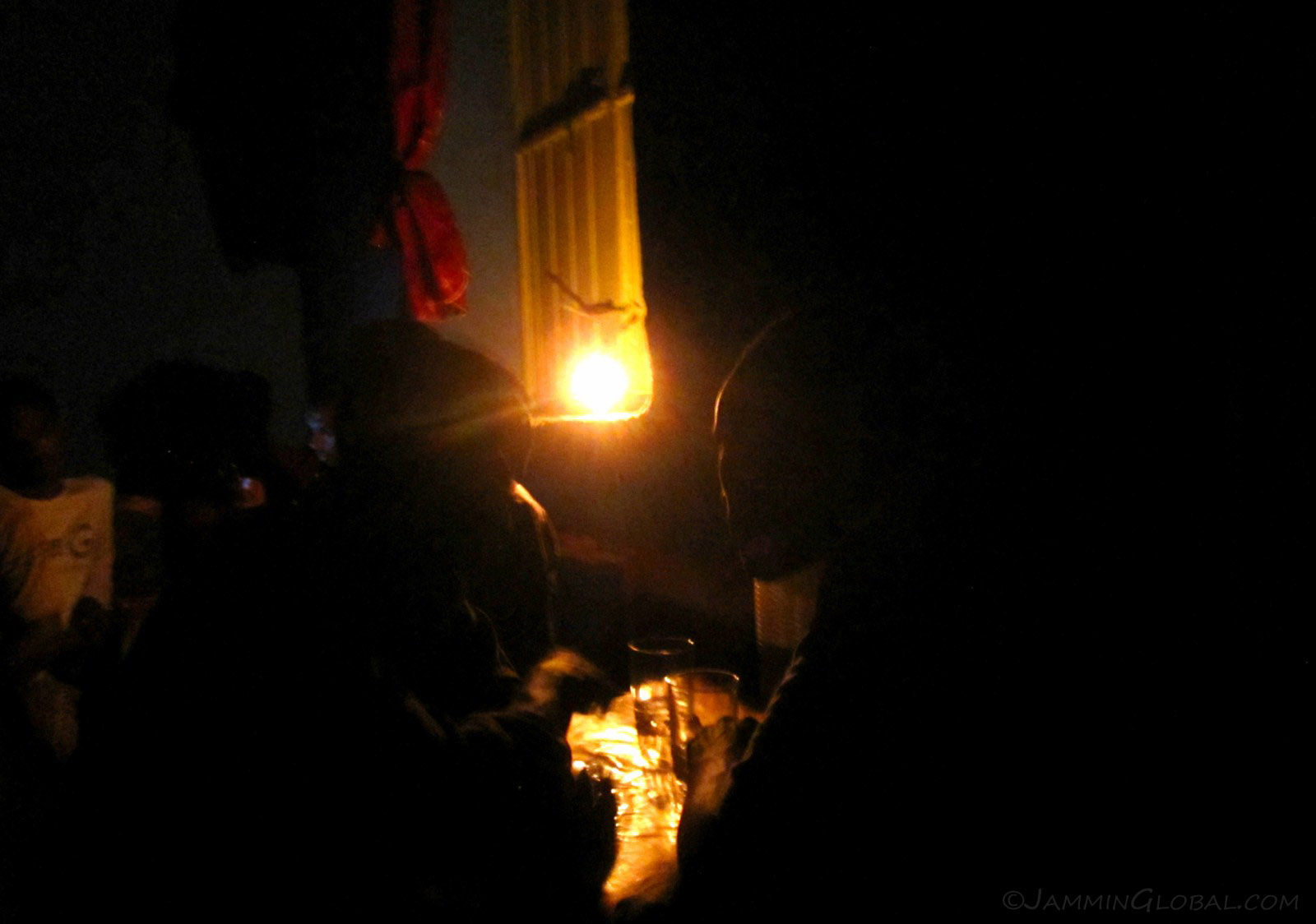 All the restaurant patrons had finished their meal and we patiently waited inside for the rain to subside. I only had about 20 m to get to my hotel but I knew I would be soaked to the bone if I ventured out during the downpour.
All the restaurant patrons had finished their meal and we patiently waited inside for the rain to subside. I only had about 20 m to get to my hotel but I knew I would be soaked to the bone if I ventured out during the downpour.
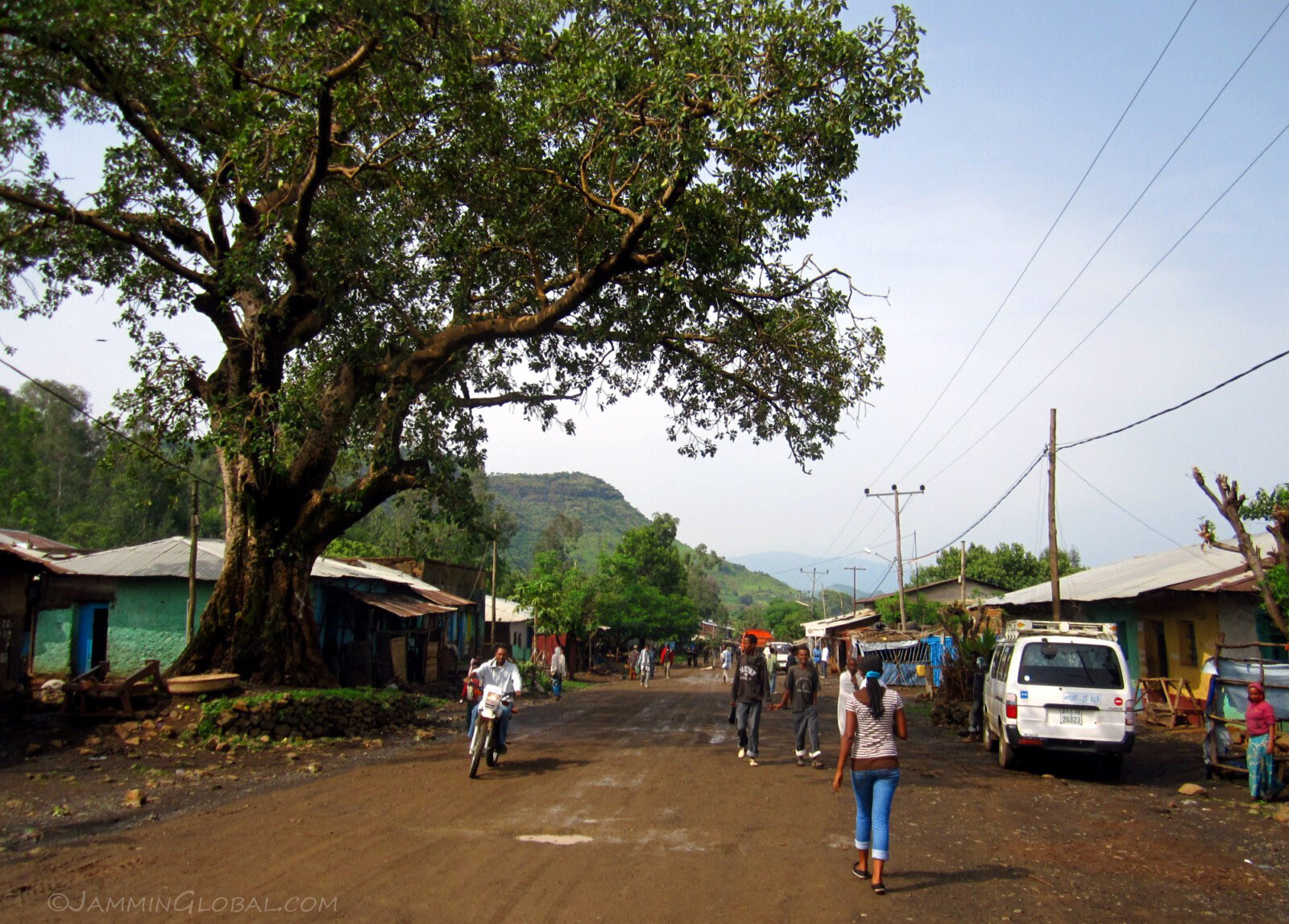 The morning after in Adi Arkay, looking bright and clean after heavy, long rains during the night. My strategy was to wait a few hours before hitting the road to allow the strong sun to dry the road a bit and also to allow a few buses to run the route and splash the water from the road. I like slow mornings.
The morning after in Adi Arkay, looking bright and clean after heavy, long rains during the night. My strategy was to wait a few hours before hitting the road to allow the strong sun to dry the road a bit and also to allow a few buses to run the route and splash the water from the road. I like slow mornings.
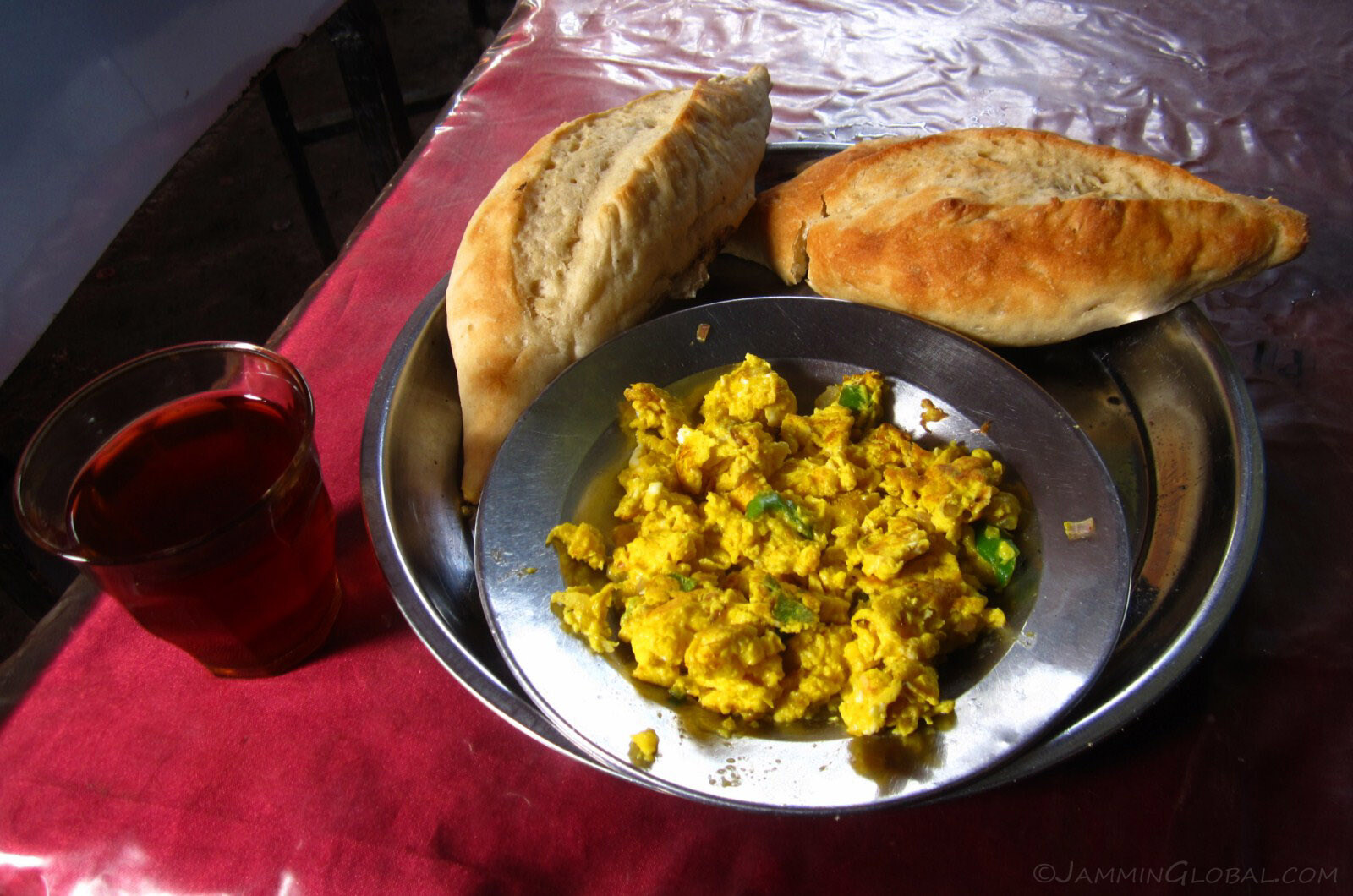 Breakfast of scrambled eggs with chilies, fresh bread and tea for Birr 13 (\$0.77).
Breakfast of scrambled eggs with chilies, fresh bread and tea for Birr 13 (\$0.77).
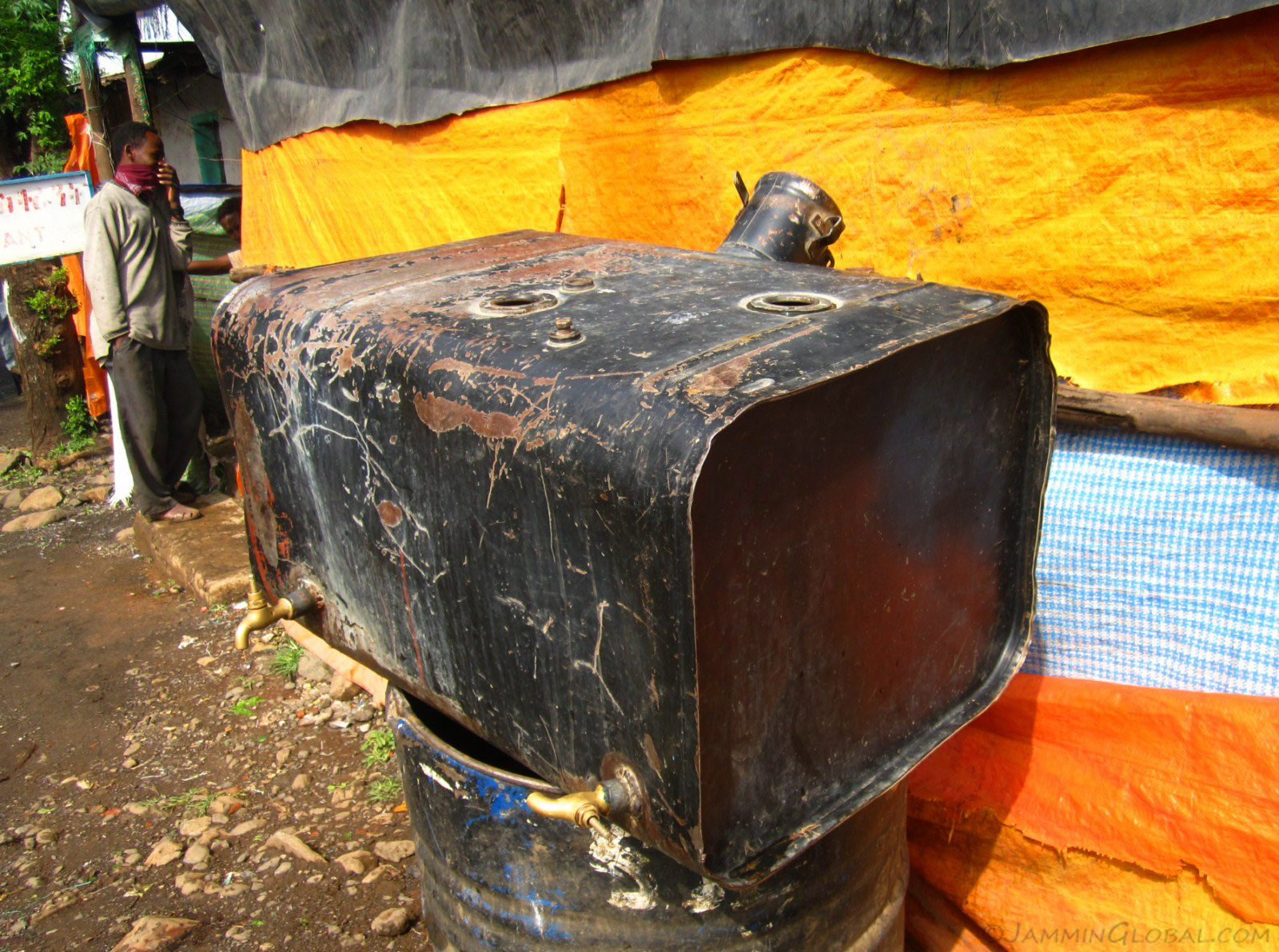 Hand-washing apparatus outside the restaurant; a truck's fuel tank converted into a water holder.
Hand-washing apparatus outside the restaurant; a truck's fuel tank converted into a water holder.
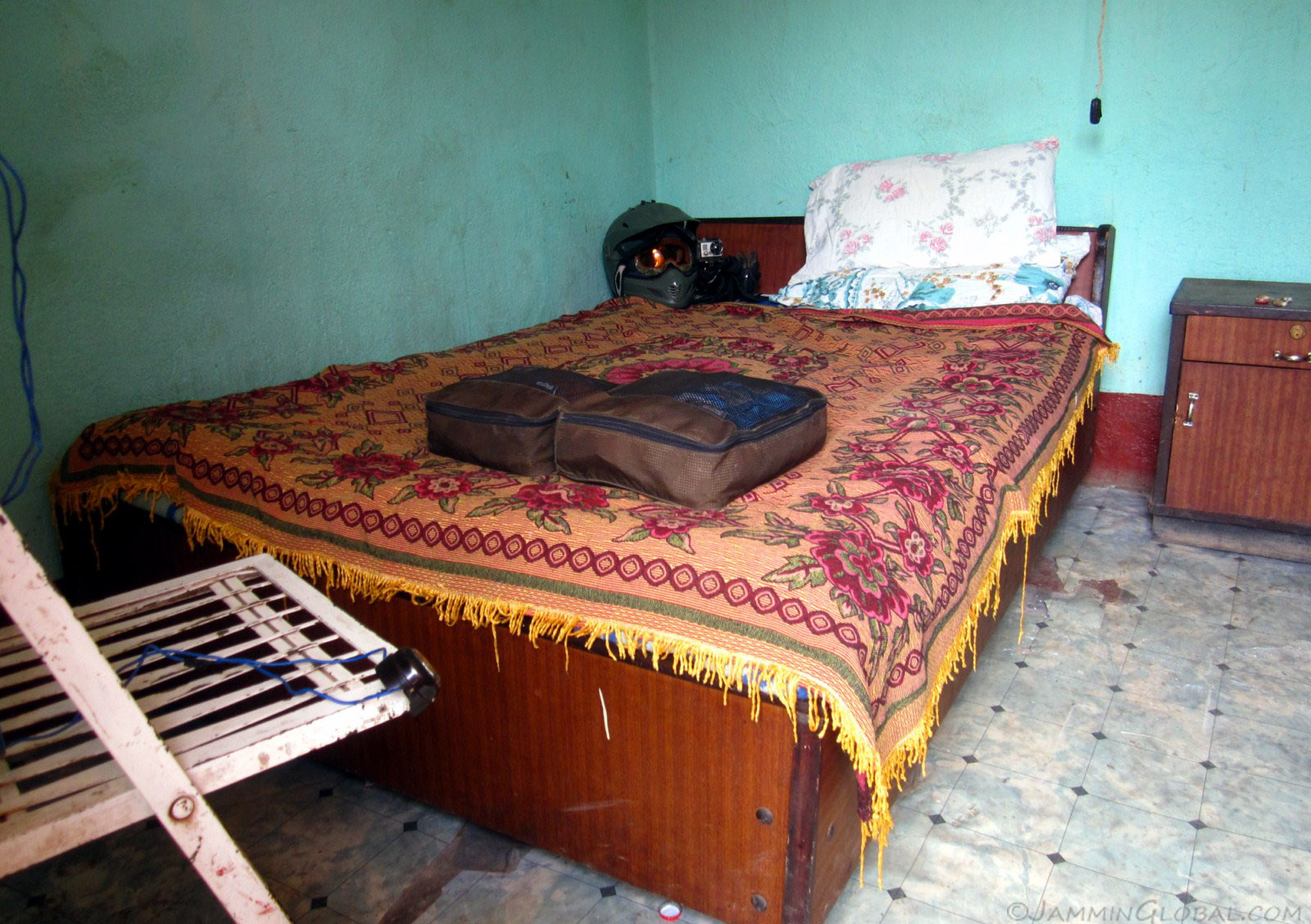 My bed at the Ras Dashen hotel, which I got for Birr 50 (\$3). Note the electrical socket hanging on the edge of the chair. I always check to make sure the electricity is safe to use by plugging in my camera battery charger first (since I have a spare) and if that doesn't blow up, then it's all good.
My bed at the Ras Dashen hotel, which I got for Birr 50 (\$3). Note the electrical socket hanging on the edge of the chair. I always check to make sure the electricity is safe to use by plugging in my camera battery charger first (since I have a spare) and if that doesn't blow up, then it's all good.
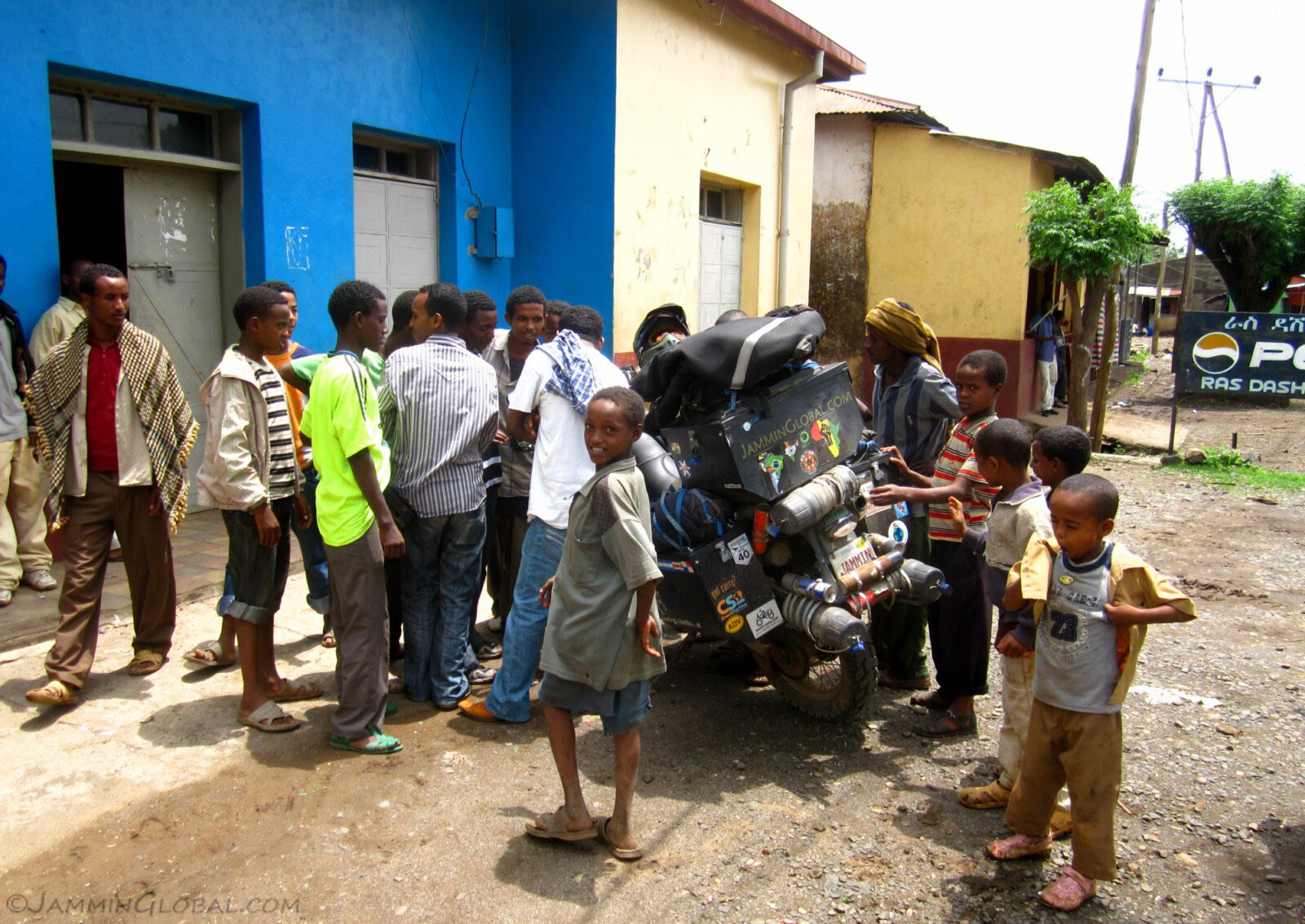 Causing a scene upon my departure from Adi Arkay. Everyone loves the strong pulse from my exhaust. It even scares grown men, hehe.
Causing a scene upon my departure from Adi Arkay. Everyone loves the strong pulse from my exhaust. It even scares grown men, hehe.
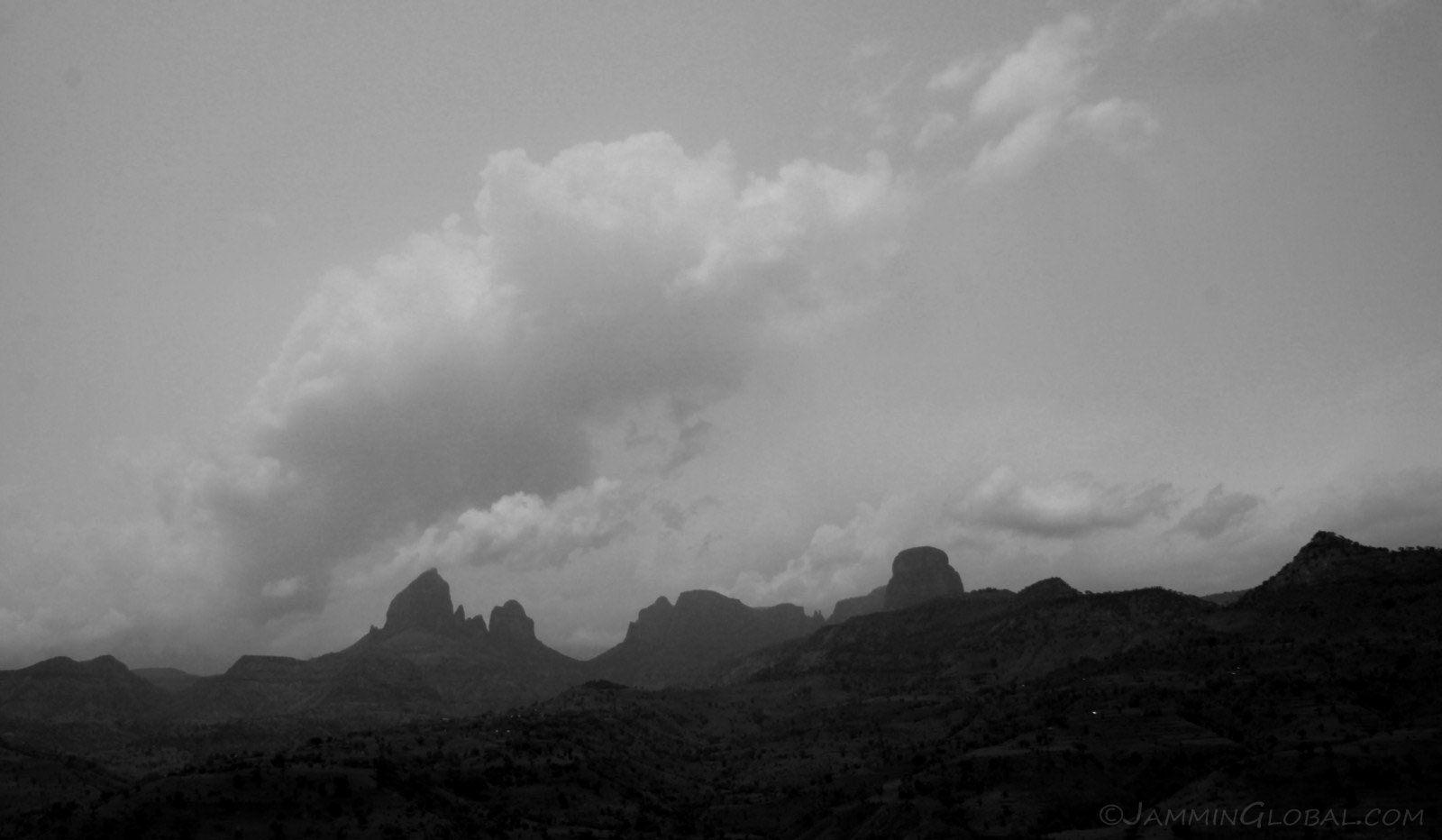 A beautiful shot of Ras Dashen and some photogenic clouds.
A beautiful shot of Ras Dashen and some photogenic clouds.
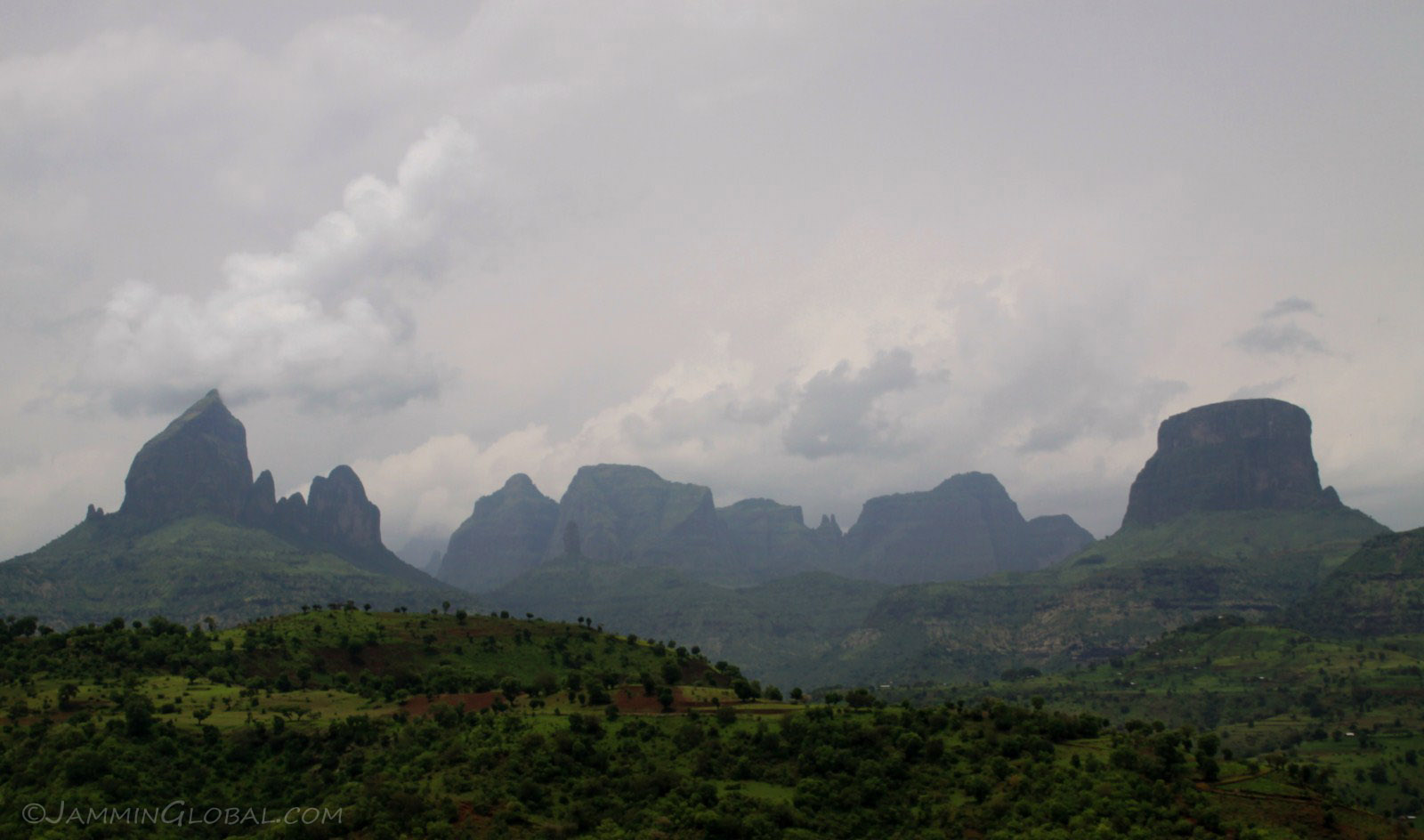 Ras Dashen on the left at 4,550 m (14,928 ft) is the tallest peak in Ethiopia and fourth tallest in Africa. According to volcanologists, Ras Rashen is the eastern peak of an enormous volcano. Wow. To me, this cathedral of rocks reminded me of my visit to Torres del Paine in southern Chile - lone towers of rock in remote areas, surrounded by beautiful nature.
Ras Dashen on the left at 4,550 m (14,928 ft) is the tallest peak in Ethiopia and fourth tallest in Africa. According to volcanologists, Ras Rashen is the eastern peak of an enormous volcano. Wow. To me, this cathedral of rocks reminded me of my visit to Torres del Paine in southern Chile - lone towers of rock in remote areas, surrounded by beautiful nature.
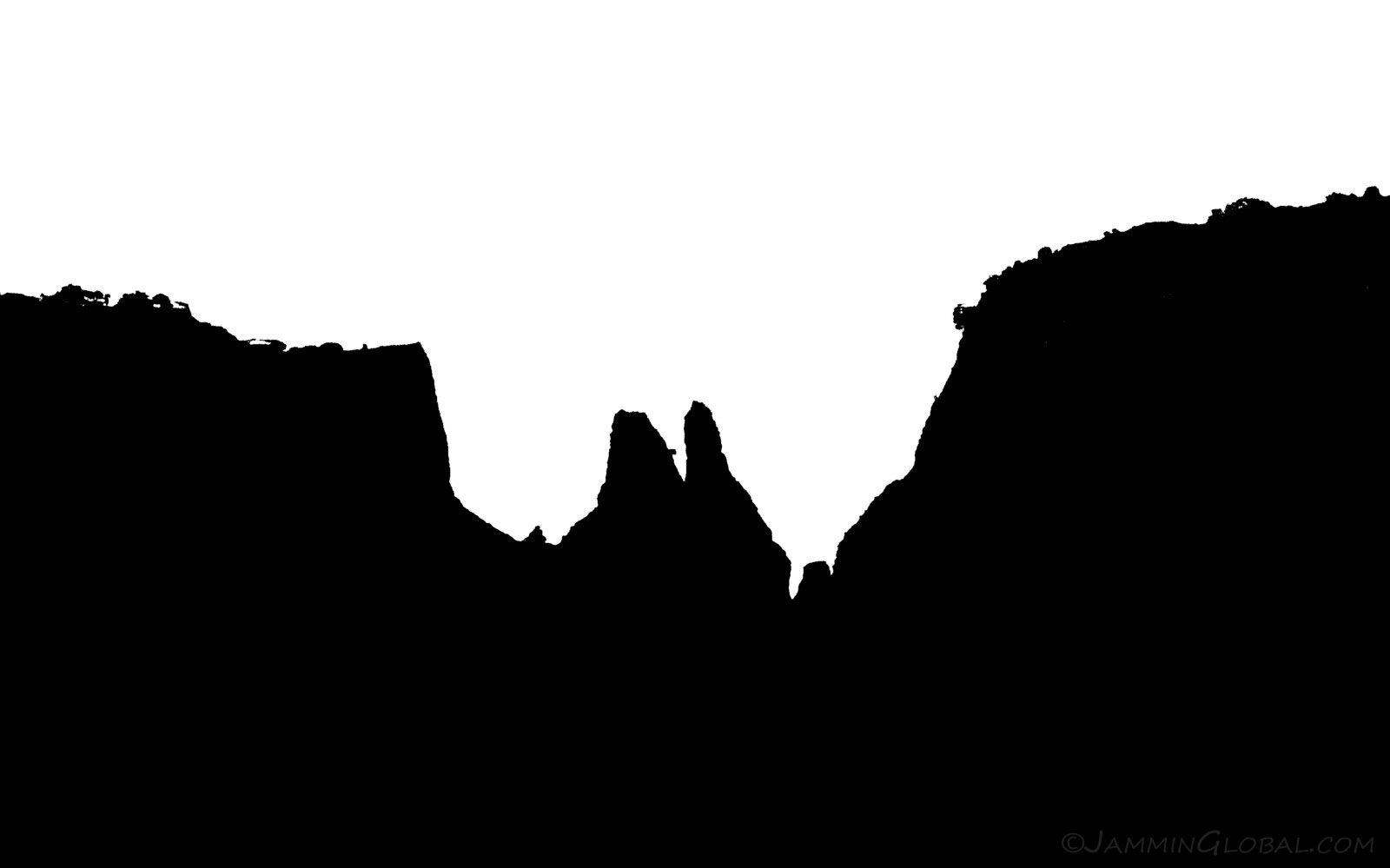 Playing with contrast and highlighting a natural 'W' in the mountain profile.
Playing with contrast and highlighting a natural 'W' in the mountain profile.
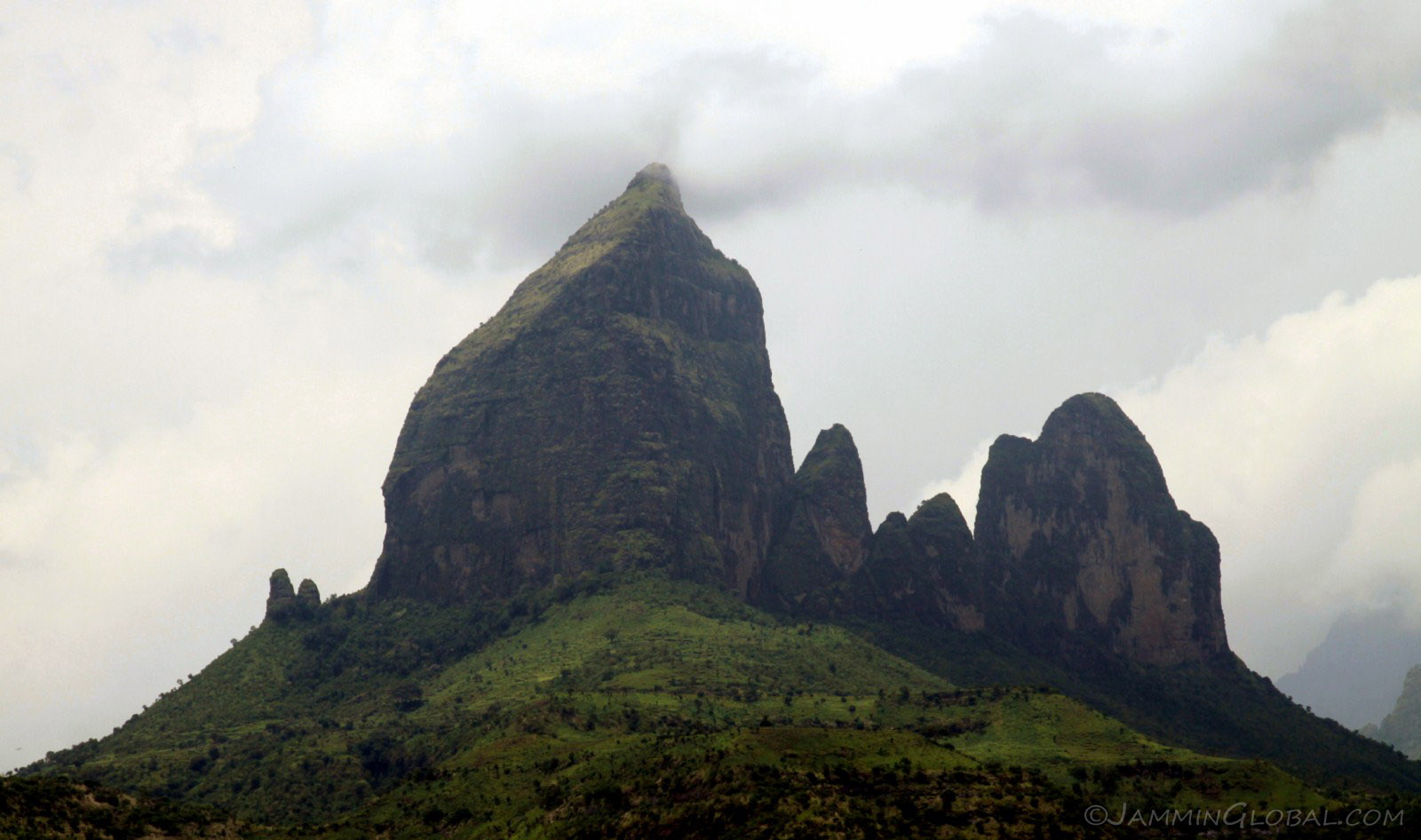 The prominence of Ras Dashen. Its original name in Amharic is Ras Dejen, which means the general who fights in front of the Emperor.
The prominence of Ras Dashen. Its original name in Amharic is Ras Dejen, which means the general who fights in front of the Emperor.
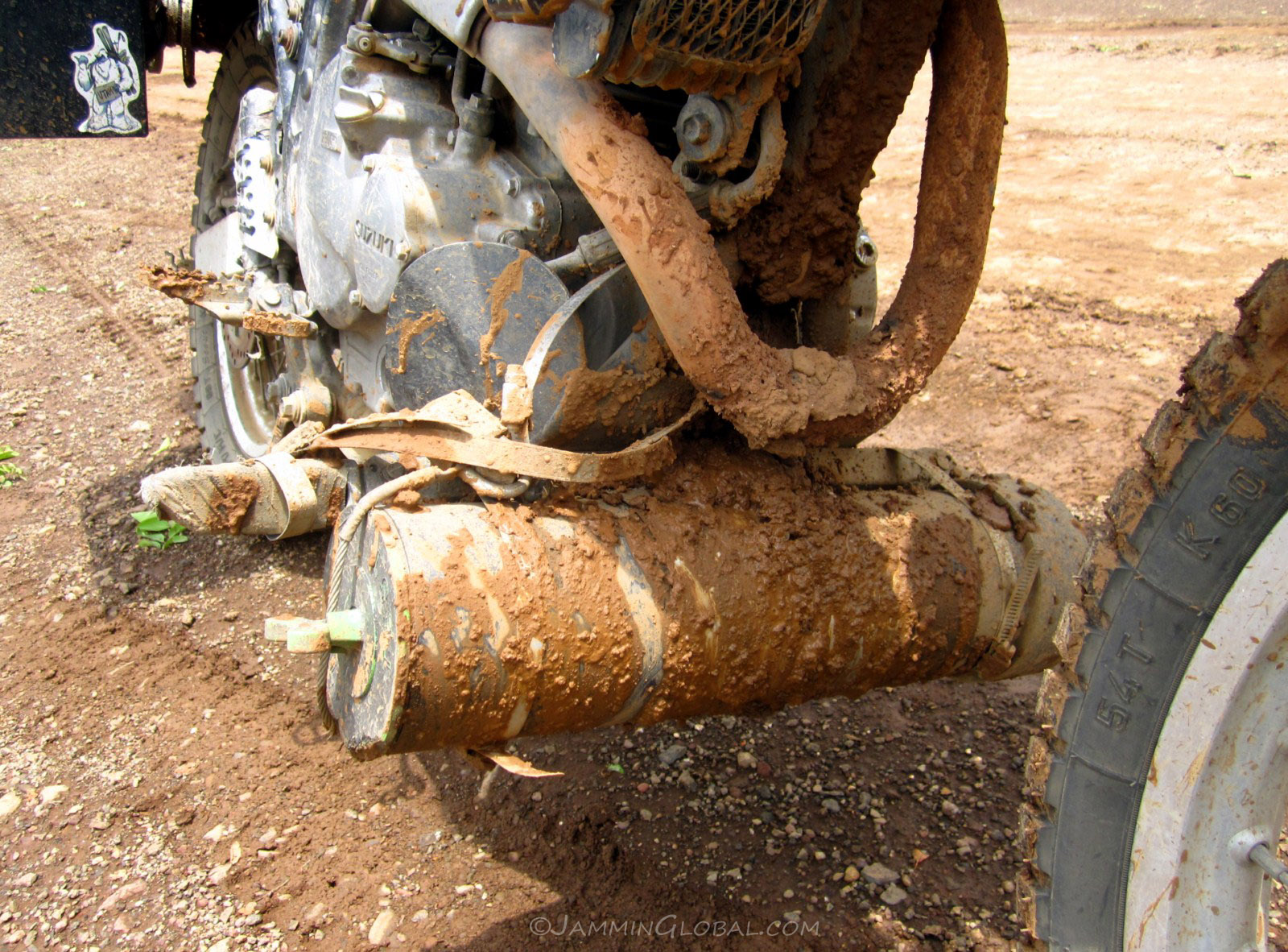 The heavy rains from the previous night had left the road soggy and sanDRina was getting a mud bath. She loves it.
The heavy rains from the previous night had left the road soggy and sanDRina was getting a mud bath. She loves it.
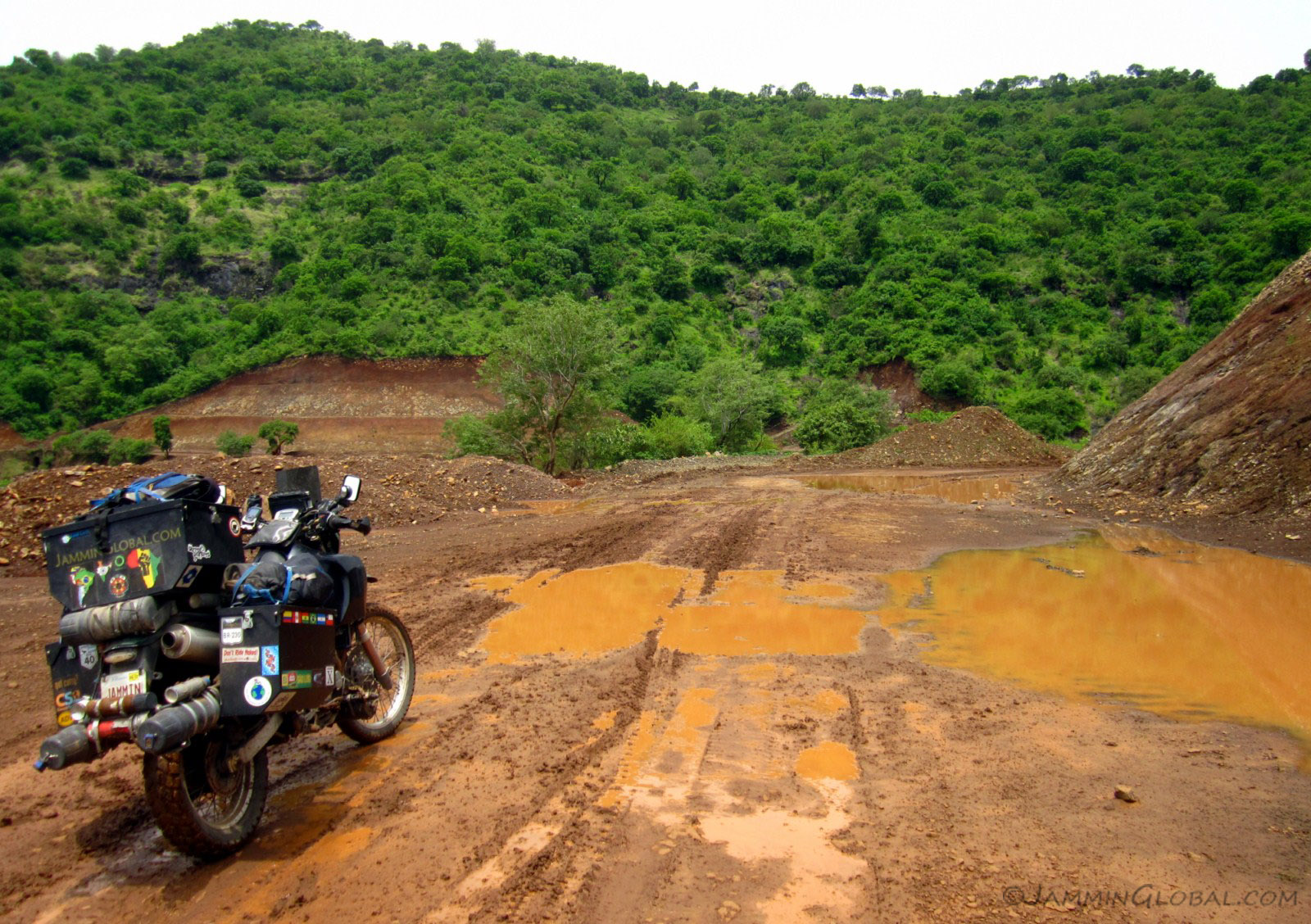 Hmmm, soft mud pools waiting to suck us in. Since I travel solo, I take extra precaution when coming across terrain that could potentially strand me. If I can't go around the mud pools and it looks dicey, I'll walk through the pools and make sure there are no hidden holes or soft mud that could trap the rear tire, especially one that is under this much load.
Hmmm, soft mud pools waiting to suck us in. Since I travel solo, I take extra precaution when coming across terrain that could potentially strand me. If I can't go around the mud pools and it looks dicey, I'll walk through the pools and make sure there are no hidden holes or soft mud that could trap the rear tire, especially one that is under this much load.
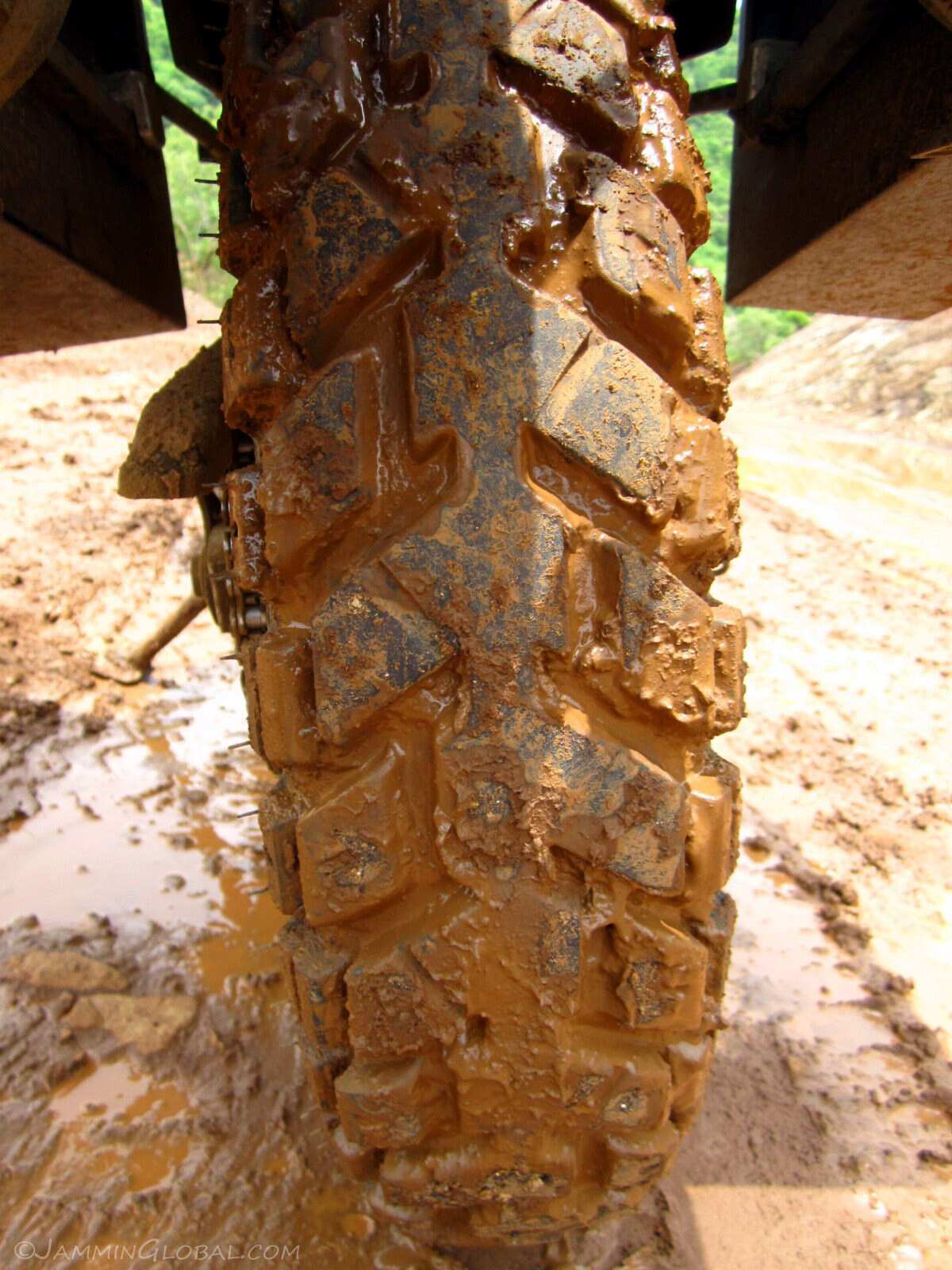 The Heidenau K60 Scout doing just fine in the muds of northern Ethiopia. It's rated as a 50/50 tire but its tread is quite deep and proved sufficient for mud riding, which usually requires a more aggressive tread pattern.
The Heidenau K60 Scout doing just fine in the muds of northern Ethiopia. It's rated as a 50/50 tire but its tread is quite deep and proved sufficient for mud riding, which usually requires a more aggressive tread pattern.
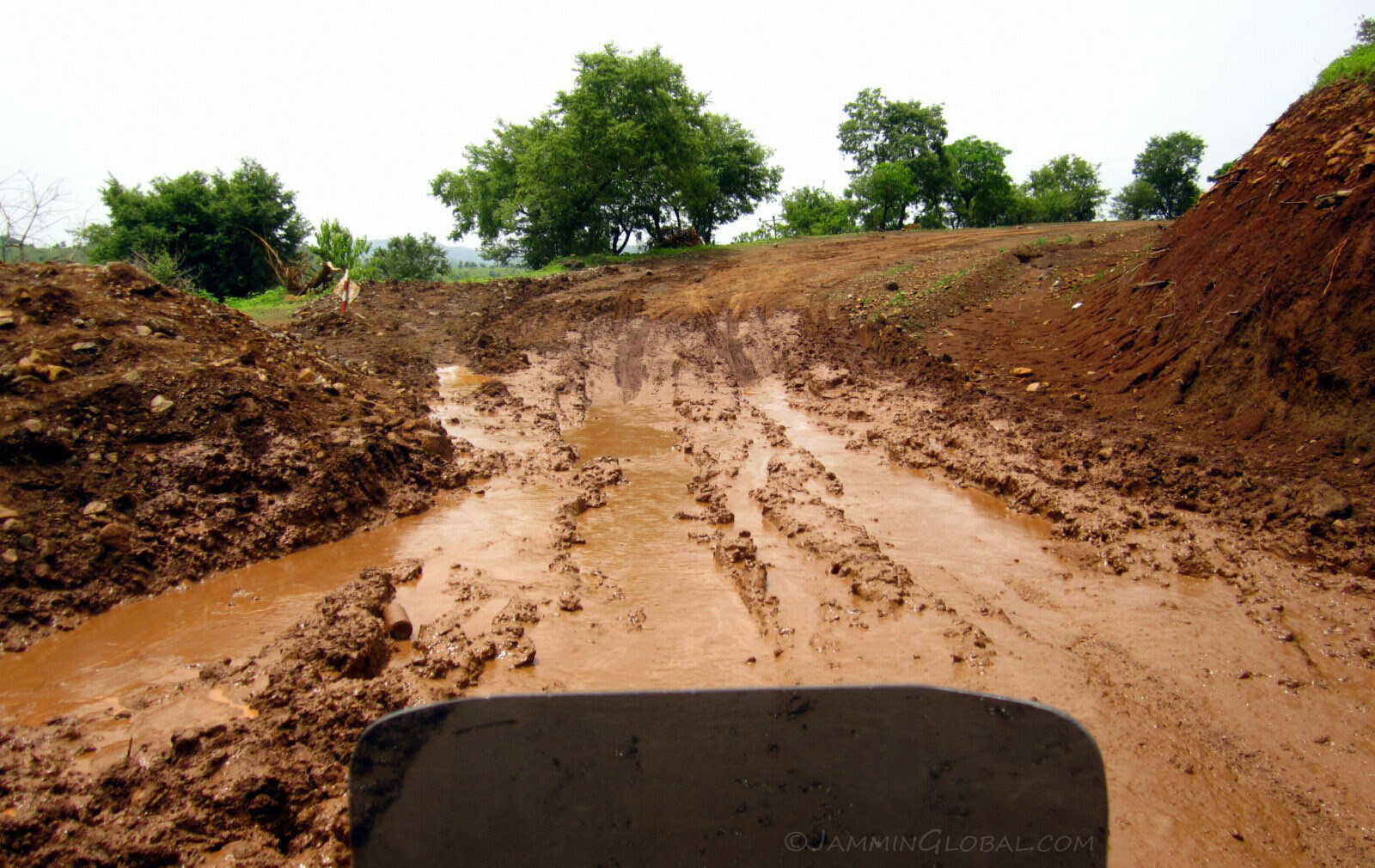 Soupy mud just before an incline. I had to make sure to get enough revs and keep the momentum up to make sure we could climb out without getting stuck, which we did.
Soupy mud just before an incline. I had to make sure to get enough revs and keep the momentum up to make sure we could climb out without getting stuck, which we did.
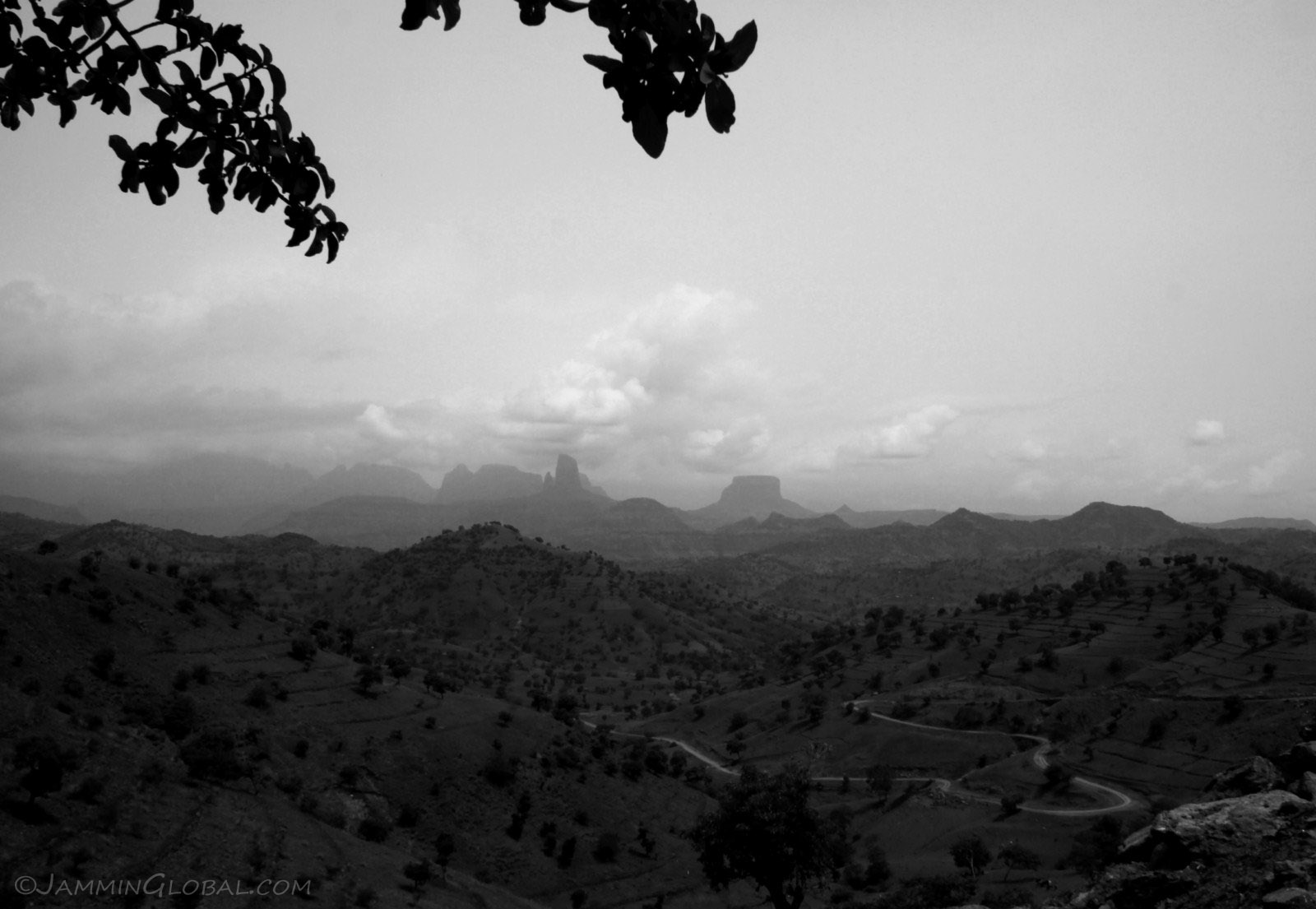 All this mud riding was going on in the shadows of the epic Semien Mountains. Ethiopia truly is an adventure rider's paradise.
All this mud riding was going on in the shadows of the epic Semien Mountains. Ethiopia truly is an adventure rider's paradise.
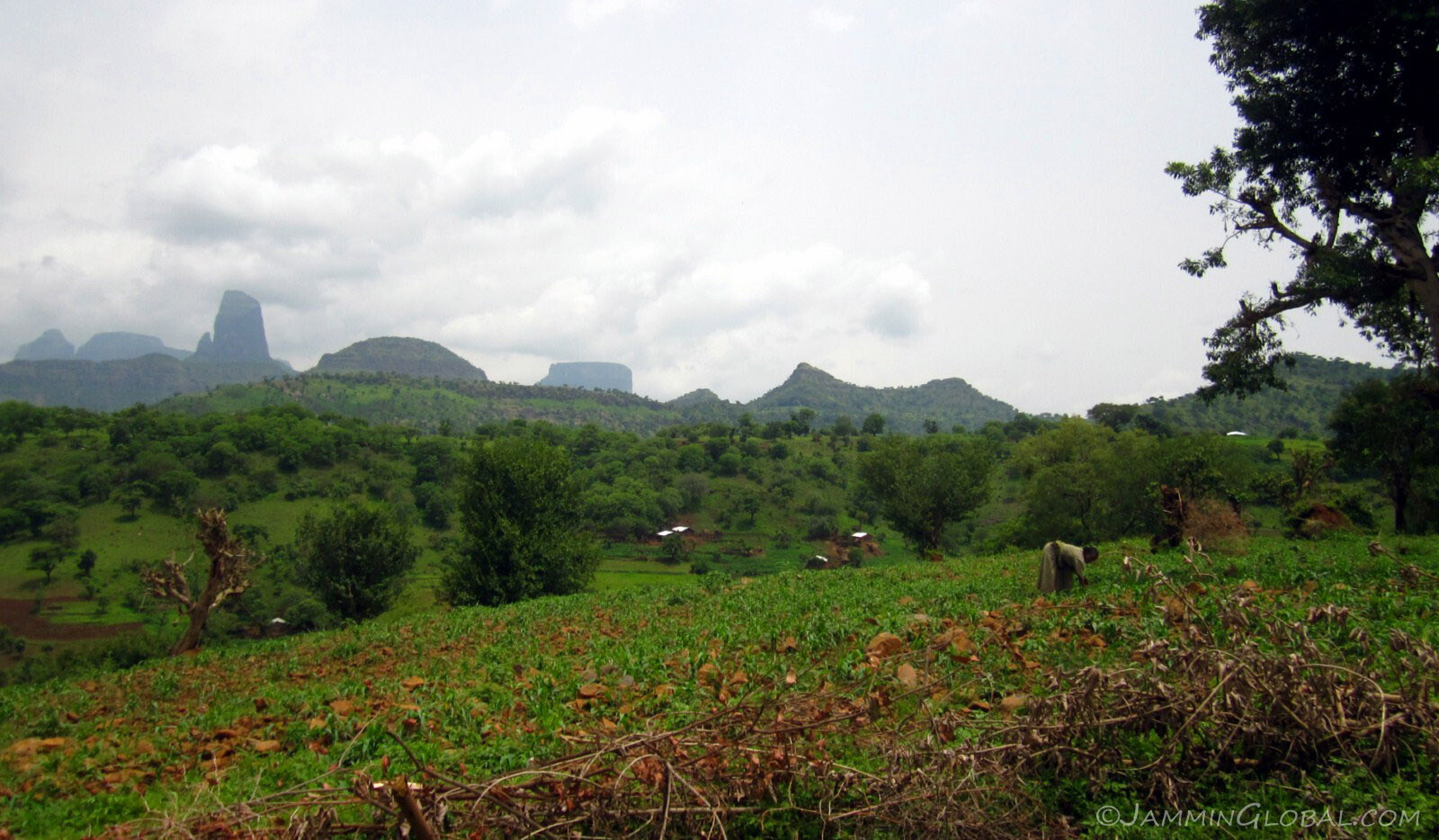 A farmer tending to her field with a fantastic view of Ras Dashen.
A farmer tending to her field with a fantastic view of Ras Dashen.
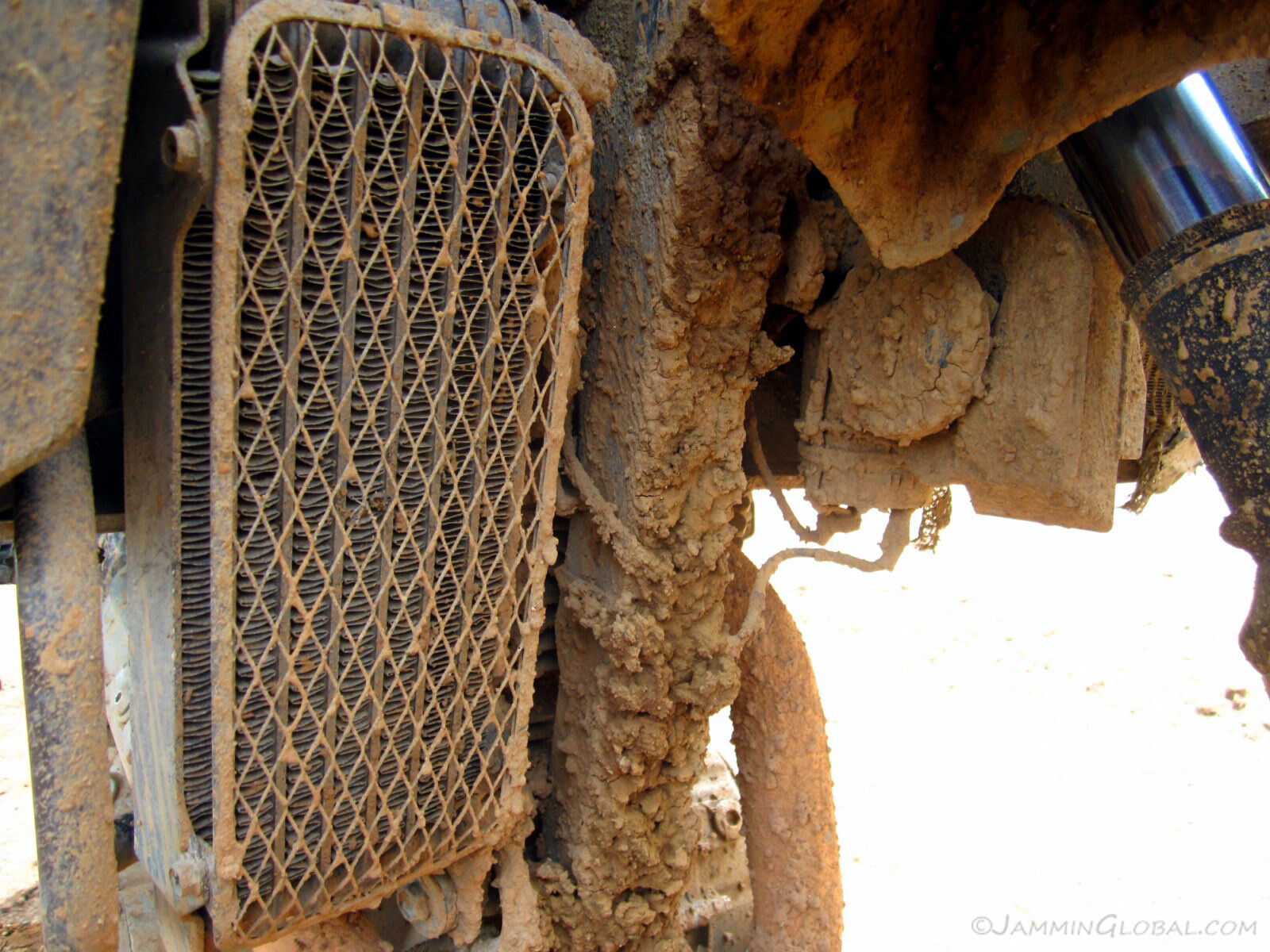 sanDRina coated in mud and satisfied.
sanDRina coated in mud and satisfied.
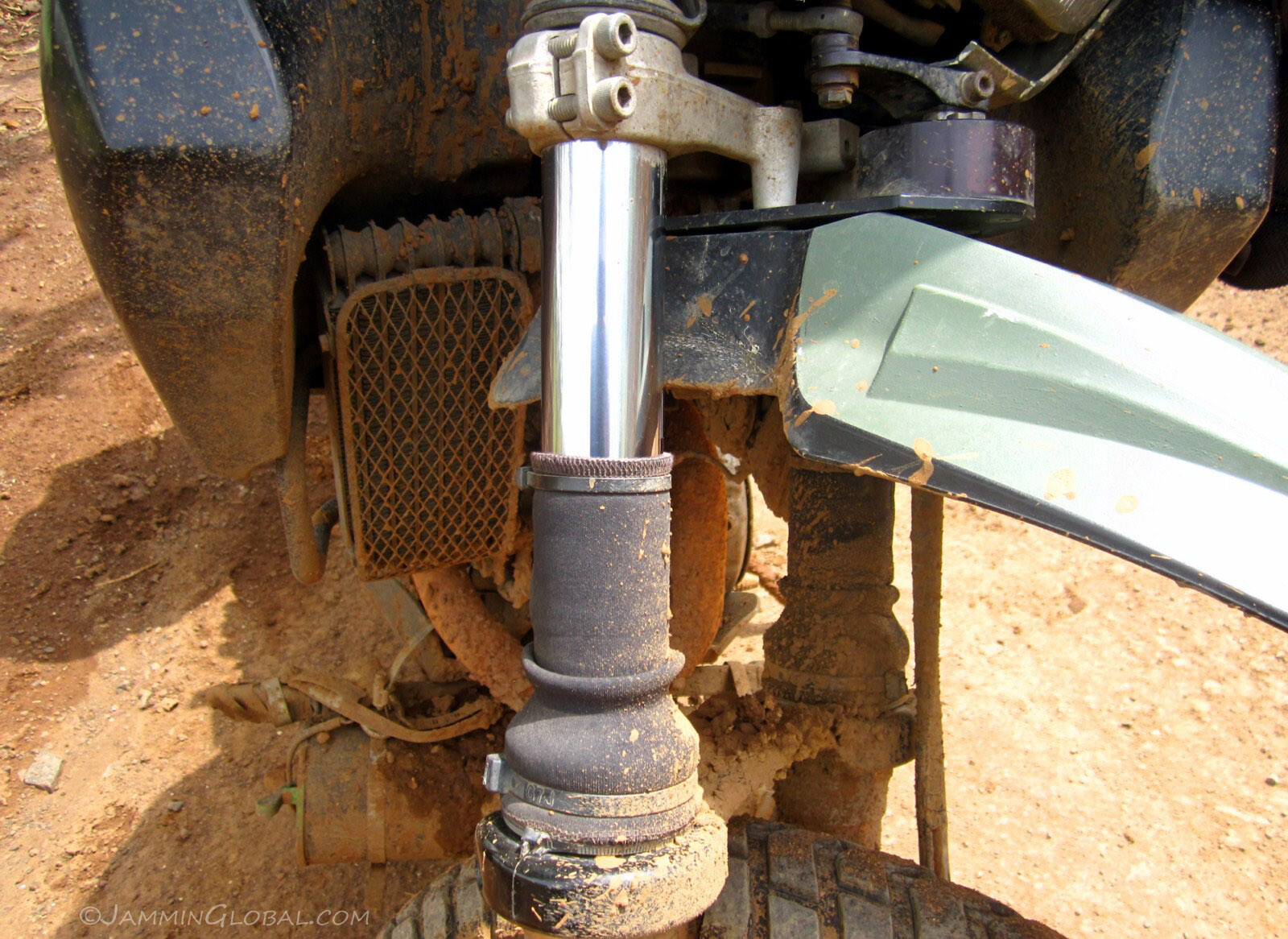 Happy to see shiny fork tubes while riding in the mud. SealSavers doing their job of keeping debris away from the fork seals, which have never leaked on this trip. Also happy to see how little mud was on the oil cooler with my cut fender, because if mud gets lodged into the fins of the radiator, the engine oil wouldn't cool down sufficiently. This bike is built tough.
Happy to see shiny fork tubes while riding in the mud. SealSavers doing their job of keeping debris away from the fork seals, which have never leaked on this trip. Also happy to see how little mud was on the oil cooler with my cut fender, because if mud gets lodged into the fins of the radiator, the engine oil wouldn't cool down sufficiently. This bike is built tough.
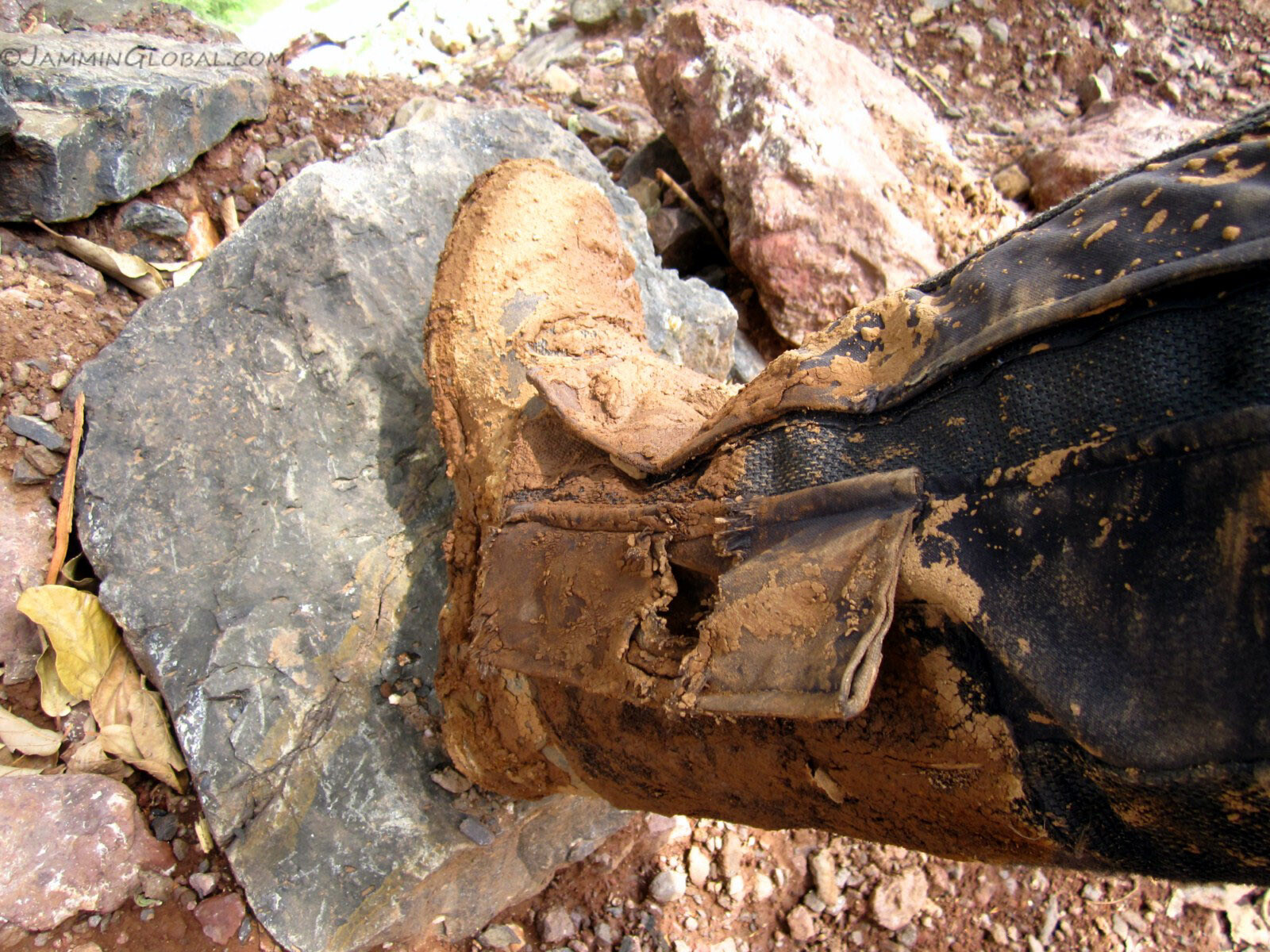 Muddy boots and pants. Yay.
Muddy boots and pants. Yay.
 The route flattened out as I headed north and I passed the Adi Harush refuge camp, which houses refugees from Eritrea, Somalia and Sudan. I have the fortune of using nature as my playground, yet I am aware of the struggles that my fellow man faces as he is exposed to all of nature’s wrath.
The route flattened out as I headed north and I passed the Adi Harush refuge camp, which houses refugees from Eritrea, Somalia and Sudan. I have the fortune of using nature as my playground, yet I am aware of the struggles that my fellow man faces as he is exposed to all of nature’s wrath.
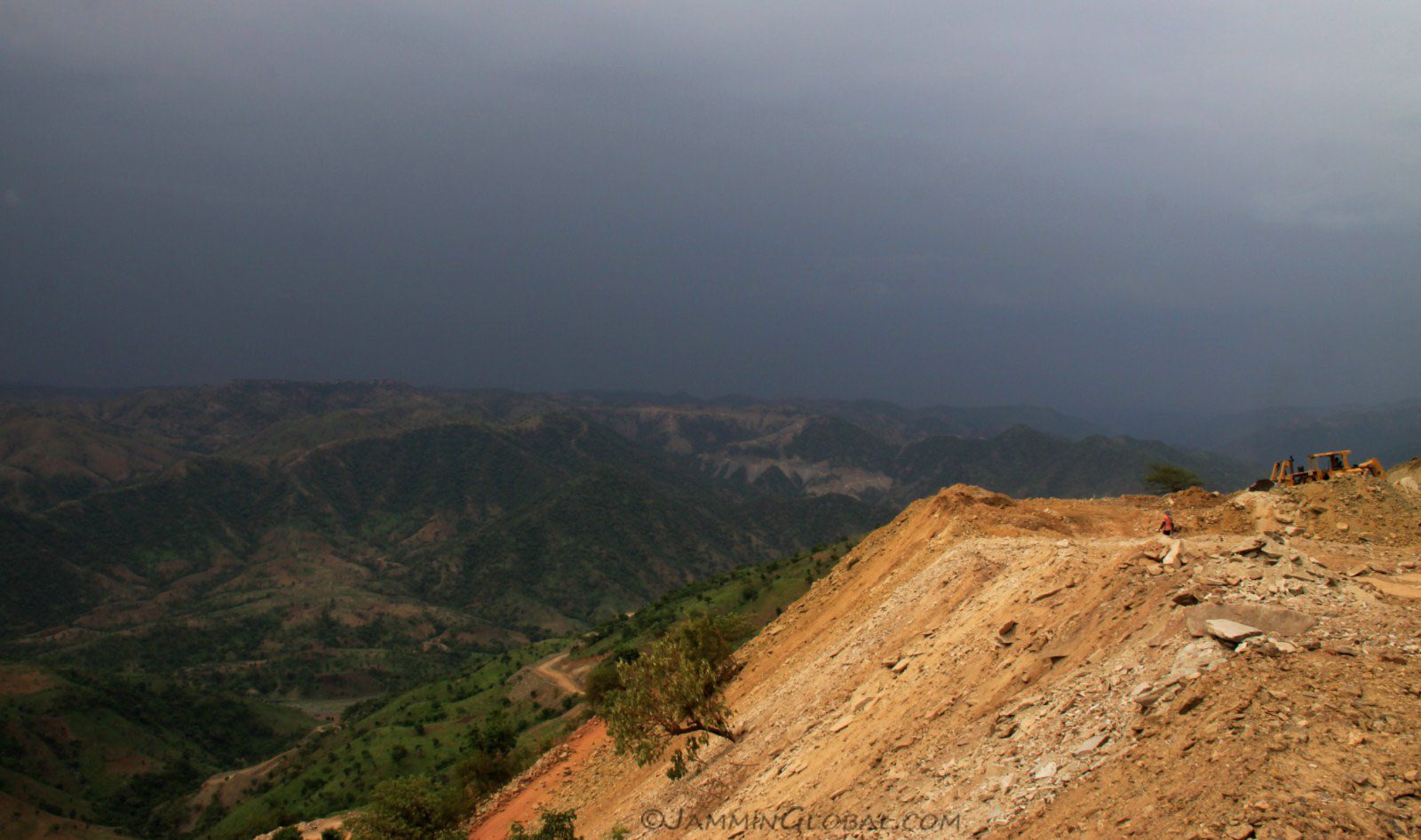 It was 3 pm and I was heading north into that darkness, where the rains have been unleashed. I was waiting at this construction site for a bulldozer to clear a path for vehicles and I wondered how much wet mud riding I'd be doing because of this hold-up.
It was 3 pm and I was heading north into that darkness, where the rains have been unleashed. I was waiting at this construction site for a bulldozer to clear a path for vehicles and I wondered how much wet mud riding I'd be doing because of this hold-up.
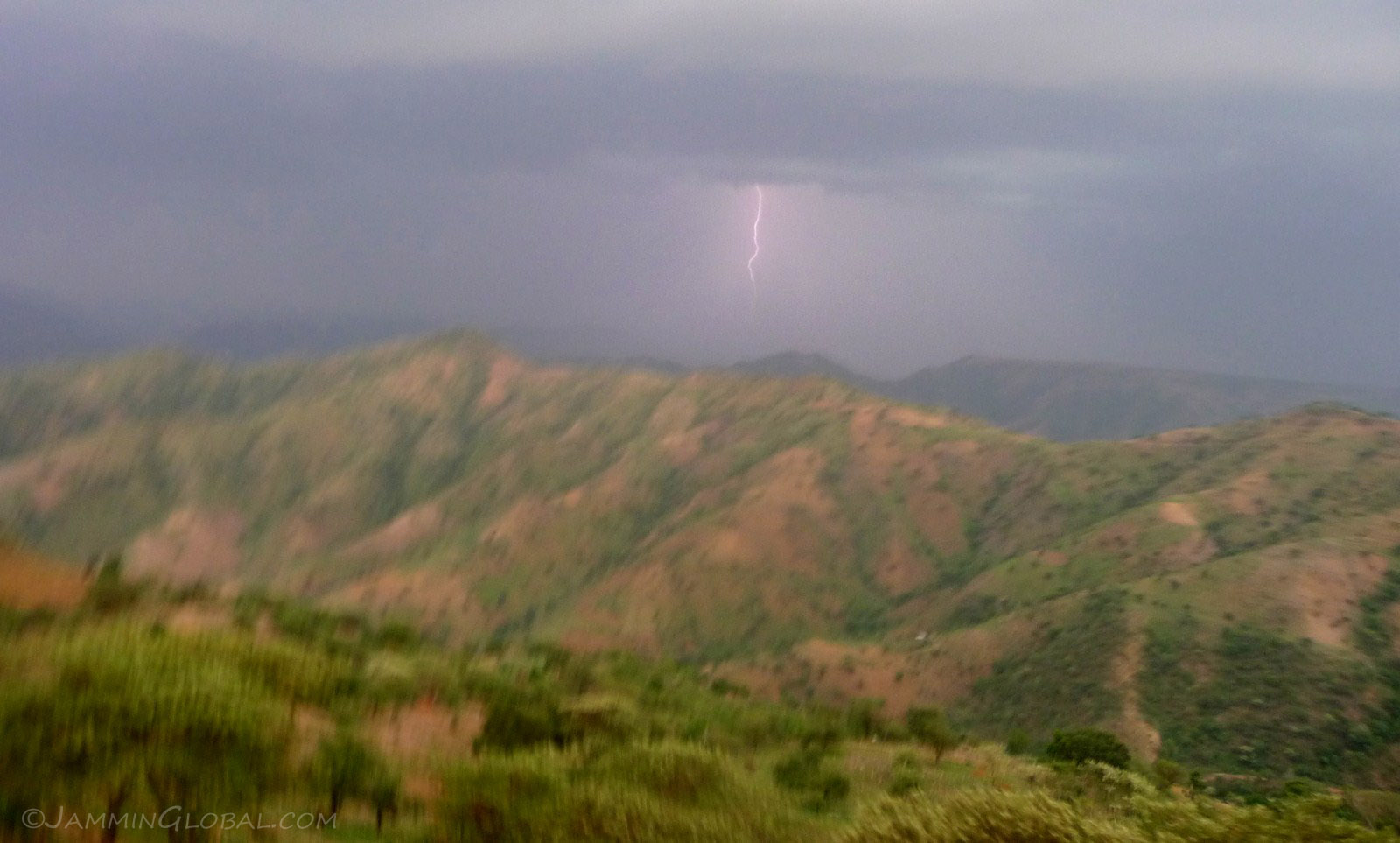 Yikes, biking and lightning don't go together. Although I've done a lot of that, so no worries.
Yikes, biking and lightning don't go together. Although I've done a lot of that, so no worries.
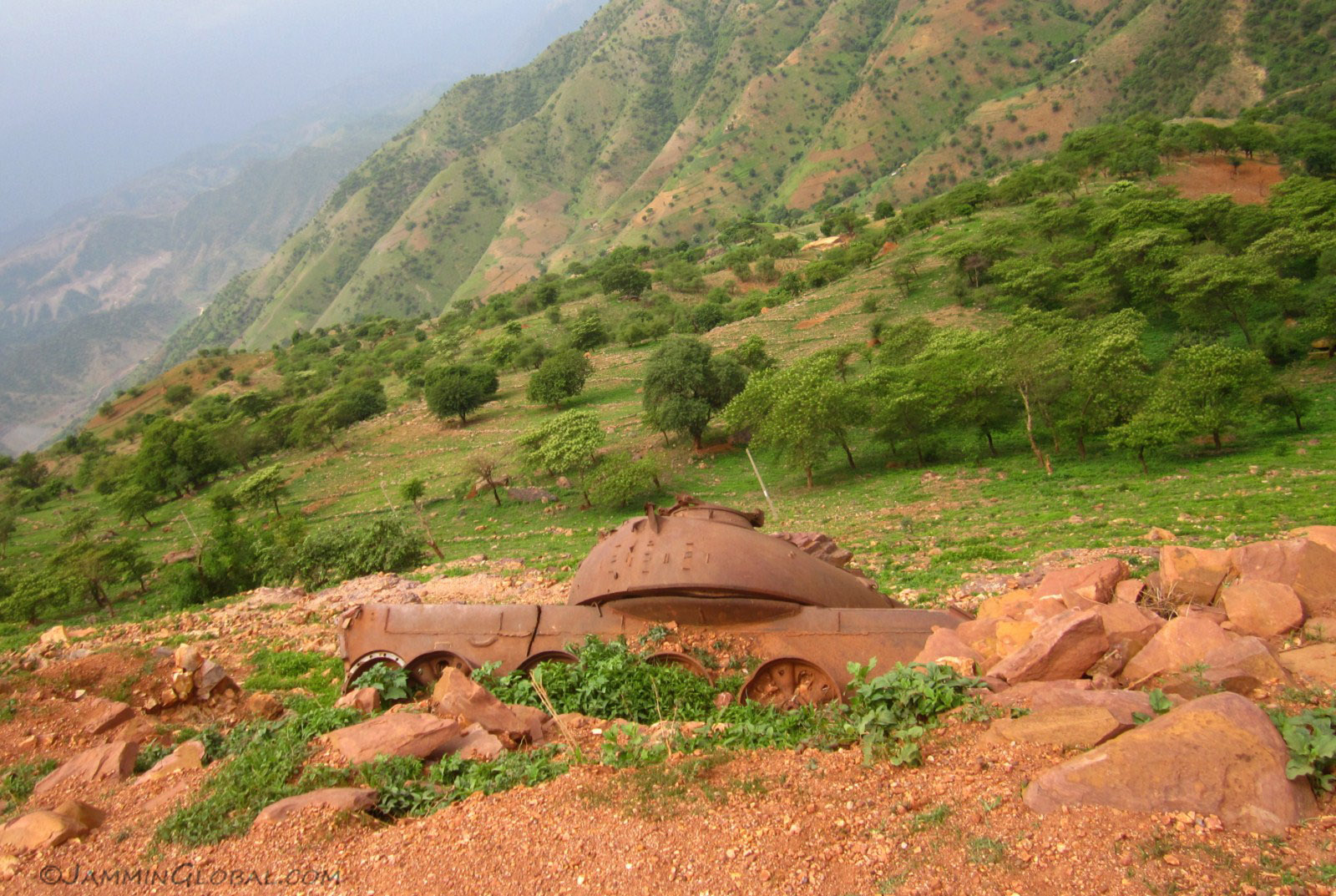 Another tank left to nature's whim.
Another tank left to nature's whim.
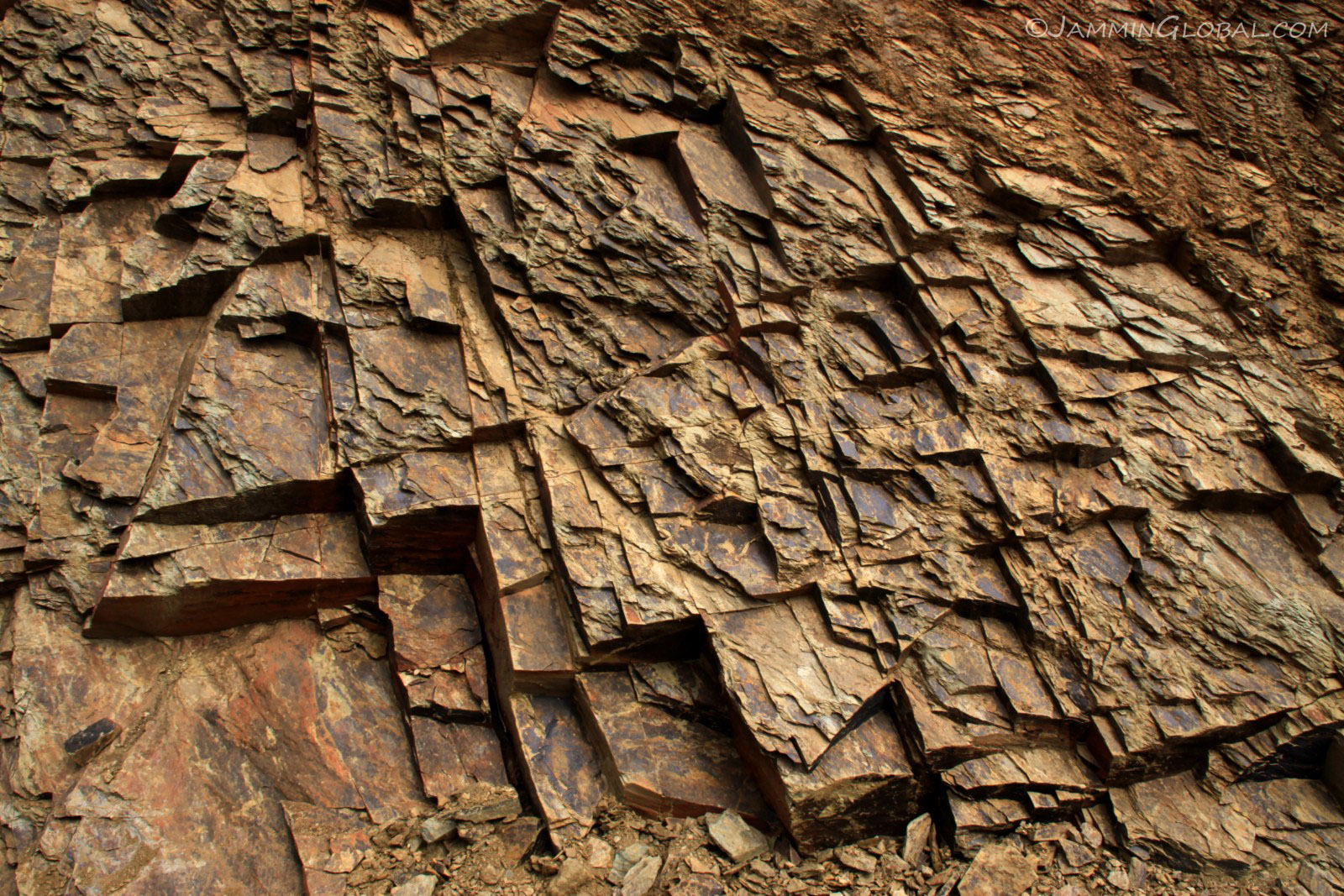 The sharp creases of shale rocks, which were blasted to make way for this road I'm riding on.
The sharp creases of shale rocks, which were blasted to make way for this road I'm riding on.
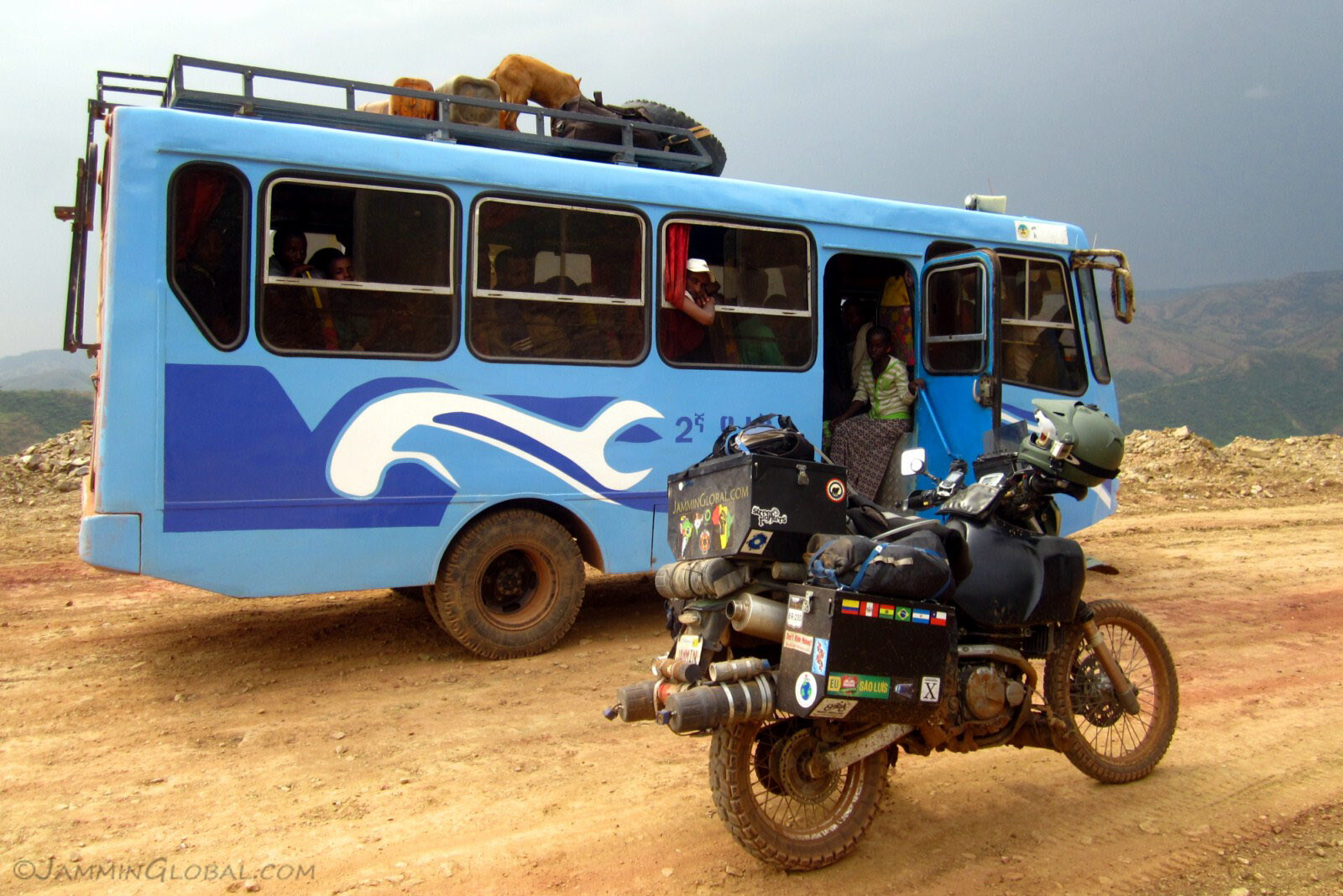 A local bus waiting with me at the construction site. Note the goat on the roof. I wonder how the locals perceive me.
A local bus waiting with me at the construction site. Note the goat on the roof. I wonder how the locals perceive me.
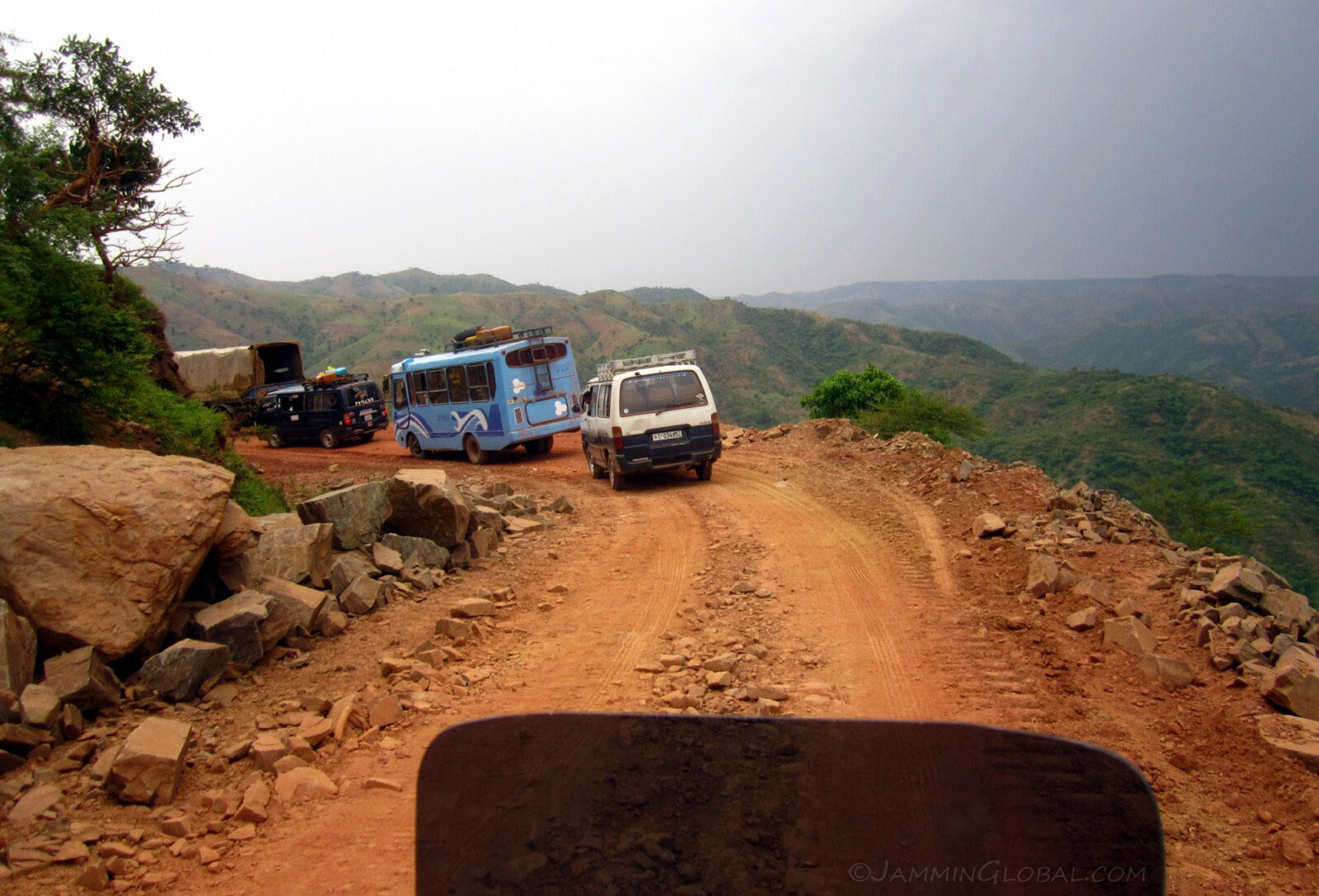 Our small convoy of vehicles making it down the newly cleared road. The surface was loose and I was wary of sharp rocks as I didn't want a puncture with heavy rains coming. The darkness loomed to my right.
Our small convoy of vehicles making it down the newly cleared road. The surface was loose and I was wary of sharp rocks as I didn't want a puncture with heavy rains coming. The darkness loomed to my right.
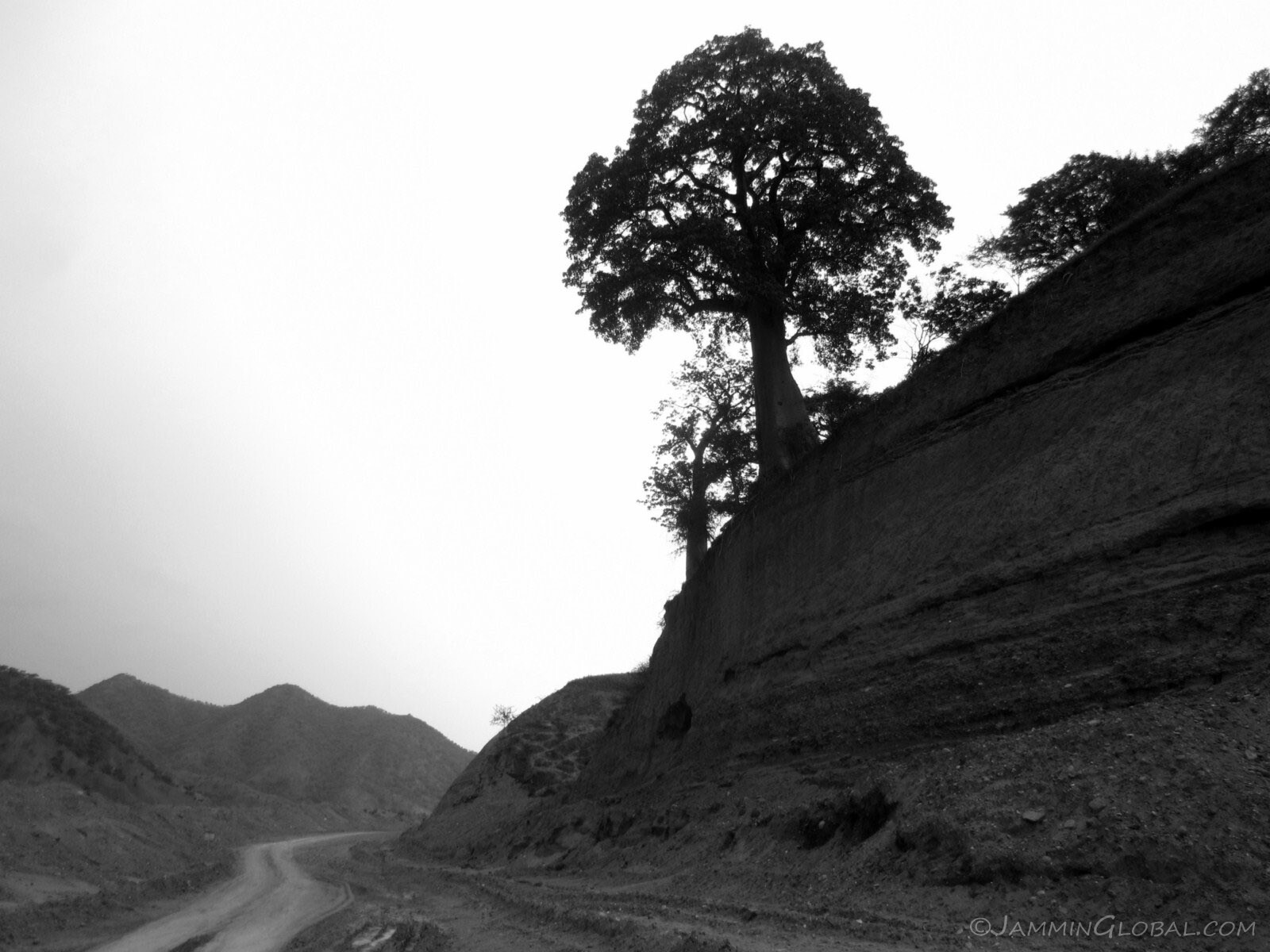 In the name of progress and development, we humans push nature to the brink, strangling her and not leaving her space to breathe. That tree looks like it's ready to commit suicide, which will probably happen soon as the land gives way during the rainy season onslaught.
In the name of progress and development, we humans push nature to the brink, strangling her and not leaving her space to breathe. That tree looks like it's ready to commit suicide, which will probably happen soon as the land gives way during the rainy season onslaught.
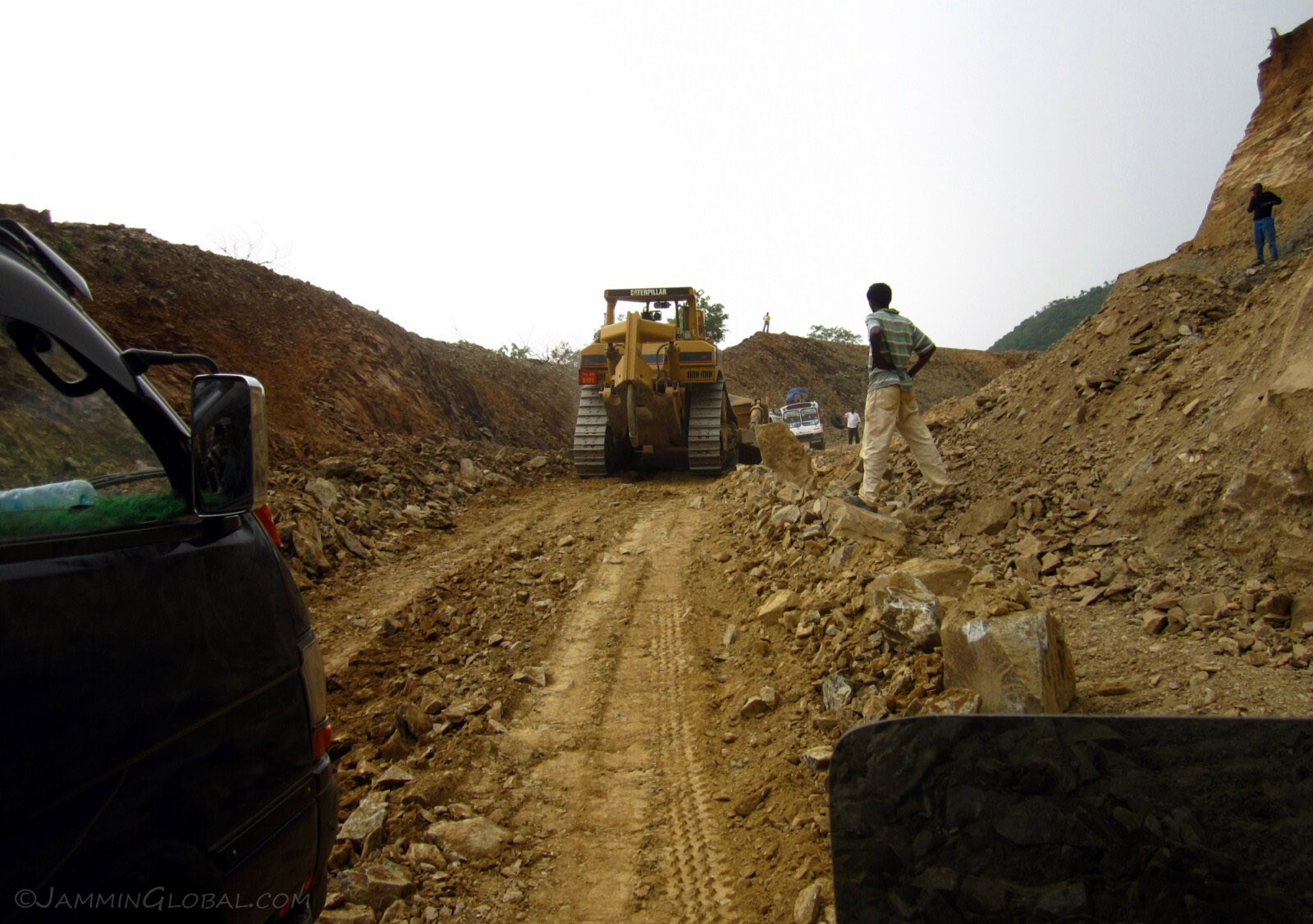 Slowly inching our way behind a bulldozer over the loose and rocky surface. There was a scary moment when the dozer started backing up with me right behind it and shouts from people around alerted the driver and gave me some time to get out of the way, which was not easy with a heavily-loaded bike on an incline over a loose surface. At least it wasn't raining.
Slowly inching our way behind a bulldozer over the loose and rocky surface. There was a scary moment when the dozer started backing up with me right behind it and shouts from people around alerted the driver and gave me some time to get out of the way, which was not easy with a heavily-loaded bike on an incline over a loose surface. At least it wasn't raining.
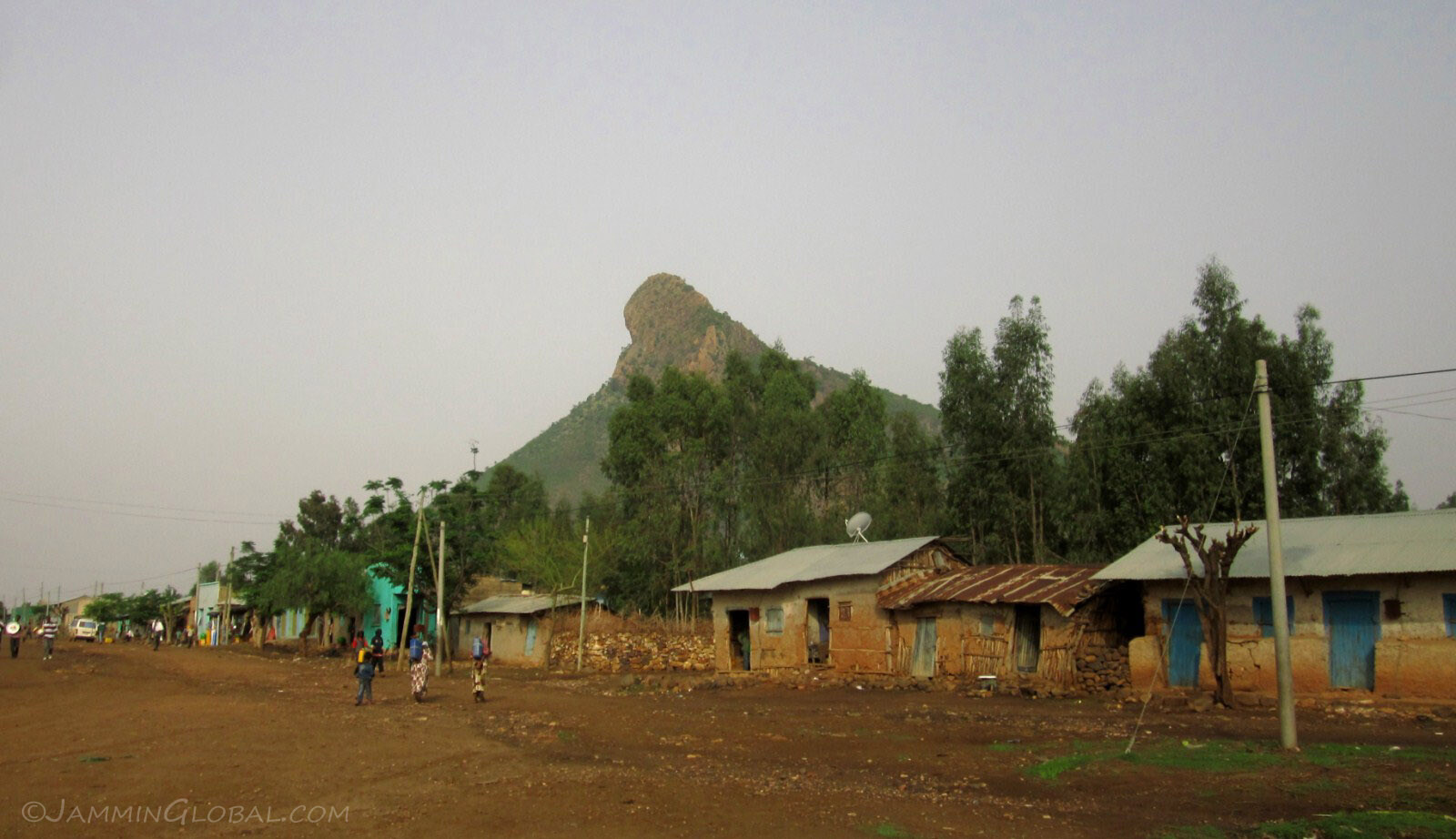 I made it to the small town of Indabaguna just as the rains started and was glad to be done with the tension of riding through precarious construction zones.
I made it to the small town of Indabaguna just as the rains started and was glad to be done with the tension of riding through precarious construction zones.
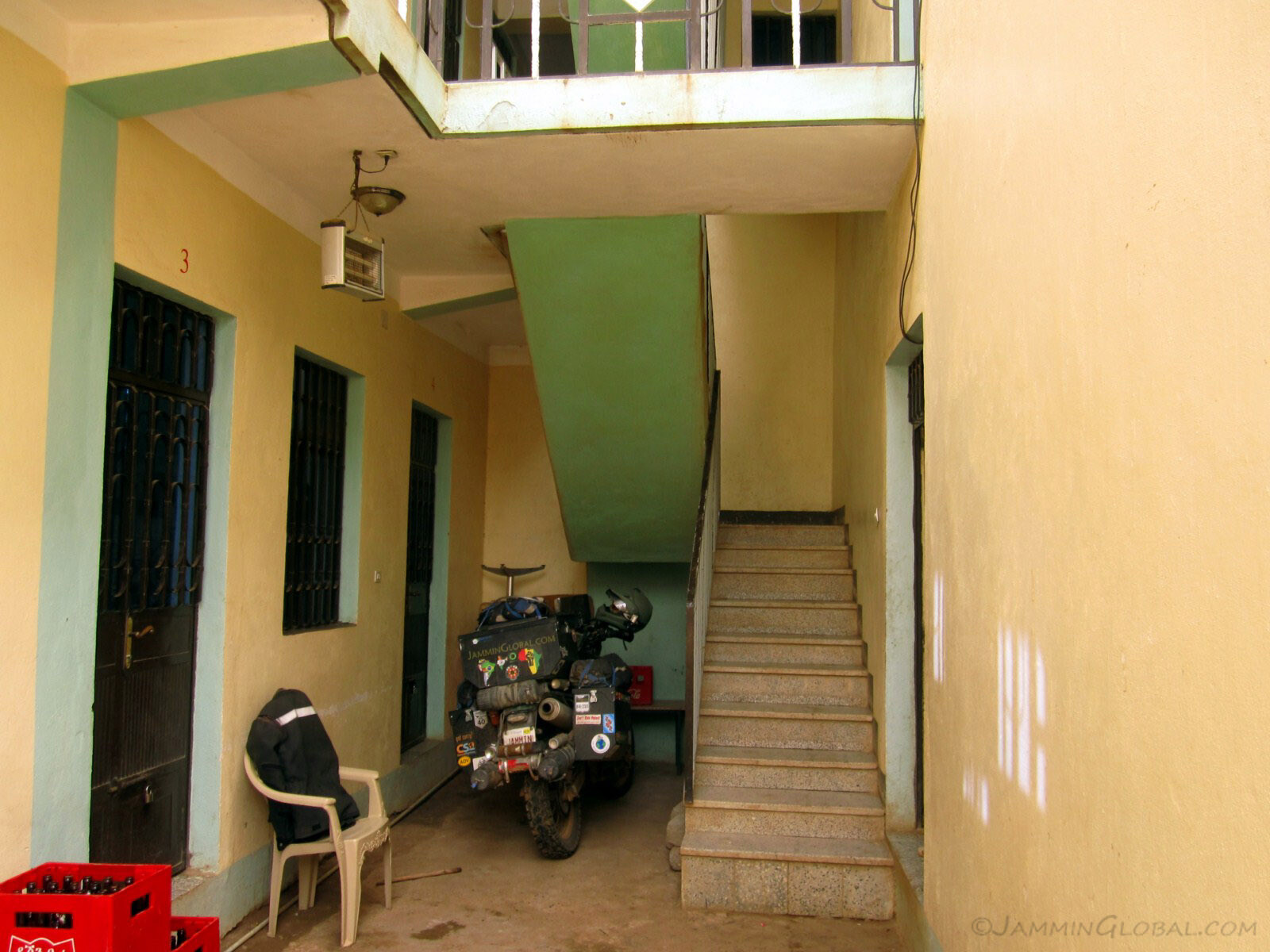 Parking up at Global Hotel for Birr 40 (\$2.37).
Parking up at Global Hotel for Birr 40 (\$2.37).
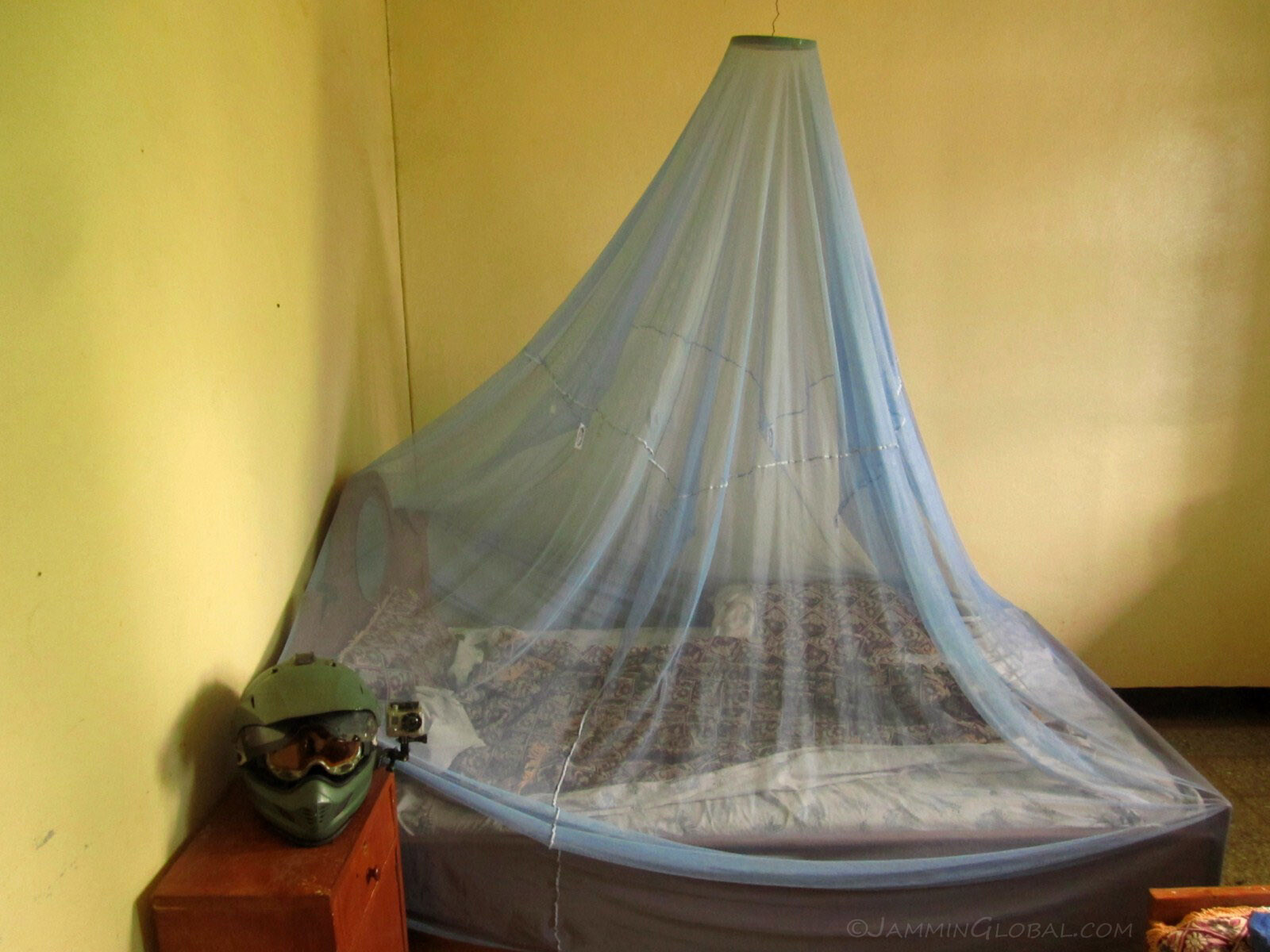 Nice accommodation with a mosquito net that came with lots of holes but I had a mirror in the headboard, oooh.
Nice accommodation with a mosquito net that came with lots of holes but I had a mirror in the headboard, oooh.
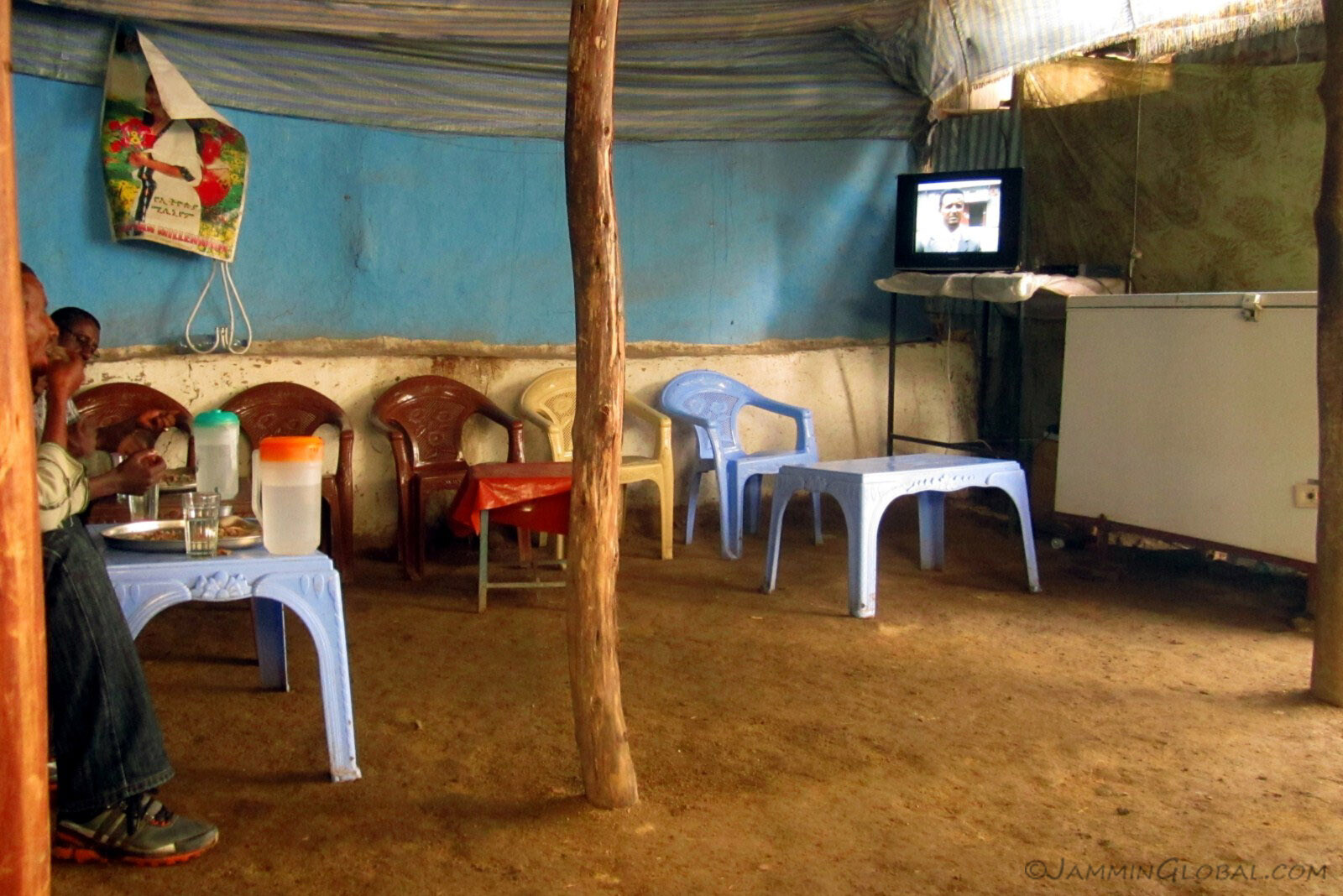 Getting some breakfast at a nearby restaurant of...
Getting some breakfast at a nearby restaurant of...
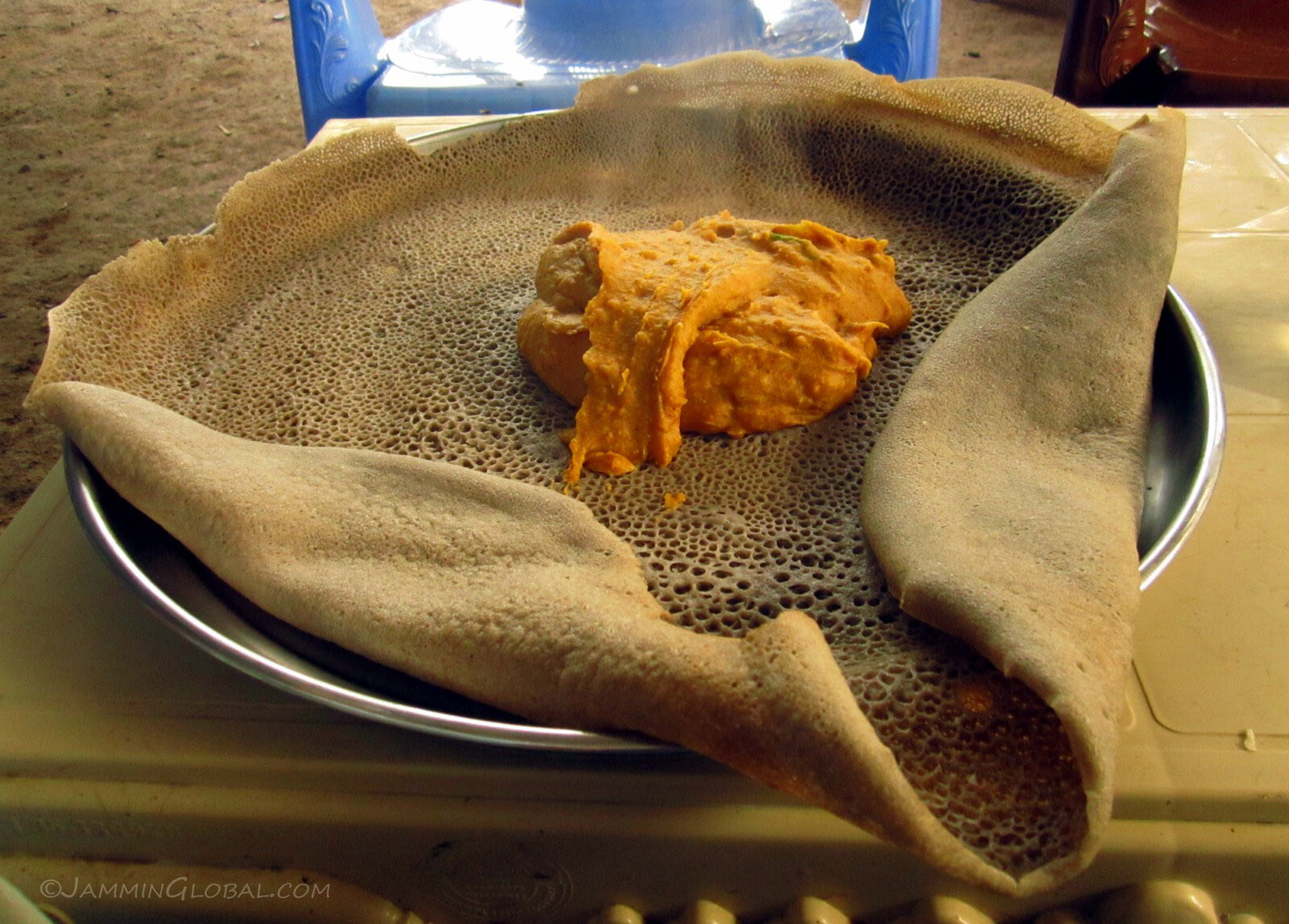 ...injera with tagabino for Birr 14 (\$0.83). It doesn't exactly look appetizing to western palates, but it's oh so tasty. Tagabino is similar to shiro, which is made from ground chickpea (garbanzo) flour, the basis for hummus, to which fried onions and Ethiopia's unique berbere spice mix is blended in. This is the cheapest and most basic food of Ethiopia, their staple.
...injera with tagabino for Birr 14 (\$0.83). It doesn't exactly look appetizing to western palates, but it's oh so tasty. Tagabino is similar to shiro, which is made from ground chickpea (garbanzo) flour, the basis for hummus, to which fried onions and Ethiopia's unique berbere spice mix is blended in. This is the cheapest and most basic food of Ethiopia, their staple.
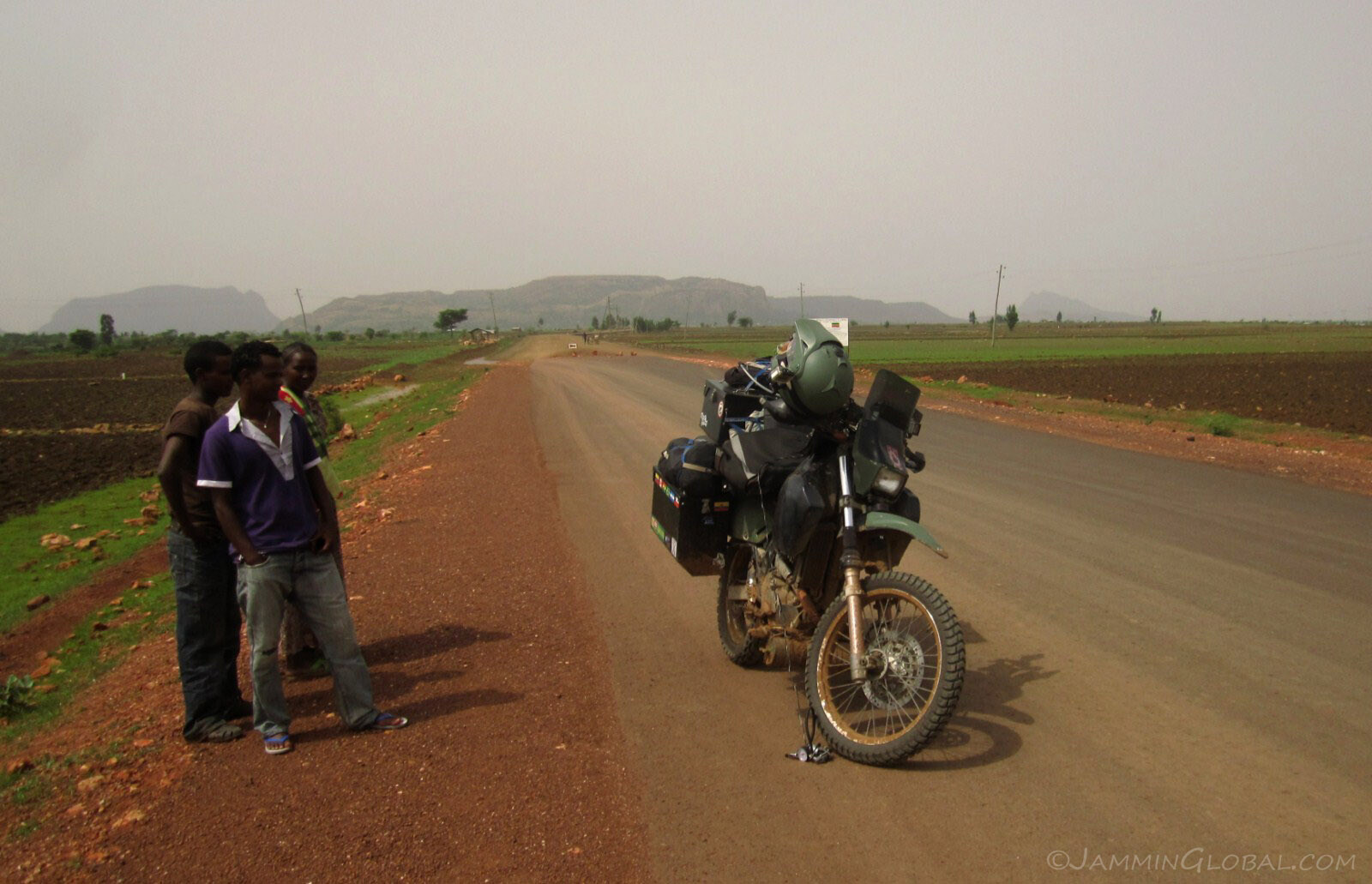 Within a few kilometers of rolling out of Indabaguna, the off-road ended as I had met the reaches of asphalt. It was time to air up the tires with my mini electrical air compressor. sanDRina loves a good audience and these three guys appeared and just stared and wondered.
Within a few kilometers of rolling out of Indabaguna, the off-road ended as I had met the reaches of asphalt. It was time to air up the tires with my mini electrical air compressor. sanDRina loves a good audience and these three guys appeared and just stared and wondered.
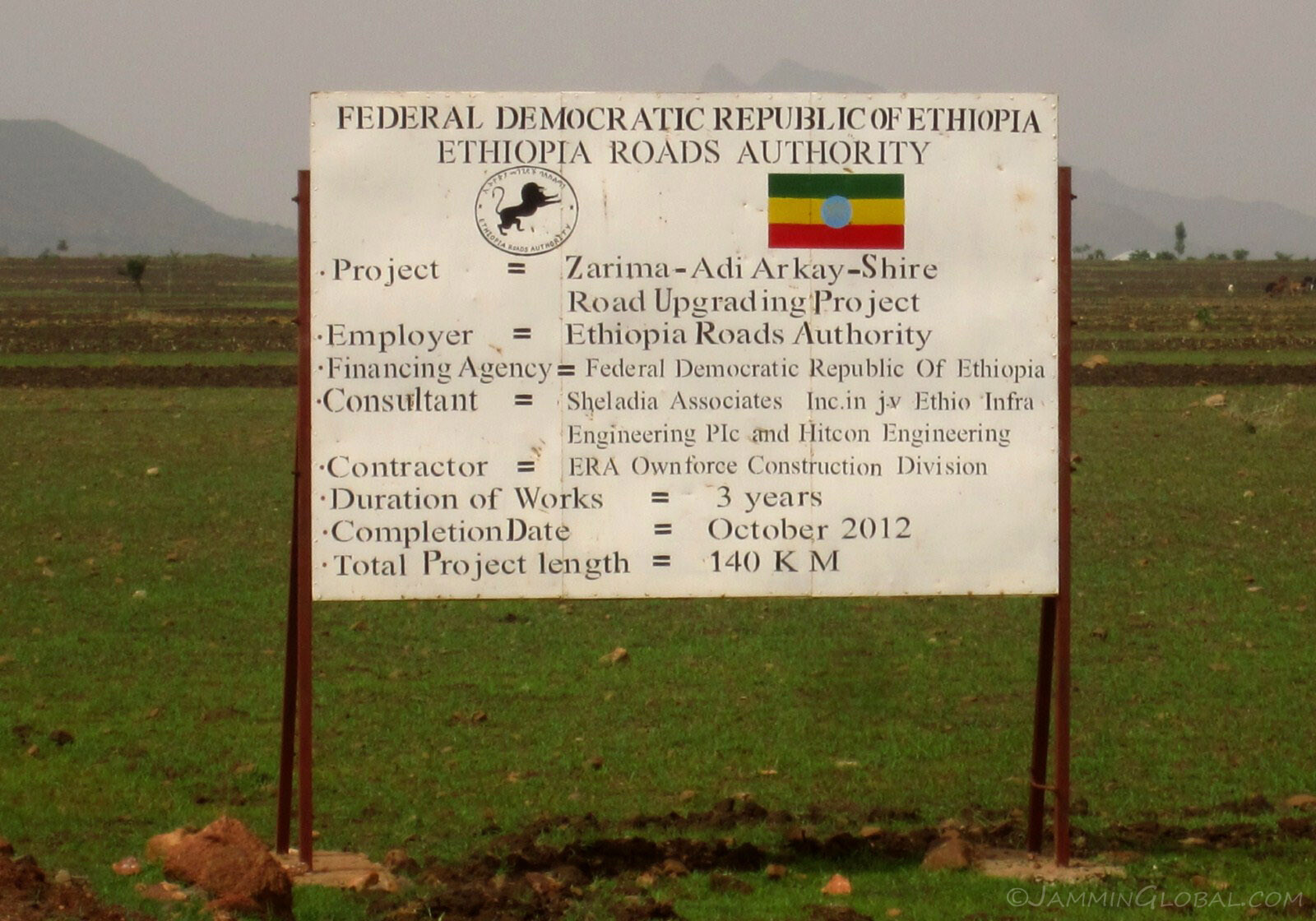 A sign board indicating that the construction work from here to Adi Arkay would be complete by October, 2012, which I highly doubt. I talked to a civil engineer at breakfast in Adi Arkay and he said they planned to have the entire route paved from Shire to Gondar in about five years. So, there's still time to experience the untamed northern highlands of Ethiopia.
A sign board indicating that the construction work from here to Adi Arkay would be complete by October, 2012, which I highly doubt. I talked to a civil engineer at breakfast in Adi Arkay and he said they planned to have the entire route paved from Shire to Gondar in about five years. So, there's still time to experience the untamed northern highlands of Ethiopia.
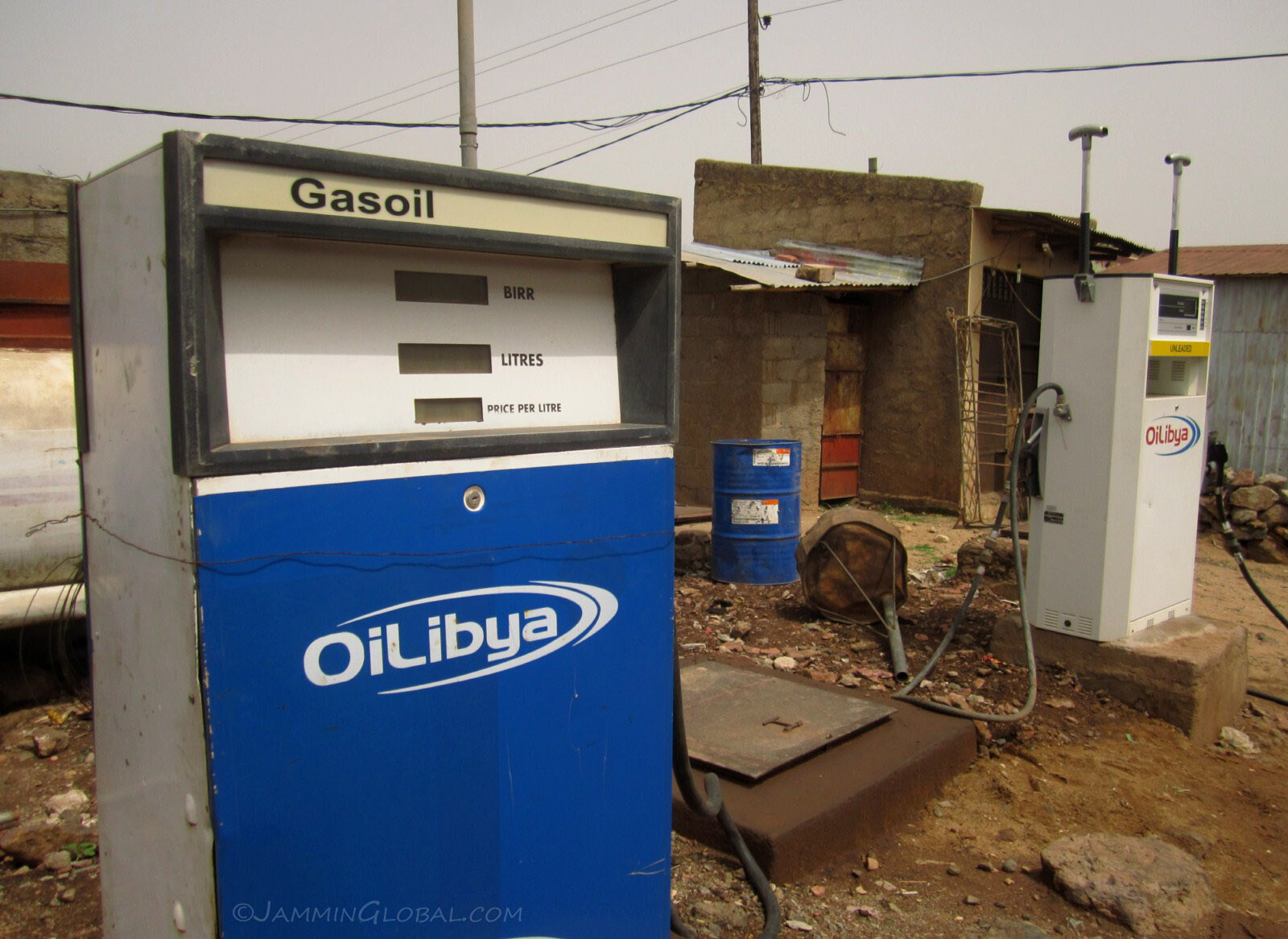 Rolling into Shire and happy to see sanDRina's life line, a proper petrol station. The conflict in Libya was raging full-on and I was wondering if I should have any moral issues about filling up with Libya's oil at this moment. Oh and remember not to confuse gasoil for gasoline, which refers to diesel.
Rolling into Shire and happy to see sanDRina's life line, a proper petrol station. The conflict in Libya was raging full-on and I was wondering if I should have any moral issues about filling up with Libya's oil at this moment. Oh and remember not to confuse gasoil for gasoline, which refers to diesel.
I enjoyed these two days of proper off-road riding in the remote highlands of northern Ethiopia. I knew it would be worth it just for the epic views of the Semien Mountains, not counting the great joy of motoring through beautifully-built roads into the mountainsides. I feel in my true essence when I'm out, away from civilization, and content that I have the right tools to enjoy and thrive in such situations.
Next: Ethiopia, Part 6: Historical Axum and Mountainous Twisties
Previous: Ethiopia, Part 4: The Semien Mountains, The Roof of Africa
